- Subscribe to BBC Science Focus Magazine
- Previous Issues
- Future tech
- Everyday science
- Planet Earth
- Newsletters

Everything you need to know about space travel (almost)
We're a long way from home...
Paul Parsons
When did we first start exploring space?
The first human-made object to go into space was a German V2 missile , launched on a test flight in 1942. Although uncrewed, it reached an altitude of 189km (117 miles).
Former Nazi rocket scientists were later recruited by both America and Russia (often at gunpoint in the latter case), where they were instrumental in developing Intercontinental Ballistic Missiles (ICBMs) – rockets capable of carrying nuclear weapons from one side of the planet to the other.

It was these super-missiles that formed the basis for the space programmes of both post-war superpowers. As it happened, Russia was the first to reach Earth orbit, when it launched the uncrewed Sputnik 1 in October 1957, followed a month later by Sputnik 2, carrying the dog Laika – the first live animal in space.
The USA sent its first uncrewed satellite, Explorer 1, into orbit soon after, in January 1958. A slew of robotic spaceflights followed, from both sides of the Atlantic, before Russian cosmonaut Yuri Gagarin piloted Vostok 1 into orbit on 12 April 1961, to become the first human being in space . And from there the space race proper began, culminating in Neil Armstrong and Buzz Aldrin becoming the first people to walk on the Moon as part of NASA's Apollo programme .
Why is space travel important?
Space exploration is the future. It satisfies the human urge to explore and to travel, and in the years and decades to come it could even provide our species with new places to call home – especially relevant now, as Earth becomes increasingly crowded .
Extending our reach into space is also necessary for the advancement of science. Space telescopes like the Hubble Space Telescope and probes to the distant worlds of the Solar System are continually updating, and occasionally revolutionising, our understanding of astronomy and physics.
- Subscribe to the Science Focus Podcast on these services: Acast , iTunes , Stitcher , RSS , Overcast
But there are also some very practical reasons, such as mining asteroids for materials that are extremely rare here on Earth.
One example is the huge reserve of the chemical isotope helium-3 thought to be locked away in the soil on the surface of the Moon . This isotope is a potential fuel for future nuclear fusion reactors – power stations that tap into the same source of energy as the Sun. Unlike other fusion fuels, helium-3 gives off no hard-to-contain and deadly neutron radiation.
However, for this to happen the first challenge to overcome is how to build a base on the Moon. In 2019, China's Chang’e 4 mission marked the beginning of a new space race to conquer the Moon, signalling their intent to build a permanent lunar base , while the NASA Artemis mission plans to build a space station, called Lunar Orbital Platform-Gateway , providing a platform to ferry astronauts to the Moon's surface.
Could humans travel into interstellar space and how would we get there?
It’s entirely feasible that human explorers will visit the furthest reaches of our Solar System. The stars, however, are another matter. Interstellar space is so vast that it takes light – the fastest thing we know of in the Universe – years, centuries and millennia to traverse it. Faster-than-light travel may be possible one day, but is unlikely to become a reality in our lifetimes.
It’s not impossible that humans might one day cross this cosmic gulf, though it won’t be easy. The combustion-powered rocket engines of today certainly aren’t up to the job – they just don’t use fuel efficiently enough. Instead, interstellar spacecraft may create a rocket-like propulsion jet using electric and magnetic fields. This so-called ‘ ion drive ’ technology has already been tested aboard uncrewed Solar System probes.

Another possibility is to push spacecraft off towards the stars using the light from a high-powered laser . A consortium of scientists calling themselves Breakthrough Starshot is already planning to send a flotilla of tiny robotic probes to our nearest star, Proxima Centauri, using just this method.
Though whether human astronauts could survive such punishing acceleration, or the decades-long journey through deep space, remains to be seen.
How do we benefit from space exploration?
Pushing forward the frontiers of science is the stated goal of many space missions . But even the development of space travel technology itself can lead to unintended yet beneficial ‘spin-off’ technologies with some very down-to-earth applications.
Notable spin-offs from the US space programme, NASA, include memory foam mattresses, artificial hearts, and the lubricant spray WD-40. Doubtless, there are many more to come.
Read more about space exploration:
- The next giant leaps: The UK missions getting us to the Moon
- Move over, Mars: why we should look further afield for future human colonies
- Everything you need to know about the Voyager mission
- 6 out-of-this-world experiments recreating space on Earth
Space exploration also instils a sense of wonder, it reminds us that there are issues beyond our humdrum planet and its petty squabbles, and without doubt it helps to inspire each new generation of young scientists. It’s also an insurance policy. We’re now all too aware that global calamities can and do happen – for instance, climate change and the giant asteroid that smashed into the Earth 65 million years ago, leading to the total extinction of the dinosaurs .
The lesson for the human species is that we keep all our eggs in one basket at our peril. On the other hand, a healthy space programme, and the means to travel to other worlds, gives us an out.
Is space travel dangerous?
In short, yes – very. Reaching orbit means accelerating up to around 28,000kph (17,000mph, or 22 times the speed of sound ). If anything goes wrong at that speed, it’s seldom good news.
Then there’s the growing cloud of space junk to contend with in Earth's orbit – defunct satellites, discarded rocket stages and other detritus – all moving just as fast. A five-gram bolt hitting at orbital speed packs as much energy as a 200kg weight dropped from the top of an 18-storey building.

And getting to space is just the start of the danger. The principal hazard once there is cancer-producing radiation – the typical dose from one day in space is equivalent to what you’d receive over an entire year back on Earth, thanks to the planet’s atmosphere and protective magnetic field.
Add to that the icy cold airless vacuum , the need to bring all your own food and water, plus the effects of long-duration weightlessness on bone density, the brain and muscular condition – including that of the heart – and it soon becomes clear that venturing into space really isn’t for the faint-hearted.
When will space travel be available to everyone?
It’s already happening – that is, assuming your pockets are deep enough. The first self-funded ‘space tourist’ was US businessman Dennis Tito, who in 2001 spent a week aboard the International Space Station (ISS) for the cool sum of $20m (£15m).
Virgin Galactic has long been promising to take customers on short sub-orbital hops into space – where passengers get to experience rocket propulsion and several minutes of weightlessness, before gliding back to a runway landing on Earth, all for $250k (£190k). In late July 2020, the company unveiled the finished cabin in its SpaceShipTwo vehicle, suggesting that commercial spaceflights may begin shortly.

Meanwhile, Elon Musk’s SpaceX , which in May 2020 became the first private company to launch a human crew to Earth orbit aboard the Crew Dragon , plans to offer stays on the ISS for $35k (£27k) per night. SpaceX is now prototyping its huge Starship vehicle , which is designed to take 100 passengers from Earth to as far afield as Mars for around $20k (£15k) per head. Musk stated in January that he hoped to be operating 1,000 Starships by 2050.
10 Short Lessons in Space Travel by Paul Parsons is out now (£9.99, Michael O'Mara)
- Buy now from Amazon UK , Foyles , WH Smith and Wordery
Share this article

- Terms & Conditions
- Privacy policy
- Cookies policy
- Code of conduct
- Magazine subscriptions
- Manage preferences
- SUGGESTED TOPICS
- The Magazine
- Newsletters
- Managing Yourself
- Managing Teams
- Work-life Balance
- The Big Idea
- Data & Visuals
- Reading Lists
- Case Selections
- HBR Learning
- Topic Feeds
- Account Settings
- Email Preferences
The Commercial Space Age Is Here
- Matthew Weinzierl
- Mehak Sarang

In May of 2020, SpaceX made history as the first private company to send humans into space. This marks not only a tremendous technological achievement, but also the first indication that an entirely new “space-for-space” industry — that is, goods and services designed to supply space-bound customers — could be close at hand. In the first stage of this burgeoning economy, private companies must sell to NASA and other government customers, since today, those organizations are the only source of in-space demand. But as SpaceX has demonstrated, private companies now have not just the desire, but also the ability to send people into space. And once we have private citizens in space, SpaceX and other companies will be poised to supply the demand they’ve created, creating a market that could dwarf the current government-led space industry (and eventually, the entire terrestrial economy as well). It’s a huge opportunity — now our task is simply to seize it.
Private space travel is just the beginning.
There’s no shortage of hype surrounding the commercial space industry. But while tech leaders promise us moon bases and settlements on Mars, the space economy has thus far remained distinctly local — at least in a cosmic sense. Last year, however, we crossed an important threshold: For the first time in human history, humans accessed space via a vehicle built and owned not by any government, but by a private corporation with its sights set on affordable space settlement . It was the first significant step towards building an economy both in space and for space. The implications — for business, policy, and society at large — are hard to overstate.
- MW Matthew Weinzierl is the Joseph and Jacqueline Elbling Professor of Business Administration at Harvard Business School and a research associate at the National Bureau of Economic Research. His teaching and research focus on the design of economic policy and the economics and business of space.
- MS Mehak Sarang is a Research Associate at Harvard Business School and the Lunar Exploration Projects Lead for the MIT Space Exploration Initiative.
Partner Center
MIT Technology Review
- Newsletters
What’s next in space
The moon, private space travel, and the wider solar system will all have major missions over the next 12 months.
- Jonathan O'Callaghan archive page
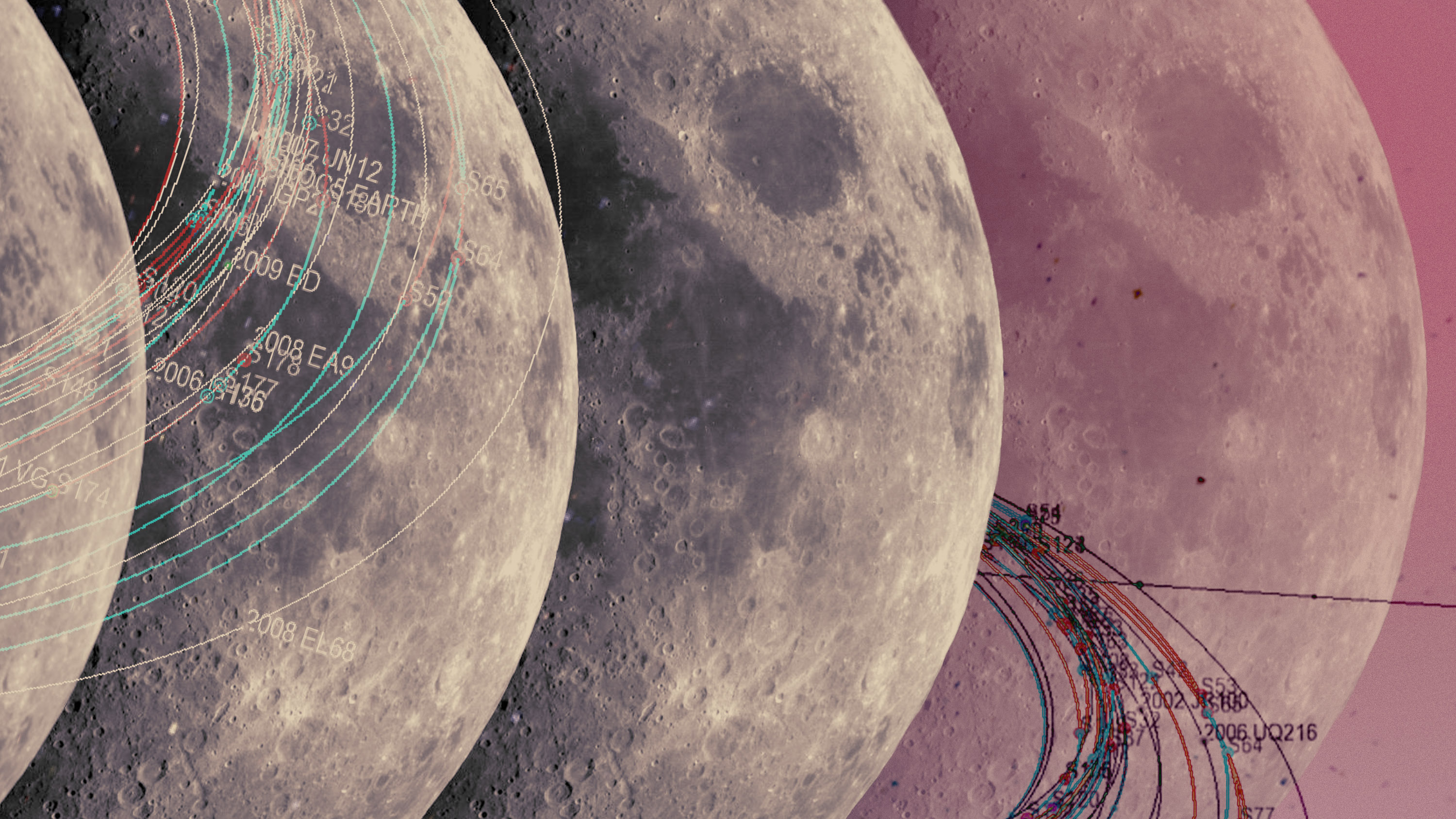
We’re going back to the moon—again—in 2023. Multiple uncrewed landings are planned for the next 12 months, spurred on by a renewed effort in the US to return humans to the lunar surface later this decade. Both private space companies and national agencies are set to make the 240,000-mile trek to our celestial neighbor, where they will test landing capabilities, look for usable water ice , and more.
Previous years were “all about Mars,” says Jill Stuart, a space policy expert from the London School of Economics in the UK. “Now we’ve shifted back to the moon.”
That is not all 2023 has in store. We’re also likely to see significant strides made in private human spaceflight, including the first-ever commercial spacewalk, compelling missions heading out into—or back from—other solar system destinations, and new rockets set to take flight.
Here’s what the next year has lined up for space.
Moon landings
A lunar lander will already be on its way when 2023 begins. Launched in December on a SpaceX Falcon 9 rocket, the private spacecraft Hakuto-R, developed by Japanese firm ispace , is on a four-month journey to reach the moon , where it will deploy rovers built by the space agencies of Japan and the United Arab Emirates, among other goals. If successful, Hakuto-R could become the first private mission to land on the moon in March.
We say “could” because two private landers from the US—one from the firm Astrobotic and the other from Intuitive Machines, called Peregrine and Nova-C, respectively—are also set to reach the moon around the same time. Both are NASA-backed missions with various instruments on board to study the lunar environment, part of the agency’s Commercial Lunar Payloads Services program, which aims to spur commercial interest in the moon ahead of human missions planned for later this decade under its Artemis program.
The first part of that program, Artemis I, saw an uncrewed Orion spacecraft launch to the moon on NASA’s giant new Space Launch System rocket in November 2022. While the next Artemis mission, a crewed flight around the moon, is not planned until 2024, these next 12 months will lay important groundwork for Artemis by studying the moon’s surface and even looking for water ice that could be a potential target for future human missions, among other goals. “The moon is getting a lot more attention than it has done for many years,” says Jon Cowart, a former NASA human spaceflight manager now at the Aerospace Corporation in the US.
Intuitive Machines has a second lunar landing planned in 2023. Also on the books are landings from the space agencies of India and Japan, with Chandrayaan-3 and SLIM (Smart Lander for Investigating Moon) , respectively. India hopes to launch in August 2023. It will be the country’s second attempt—the first crash-landed on the moon in 2019. A date for SLIM, which will test precision landing on the moon, has not yet been set. Russia reportedly has plans for the moon in 2023 too with its Luna-25 lander, but the status of the mission is unclear.
Private space travel
Since May 2020, SpaceX has been using its Crew Dragon spacecraft to ferry astronauts to space, some to the International Space Station (ISS) under contract with NASA and others on private missions. But SpaceX’s Polaris Dawn mission , currently slated for March 2023, will be a big new step.
Four commercial astronauts, including billionaire Jared Isaacman, who is paying for the flight and also funded SpaceX’s first all-private human spaceflight in 2021, will target a maximum orbit of 1,200 kilometers, higher than any human spacecraft since the Apollo missions. And in a first for commercial human spaceflight, the crew will don spacesuits and venture outside the spacecraft.
“Polaris Dawn is really exciting,” says Laura Forczyk from the space consulting firm Astralytical. “My understanding is that the entire vehicle will be evacuated. Everybody is going to at least stick their heads out.”
The mission may help NASA decide whether a future Crew Dragon mission could be used to service the Hubble Space Telescope, a capability that the agency has been investigating with SpaceX. “We’ll have some idea whether it’s feasible,” says Forczyk.
Two more private missions using Crew Dragon—Axiom-2 and Axiom-3—are planned to head for the ISS in 2023, as well as two NASA flights using Crew Dragon. A competing vehicle from the US firm Boeing is also set to launch with crew for the first time in April 2023, following multiple delays .
Meanwhile, we wait to see if Jeff Bezos’s company Blue Origin will be allowed to launch with humans again. The company has been grounded following an uncrewed launch failure in September 2022. Another private spaceflight pioneer, Virgin Galactic, has been relatively quiet since it launched its founder Sir Richard Branson into space in July 2021.
All these developments in commercial human spaceflight may be overshadowed by the first orbital flight attempt of SpaceX’s massive and reusable Starship rocket, which was undergoing launchpad tests earlier this month and should launch in 2023, if not by the end of 2022.
If successful, the rocket, which would surpass NASA’s Space Launch System as the largest rocket to make it to orbit, could transform our exploration of space . “The ability to take more mass up opens up new opportunities,” says Uma Bruegman, an expert in space strategies at the Aerospace Corporation. That could include, one day, human missions to Mars—or beyond. But there’s a long way to go yet. “It’s definitely an important year [for Starship],” says Cowart. “They’ve got a lot to do.” One of its nearer-term goals will be preparing for the moon—NASA chose Starship’s upper stage as the initial lunar lander for the Artemis program.
Into the solar system
Moons of the solar system’s biggest planet are also on the agenda next year. April 2023 will see a gripping new mission launch from the European Space Agency (ESA) called JUICE, for “Jupiter Icy Moons Explorer.” Scheduled to arrive in orbit at Jupiter in 2031, the spacecraft will perform detailed studies of the Jovian moons Ganymede, Callisto, and Europa, all of which are thought to harbor oceans that could contain life beneath their icy surfaces.
“It’s the first mission that’s fundamentally focused on the icy moons,” says Mark McCaughrean, senior advisor for science and exploration at ESA. “We now know these icy moons have very deep water oceans, and they could have the conditions for life to have developed.”
JUICE will map these oceans with radar instruments, but McCaughrean says it will also be able to look for possible biosignatures on the surface of Europa’s ice, which could rain down from plumes ejected into space from its subsurface ocean.
Later in 2023, ESA is scheduled to see another major mission launch: its Euclid telescope, which was switched from a Russian rocket to a SpaceX Falcon 9 rocket following Russia’s invasion of Ukraine. The telescope will probe the “dark universe,” observing billions of galaxies over a third of the sky to better understand dark matter and dark energy in the cosmos.
In October, NASA should launch a significant science mission of its own when Psyche takes flight following a delay from 2022. The spacecraft will head to 16 Psyche, an unusual metal-rich asteroid that has never been seen up close.
A number of other intriguing developments are expected in 2023. NASA’s OSIRIS-REx mission is scheduled to return to Earth in September with pieces of an asteroid called Bennu, which could offer new insight into the structure and formation of the solar system. Amazon aims to send up the first satellites for Project Kuiper in early 2023, the start of a 3,000-satellite orbiting communications network it hopes will rival SpaceX’s Starlink constellation. And several new rockets are set to launch, including the United Launch Alliance’s Vulcan Centaur rocket (it will carry Astrobotic’s moon lander and some of Amazon's satellites) and possibly Blue Origin’s large New Glenn rocket. Both are heavy-lift rockets that could take many satellites into space.
“There’s a huge swathe of activity,” says Cowart. “I’m very excited about this year.”
Keep Reading
Most popular, large language models can do jaw-dropping things. but nobody knows exactly why..
And that's a problem. Figuring it out is one of the biggest scientific puzzles of our time and a crucial step towards controlling more powerful future models.
- Will Douglas Heaven archive page
How scientists traced a mysterious covid case back to six toilets
When wastewater surveillance turns into a hunt for a single infected individual, the ethics get tricky.
- Cassandra Willyard archive page
The problem with plug-in hybrids? Their drivers.
Plug-in hybrids are often sold as a transition to EVs, but new data from Europe shows we’re still underestimating the emissions they produce.
- Casey Crownhart archive page
It’s time to retire the term “user”
The proliferation of AI means we need a new word.
- Taylor Majewski archive page
Stay connected
Get the latest updates from mit technology review.
Discover special offers, top stories, upcoming events, and more.
Thank you for submitting your email!
It looks like something went wrong.
We’re having trouble saving your preferences. Try refreshing this page and updating them one more time. If you continue to get this message, reach out to us at [email protected] with a list of newsletters you’d like to receive.
20 Inventions We Wouldn't Have Without Space Travel


News | June 29, 2021
After 60 years, nuclear power for spaceflight is still tried and true.
Six decades after the launch of the first nuclear-powered space mission, Transit IV-A, NASA is embarking on a bold future of human exploration and scientific discovery. This future builds on a proud history of safely launching and operating nuclear-powered missions in space.
“Nuclear power has opened the solar system to exploration, allowing us to observe and understand dark, distant planetary bodies that would otherwise be unreachable. And we’re just getting started,” said Dr. Thomas Zurbuchen, associate administrator for NASA's Science Mission Directorate. “Future nuclear power and propulsion systems will help revolutionize our understanding of the solar system and beyond and play a crucial role in enabling long-term human missions to the Moon and Mars.”
From Humble Beginnings: Nuclear Power Spawns an Age of Scientific Discovery
On June 29, 1961, the John’s Hopkins University Applied Physics Laboratory launched the Transit IV-A Spacecraft. It was a U.S. Navy navigational satellite with a SNAP-3B radioisotope powered generator producing 2.7 watts of electrical power -- about enough to light an LED bulb. Transit IV-A broke an APL mission-duration record and confirmed the Earth’s equator is elliptical. It also set the stage for ground-breaking missions that have extended humanity’s reach across the solar system.
“Nuclear power has opened the solar system to exploration, allowing us to observe and understand dark, distant planetary bodies that would otherwise be unreachable. And we’re just getting started." - Thomas Zurbuchen, associate administrator for NASA's Science Mission Directorate
Since 1961, NASA has flown more than 25 missions carrying a nuclear power system through a successful partnership with the Department of Energy (DOE), which provides the power systems and plutonium-238 fuel.
“The department and our national laboratory partners are honored to play a role in powering NASA’s space exploration activities,” said Tracey Bishop, deputy assistant secretary in DOE’s Office of Nuclear Energy. “Radioisotope Power Systems are a natural extension of our core mission to create technological solutions that meet the complex energy needs of space research, exploration, and innovation.”
There are only two practical ways to provide long-term electrical power in space: the light of the sun or heat from a nuclear source.
“As missions move farther away from the Sun to dark, dusty, and harsh environments, like Jupiter, Pluto, and Titan, they become impossible or extremely limited without nuclear power,” said Leonard Dudzinski, chief technologist for NASA’s Planetary Science Division and program executive for Radioisotope Power.
"RPS systems are reliable and efficient. They operate continuously over long-duration space missions regardless of sunlight, temperature, charged particle radiation, or surface conditions like thick clouds or dust.” - June Zakrajsek, manager for NASA’s RPS Program office at Glenn Research Center in Cleveland
That’s where Radioisotope Power System s, or RPS, come in. They are a category of power systems that convert heat generated by the decay of plutonium-238 fuel into electricity.
“These systems are reliable and efficient,” said June Zakrajsek, manager for NASA’s Radioisotope Power Systems Program office at Glenn Research Center in Cleveland. “They operate continuously over long-duration space missions regardless of sunlight, temperature, charged particle radiation, or surface conditions like thick clouds or dust. They’ve allowed us to explore from the Sun to Pluto and beyond.”
RPS powered the Apollo Lunar Surface Experiment Package . They’ve sustained Voyager 1 and 2 since 1977, and they kept Cassini-Huygens’ instruments warm as it explored frigid Saturn and its moon Titan.
Today, a Multi-Mission Thermoelectric Generator (MMRTG) powers the Perseverance rover, which is captivating the nation as it searches for signs of ancient life on Mars, and a single RTG is sustaining New Horizons as it ventures on its way out of the solar system 15 years after its launch.
“The RTG was and still is crucial to New Horizons,” said Alan Stern, New Horizons principal investigator from the Southwest Research Institute. “We couldn’t do the mission without it. No other technology exists to power a mission this far away from the sun, even today.”
Great Things to Come: Science and Human Exploration
Dragonfly, which is set to launch in 2027, is the next mission with plans to use an MMRTG. Part of NASA’s New Frontiers program, Dragonfly is an octocopter designed to explore and collect samples on Saturn’s largest moon, Titan, an ocean world with a dense, hazy atmosphere.
“RPS is really an enabling technology,” said APL’s Zibi Turtle, principal investigator for the upcoming Dragonfly mission. “Early missions like Voyager, Galileo, and Cassini that relied on RPS have completely changed our understanding and given us a geography of the distant solar system…Cassini gave us our first close-up look at the surface of Titan.”
According to Turtle, the MMRTG serves two purposes on Dragonfly: power output to charge the lander’s battery and waste heat to keep its instruments and electronics warm.
“RPS is really an enabling technology. Early missions like Voyager, Galileo, and Cassini that relied on RPS have completely changed our understanding and given us a geography of the distant solar system." - Zibi Turtle, APL, principal investigator for the upcoming Dragonfly mission
“Flight is a very high-power activity. We’ll use a battery for flight and science activities and recharge the battery using the MMRTG,” said Turtle. “The waste heat from the power system is a key aspect of our thermal design. The surface of Titan is very cold, but we can keep the interior of the lander warm and cozy using the heat from the MMRTG.”
As the scientific community continues to benefit from RPS, NASA’s Space Technology Mission Directorate is investing in new technology using reactors and low-enriched uranium fuel to enable a robust human presence on the Moon and eventually human missions to Mars.
Astronauts will need plentiful and continuous power to survive the long lunar nights and explore the dark craters on the Moon’s South Pole. A fission surface power system could provide enough juice to power robust operations. NASA is leading an effort, working with the DOE and industry to design a fission power system for a future lunar demonstration that will pave the way for base camps on the Moon and Mars.
NASA has also thought about viable ways to reduce the time it takes to travel to Mars, including nuclear propulsion systems.
As NASA advances its bold vision of exploration and scientific discovery in space, it benefits from 60 years of the safe use of nuclear power during spaceflight. Sixty years of enlightenment that all started with a little satellite called Transit IV-A.
News Media Contact Jan Wittry NASA's Glenn Research Center
You Might Also Like

Mobile Menu Overlay
The White House 1600 Pennsylvania Ave NW Washington, DC 20500
UNITED STATES SPACE PRIORITIES FRAMEWORK
Space activities are essential to our way of life. They advance our understanding of the Earth, the universe, and humanity; enable U.S. national security; create good jobs and economic opportunity; enhance our health and well-being; and inspire us to pursue our dreams. Space capabilities provide critical data, products, and services that drive innovation in the United States and around the world. Access to and use of space is a vital national interest.
We are in a historic moment: space activities are rapidly accelerating, resulting in new opportunities in multiple sectors of society, as well as new challenges to U.S. space leadership, global space governance, the sustainability of the space environment, and safe and secure space operations. Burgeoning U.S. space activities are a source of American strength at home and abroad – from providing tangible economic and societal benefits to Americans to expanding our network of alliances and partnerships. The United States will bolster the health and vitality of our space sectors – civil, commercial, and national security – for the benefit of the American people and leverage that strength to lead the international community in preserving the benefits of space for future generations.
U.S. Benefits from Space Activities
Space as a Source of American Innovation and Opportunity
Space data, products, and services provide tangible benefits and economic opportunity to the American people. Space exploration and discovery engages and inspires the next generation of Americans.
Space activities power our economy and our way of life. Data, products, and services from space enable American businesses and create American jobs in sectors as varied as manufacturing, transportation, logistics, agriculture, finance, and communications. We rely upon satellites to improve our lives and our communities, such as by enabling global navigation; assisting with crop yield prediction, water management, and power grid monitoring; and facilitating global telecommunications for applications ranging from banking to education to telemedicine.
Developing space technologies spurs innovation . American companies lead the world in pushing the frontier of space technologies and space applications. New space goods and services create new industries and jobs, such as in clean energy technology and broadband access, providing increased opportunities for equitable economic growth and development in historically underserved or disadvantaged communities. Furthermore, space activities fuel cutting-edge research and technology development, yielding new discoveries that improve the quality of life for people on Earth.
Space capabilities help us manage our resources; protect people, property, and the environment from extreme weather events; and address the climate crisis . Satellites collect information to monitor our changing planet and to protect our lands, oceans, and atmosphere. Data collected from space helps us improve national preparedness and reduce the impacts of extreme weather, natural disasters, and climate change in a manner that better addresses the needs of vulnerable communities.
Space inspires us. Space exploration and scientific discovery attracts people from across America and around the world to engage in science, technology, engineering, and mathematics (STEM). Bold and ambitious space missions demonstrate that our best years are ahead of us and that we are innovators and creators.
Space as a Source of American Leadership and Strength
The United States is the world leader in space. A robust space program enables us to expand our alliances and partnerships and underpins our military strength.
Space achievements demonstrate American leadership. U.S. human and robotic accomplishments in space unlock the mysteries of the universe and provide tangible measures of American technological capacity and our national ability to execute large-scale, complex projects. Our successes in space bolster our credibility and influence worldwide.
Space activities broaden and deepen our international partnerships . Our global network of alliances and partnerships is a strategic advantage of the United States. Worldwide interest in space offers the United States opportunities to expand this network while opening new avenues for U.S. leadership and collaboration with allies and partners.
Space underpins our national security and ability to respond decisively to crises around the world. Information collected from space informs national decision makers about evolving threats to U.S., allied, and partner interests. Space capabilities enable the U.S. military to protect and defend the U.S. homeland and to advance the national and collective security interests of the United States and its allies and partners. Space also enables the United States to respond to humanitarian crises more quickly and effectively.
U.S. Space Policy Priorities Maintaining a Robust and Responsible U.S. Space Enterprise
Reaping the current and future benefits of space requires that the United States maintain a vibrant space enterprise across the civil, commercial, and national security sectors.
The United States will maintain its leadership in space exploration and space science. The United States will remain a global leader in science and engineering by pioneering space research and technology that propels exploration of the Moon, Mars, and beyond. U.S. human and robotic space exploration missions will land the first woman and person of color on the Moon, advance a robust cislunar ecosystem, continue to leverage human presence in low-Earth orbit to enable people to live and work safely in space, and prepare for future missions to Mars and beyond. Scientific missions will investigate the origins of our universe and enhance understanding of the Earth, the Sun, and our solar system. The United States will continue to conduct these missions in a manner that furthers decades-long cooperation with established spacefaring nations and engages emerging spacefaring nations in new partnerships. Additionally, the United States will continue to leverage civil space activities to foster new commercial space services such as human space transportation and space stations in low Earth orbit.
The United States will advance the development and use of space‑based Earth observation capabilities that support action on climate change. The United States, through collaboration between the public, private, and philanthropic sectors, will accelerate the development and use of Earth observation to support climate change mitigation and adaptation. Open dissemination of Earth observation data will support both domestic and international efforts to address the climate crisis.
The United States will foster a policy and regulatory environment that enables a competitive and burgeoning U.S. commercial space sector. U.S. commercial space activities are on the cutting edge of space technology, space applications, and space-enabled services. To facilitate the growth of U.S. industry and support the creation of American jobs, the United States will clarify government and private sector roles and responsibilities and support a timely and responsive regulatory environment. U.S. regulations must provide clarity and certainty for the authorization and continuing supervision of non-governmental space activities, including for novel activities such as on-orbit servicing, orbital debris removal, space-based manufacturing, commercial human spaceflight, and recovery and use of space resources. To create free and fair market competition internationally, the United States will work with allies and partners to update and harmonize space policies, regulations, export controls, and other measures that govern commercial activities worldwide. Additionally, the United States will work with allies and partners to combat foreign government non-market practices, protect critical U.S. technologies and intellectual property, and reduce reliance on strategic competitors for key space capabilities. Such efforts will be informed by economic data and research to better understand the space economy and will reflect the importance of the responsible and sustainable use of space.
The United States will protect space-related critical infrastructure and strengthen the security of the U.S. space industrial base . Space systems are an essential component of U.S. critical infrastructure – by directly providing important services and by enabling other critical infrastructure sectors and industries. The United States will enhance the security and resilience of space systems that provide or support U.S. critical infrastructure from malicious activities and natural hazards. In particular, the United States will work with the commercial space industry and other non-governmental space developers and operators to improve the cybersecurity of space systems, ensure efficient spectrum access, and strengthen the resilience of supply chains across the nation’s space industrial base. Furthermore, the United States will enhance the protection of terrestrial critical infrastructure from space weather events, which can disrupt services such as electric power, telecommunications, water supply, health care, and transportation.
The United States will defend its national security interests from the growing scope and scale of space and counterspace threats . Intensifying strategic competition presents a serious threat to U.S. national security interests, including in space. The military doctrines of competitor nations identify space as critical to modern warfare and view the use of counterspace capabilities as a means both to reduce U.S. military effectiveness and to win future wars. Confrontation or conflict, however, is not inevitable. To deter aggression against U.S., allied, and partner interests in a manner that contributes to strategic stability, the United States will accelerate its transition to a more resilient national security space posture and strengthen its ability to detect and attribute hostile acts in space. The United States also will take steps to protect its military forces from space-enabled threats. As part of bolstering space mission assurance, the United States will leverage new commercial space capabilities and services to meet national security requirements and will deepen the integration of U.S. national security space capabilities and activities with those of our allies and partners. The United States also will engage diplomatically with strategic competitors in order to enhance stability in outer space. Finally, U.S. national security space operations will continue to comply with applicable international law and demonstrate leadership in both the responsible use of space and stewardship of the space environment.
The United States will invest in the next generation . Investing in STEM education is critical to continuing U.S. leadership into the next generation and preparing the nation’s STEM workforce to fuel the economy of the future. Our STEM ecosystem of public and private organizations will leverage space programs to educate our children as part of improving the scientific literacy of Americans and increasing diversity, equity, accessibility, and inclusion in scientific and technological fields. The United States is a diverse and multicultural society, and its space activities and workforce must reflect this composition. Furthermore, space information will continue to be made more accessible, providing inspiration and access to the benefits of space to more people than ever before. This includes working with commercial space entities to leverage the growing space economy to support historically underserved and underrepresented communities so that the benefits of space can accrue to all Americans.
Preserving Space for Current and Future Generations
As space activities evolve, the norms, rules, and principles that guide outer space activities also must evolve. The United States will lead in the responsible, peaceful, and sustainable exploration and use of outer space.
The United States will lead in strengthening global governance of space activities. The United States will engage the international community to uphold and strengthen a rules-based international order for space. The United States, working with commercial industry, allies, and partners, will promote the implementation of existing measures and lead in the development of new measures that contribute to the safety, stability, security, and long-term sustainability of space activities. The United States will demonstrate how space activities can be conducted in a responsible, peaceful, and sustainable manner.
The United States will bolster space situational awareness sharing and space traffic coordination. The United States will continue to share space situational awareness information and provide basic spaceflight safety services to all space operators. These services will be transferred to an open data platform, hosted by a U.S. civil agency, that leverages data and services provided from a variety of government, commercial, academic, and international sources. Working with industry and international partners, the United States will lead in the development and implementation of open, transparent, and credible international standards, policies, and practices that establish the foundation for global space traffic coordination.
The United States will prioritize space sustainability and planetary protection. The United States will work with other nations to minimize the impact of space activities on the outer space environment, including avoiding harmful contamination of other planetary bodies. The United States will increase efforts to mitigate, track, and remediate space debris. The United States will advance development and implementation of domestic and international best practices to mitigate the creation of space debris and will support efforts to evolve those practices to ensure continued safety of flight operations in the future. The United States also will continue to protect the Earth’s biosphere by avoiding biological contamination by spacecraft returning to Earth. The United States will lead, in cooperation with commercial industry and international allies and partners, in efforts to enhance warning of and mitigation against potential near-Earth object impacts.
Space activities benefit humanity. They power the global economy; underpin U.S., allied, and partner national security; improve the daily lives of Americans and people around the world; and inspire us to pursue our dreams. We are on the cusp of historic changes in access to and use of space – changes that have the potential to bring the benefits of space to more people and communities than ever before. The United States will harness the use of space to tackle the most pressing challenges at home and abroad, while leading the international community in preserving the benefits of space for current and future generations.
Stay Connected
We'll be in touch with the latest information on how President Biden and his administration are working for the American people, as well as ways you can get involved and help our country build back better.
Opt in to send and receive text messages from President Biden.
- Get Benzinga Pro
- Data & APIs
- Our Services
- News Earnings Guidance Dividends M&A Buybacks Legal Interviews Management Offerings IPOs Insider Trades Biotech/FDA Politics Government Healthcare
- Markets Pre-Market After Hours Movers ETFs Forex Cannabis Commodities Options Binary Options Bonds Futures CME Group Global Economics Previews Small-Cap Real Estate Cryptocurrency Penny Stocks Digital Securities Volatility
- Ratings Analyst Color Downgrades Upgrades Initiations Price Target
- Ideas Trade Ideas Covey Trade Ideas Long Ideas Short Ideas Technicals From The Press Jim Cramer Rumors Best Stocks & ETFs Best Penny Stocks Best S&P 500 ETFs Best Swing Trade Stocks Best Blue Chip Stocks Best High-Volume Penny Stocks Best Small Cap ETFs Best Stocks to Day Trade Best REITs
- Money Investing Cryptocurrency Mortgage Insurance Yield Personal Finance Forex Startup Investing Real Estate Investing Credit Cards
- Cannabis Cannabis Conference News Earnings Interviews Deals Regulations Psychedelics
The Rise of Space Tourism: How Technology Is Making Space Travel Accessible To All
In the vast expanse of the cosmos, a new era dawns upon you—the era of space tourism. What once only existed in the realms of your favorite science fiction shows, and the dreams of visionaries are now becoming a reality, thanks to technological advancements.
The once-exclusive domain of astronauts and scientists is opening its doors to civilians, promising an otherworldly experience if you dream of adventures beyond Earth.
This article explores the remarkable rise of space tourism, examining the technological breakthroughs that will soon make space travel accessible to you.
What is space tourism?
Space tourism refers to the commercial activity of sending you into space for recreational, leisure, or adventure purposes. Unlike traditional space exploration conducted by government space agencies for scientific research or national interests, space tourism aims to allow you to experience space travel for personal enjoyment.
The idea behind space tourism is to enable you, the average non-astronaut individual, to experience a trip to space with similar accessibility to renting an RV for your road trips.
Space tourism involves using a spacecraft, typically designed and operated by private companies, to transport you beyond Earth's atmosphere. If you are in a space tourism program, you may experience various aspects of space travel, such as weightlessness, seeing the curvature of the Earth, and observing the vastness of space.
There are different levels of space tourism, each of which can offer you a distinct experience. These levels are suborbital tourism, orbital tourism, and lunar tourism.
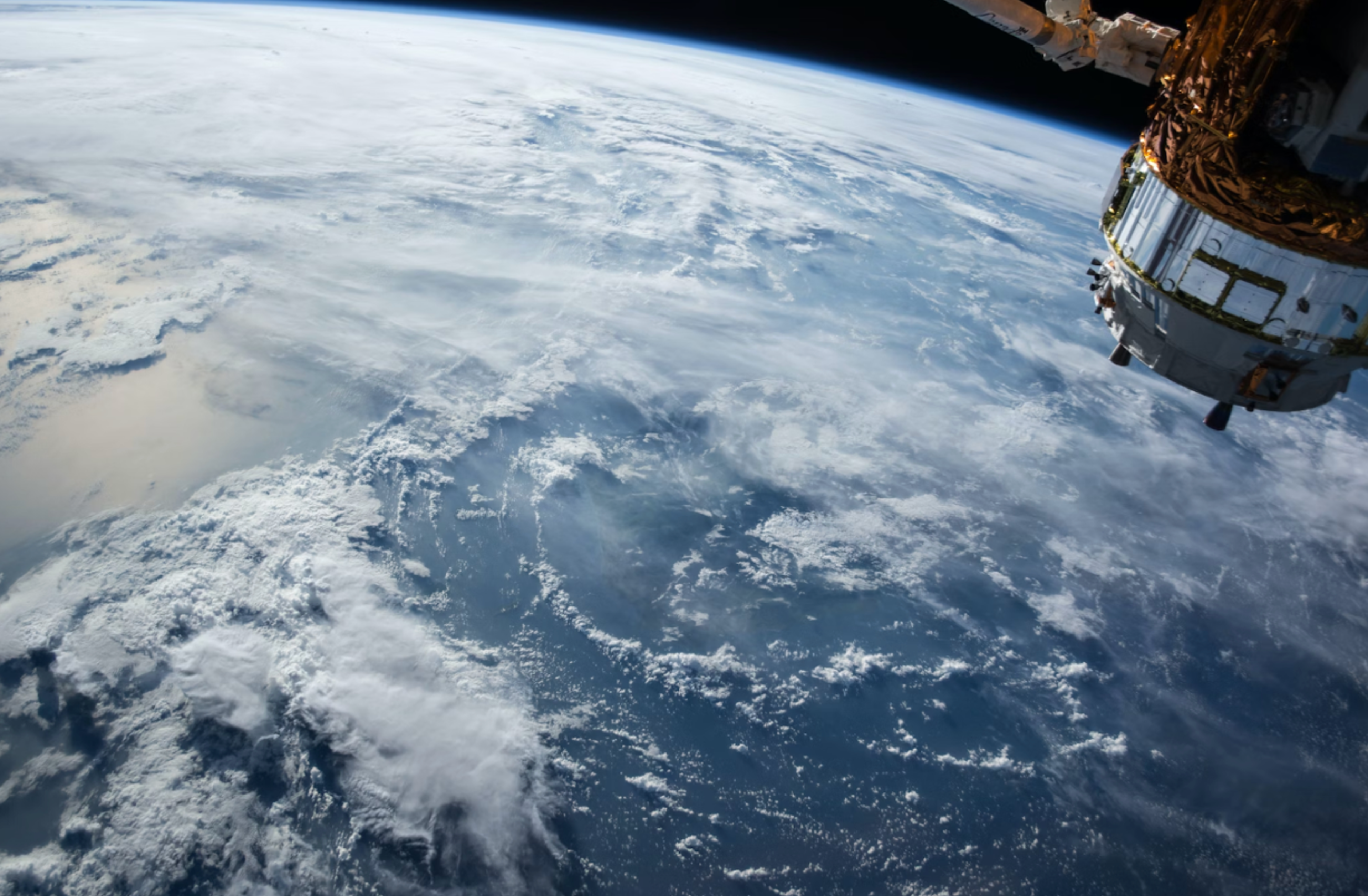
Image by NASA on Unsplash
Suborbital tourism
Suborbital flights take you to the edge of space, typically reaching the Kármán line, the internationally recognized border between Earth's atmosphere and space.
During these short journeys, you can experience a few minutes of weightlessness and see the curvature of the Earth before returning to the planet's surface. Companies like Virgin Galactic and Blue Origin are actively responsible for developing suborbital space tourism programs.
Orbital tourism
Orbital flights involve reaching and orbiting the Earth at altitudes higher than suborbital flights. This level of space tourism provides a more extended experience in microgravity, and companies like Axiom Space are at the forefront of developing commercial space stations to host tourists like yourself for extended stays in orbit.
Lunar tourism
While still in the conceptual stage, lunar tourism involves sending you and other private individuals on missions to orbit the Moon or even land on its surface. Companies like SpaceX have expressed aspirations to offer lunar tourism services as part of their long-term plans for space exploration.
Space tourism represents a shift from government-dominated space activities to the involvement of private companies driven by entrepreneurs with a vision of making space travel accessible to you.
While the cost of participating in space tourism remains high, ongoing technological advancements and increased competition in the industry contribute to making space travel more affordable in the future.
The Genesis of Space Tourism
Space tourism has its roots in the mid-20th century, as space exploration captured the public's imagination. However, it was not until the 21st century that the idea of civilians traveling to space gained serious traction.
The turning point came with the efforts of private companies that sought to capitalize on the growing interest in space travel. Enterprising companies such as SpaceX, Blue Origin, and Virgin Galactic emerged as pioneers in the field of commercial spaceflight.
These companies, led by visionaries like Elon Musk, Jeff Bezos, and Sir Richard Branson, aimed to democratize access to space. That makes it not only a privilege of government-funded space agencies but an experience accessible to you and other civilians.
Technological Innovations Driving Space Tourism
Several vital technological innovations have paved the way for the rise of space tourism. These breakthroughs have not only made space travel more feasible but have also contributed to a significant reduction in costs, making it a viable option for a broader chunk of the population.
Reusable rocket technology
One of the primary challenges in space travel has always been the cost associated with launching rockets. Traditional rockets were single-use, discarded after a single mission.
However, companies like SpaceX revolutionized the industry by developing reusable rocket technology. For example, the Falcon 9's design enables it to land back on Earth after launching its payload, allowing it to be refurbished and used for subsequent missions.
This breakthrough has drastically reduced launch costs, making space tourism more economically viable.
Advancements in spacecraft design
The design and engineering of spacecraft have evolved significantly, focusing on enhancing safety, comfort, and efficiency. New spacecraft, such as SpaceX's Crew Dragon and Boeing's CST-100 Starliner, prioritize your well-being while providing an immersive and unforgettable experience.
State-of-the-art materials, advanced life support systems, and ergonomic interiors are just a few elements contributing to transforming space vehicles into sophisticated, user-friendly capsules.
Commercial spaceports
The establishment of commercial spaceports is a crucial development in the expansion of space tourism. These specialized facilities, such as Spaceport America in New Mexico and the Mojave Air and Space Port in California, are designed to accommodate the unique needs of commercial spaceflight.
They provide launch infrastructure, mission control centers, and support services, creating a dedicated environment for space tourism activities.
Space tourism training programs
With space tourism becoming a reality comes the rising demand for passenger training programs. These programs are designed to familiarize passengers with the unique challenges of space travel, ensuring your safety and preparedness for the experience.
The actual training includes aspects such as zero-gravity simulations, emergency procedures, and familiarization with spacecraft systems. Developing these programs is critical to making space travel accessible without requiring a background in astronautics.

Image by SpaceX on Unsplash
The Top Players in the Space Tourism Race
Several companies today lead the charge in the burgeoning space tourism industry, each bringing its unique approach. The most notable of these organizations include SpaceX, Blue Origin, Virgin Galactic, Boeing, and Axiom Space.
Founded by entrepreneur Elon Musk in 2002, SpaceX has rapidly become a key player in the space industry. While primarily known for its ambitious goals of colonizing Mars, SpaceX is also responsible for many significant strides in space tourism.
The company's Crew Dragon spacecraft, designed to transport astronauts to the ISS or International Space Station, is a foundation for its tourism ventures.
In 2021, SpaceX completed the first all-civilian mission , Inspiration4, sending a crew of private individuals on a multi-day journey around Earth. This achievement marked a massive milestone in the democratization of space travel.
SpaceX's Starship, a fully reusable spacecraft currently in development, is ready to play a pivotal role in the company's future tourism initiatives. With its massive payload capacity and versatility, Starship aims to make space travel more accessible to you and other civilians and professionals alike.
Blue Origin
Founded by Amazon's Jeff Bezos in 2000, Blue Origin is committed to making space tourism a reality for everyone. The company's New Shepard suborbital rocket system 's design enables it to carry you on a brief but exhilarating journey to the edge of space.
New Shepard features a capsule with large windows, providing breathtaking views of Earth during a few minutes of weightlessness.
In 2021, Blue Origin launched its first crewed mission, flying Bezos, his brother, and two other passengers. This event marked a significant step in demonstrating the safety and feasibility of the New Shepard system.
Blue Origin's focus on suborbital tourism is part of a broader vision that includes orbital spaceflight with its New Glenn rocket, set to launch in the coming years.
Virgin Galactic
Virgin Galactic has been at the forefront of the space tourism race . The company aims to provide a unique experience by using its SpaceShipTwo suborbital spaceplane, which the mothership WhiteKnightTwo carries to high altitudes before releasing it to ascend into space.
In this spaceflight, you can experience a few minutes of weightlessness and witness the curvature of the Earth before returning to the planet. Virgin Galactic completed its first fully crewed suborbital spaceflight in 2021, with company founder Sir Richard Branson himself on board.
The company plans to scale up its operations, offering commercial spaceflights to paying customers soon. Virgin Galactic's emphasis on providing a luxurious and visually stunning experience sets it apart in the competitive space tourism market.
You have likely heard of Boeing for its contributions to commercial aviation. Today, the company is actively involved in the space tourism sector.
Boeing's CST-100 Starliner is a spacecraft designed in partnership with NASA for transporting astronauts to and from the ISS. Boeing has also expressed interest in leveraging its space capabilities for commercial purposes, including tourism.
Boeing's participation in the space tourism race symbolizes the evolving landscape where established aerospace giants adapt to the industry's changing dynamics. The company's experience and infrastructure contribute to the growing ecosystem of space travel options for both government and private entities.
Axiom Space
Axiom Space is pioneering a different approach to space tourism by focusing on creating a commercial space station. The company plans to build the Axiom Station , a modular space facility that will serve as a destination for professional astronauts and private individuals.
Axiom aims to offer a range of activities, from research and manufacturing to leisure and tourism, aboard its space station.
The Axiom Mission 1 (Ax-1), scheduled for the near future, is ready to be the world's first entirely private human spaceflight mission to the ISS. Axiom's vision of a commercial space station represents a shift towards a more sustained and diverse space tourism experience beyond suborbital flights.
The race for space tourism supremacy is heating up, with each company contributing to developing an industry once considered the exclusive domain of governments. While SpaceX, Blue Origin, Virgin Galactic, Boeing, and Axiom Space each have distinct approaches and technologies, they share a common goal of making space accessible to you, the private individual.
The ongoing competition in space tourism will likely result in further innovation, cost reduction, and increased safety standards. As these organizations continue to push the boundaries of human spaceflight, the dream of space tourism is inching closer to reality for people worldwide.
The future of space travel is undoubtedly exciting, with the potential to transform how you view and experience the cosmos. It will certainly be a far cry from how you would typically view the stars from a campsite .
The Cost of Space Tourism
While technological advancements have significantly reduced the cost of space travel, space tourism remains out of your reach unless you have substantial financial resources. By today's standards, a single ticket to space costs $200,000 to $500,000 for a suborbital flight and $50 million to $60 million for an orbital flight.
Despite the high cost, a growing market of individuals is willing to invest in this once-in-a-lifetime adventure.
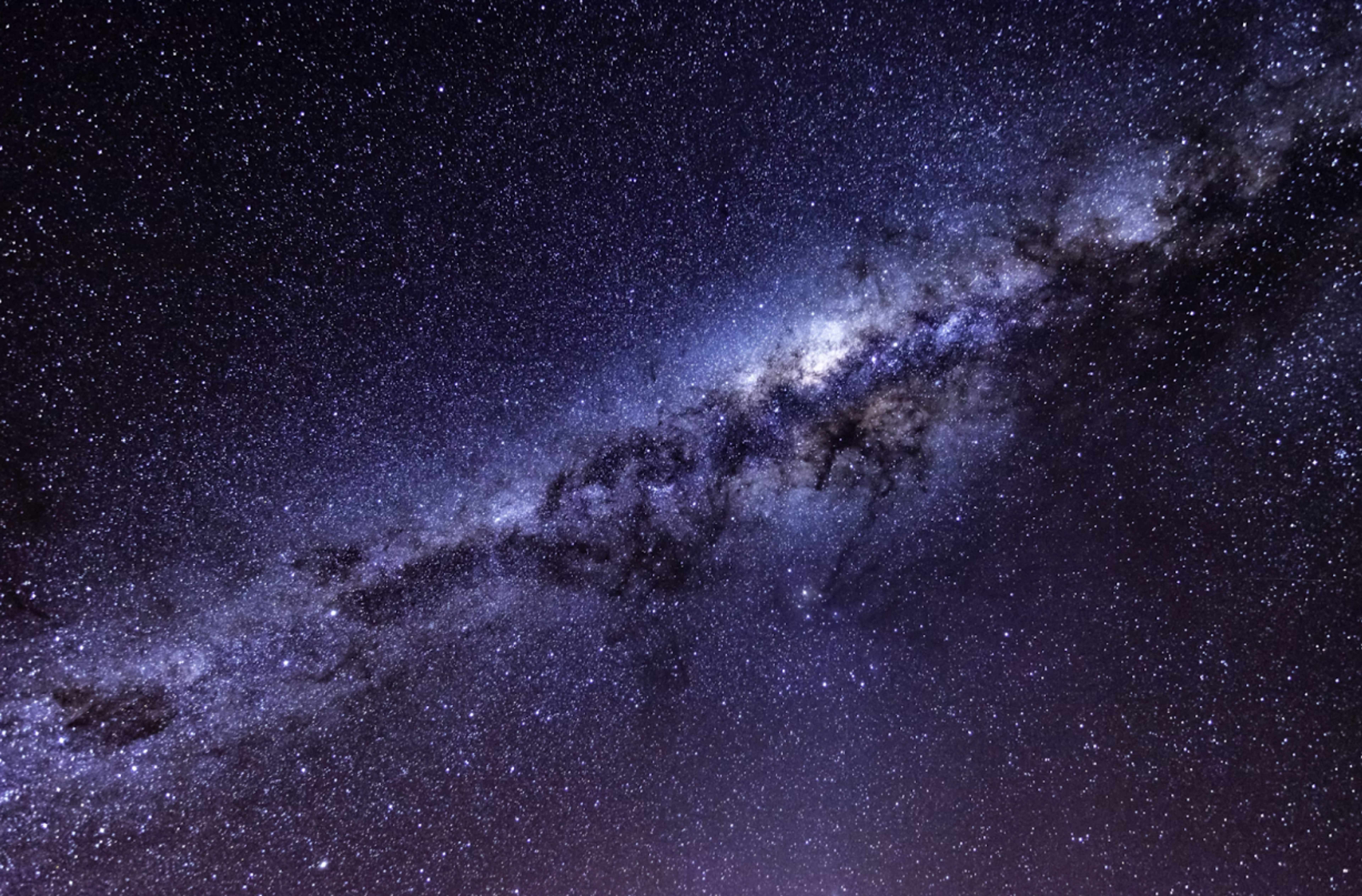
Image by Graham Holtshausen on Unsplash
The Future of Space Tourism
The rise of space tourism is just the beginning of humanity's journey beyond Earth. As technology advances and costs decrease, space travel will likely become more accessible to you. The development of orbital and lunar tourism, with the prospect of hotels and habitats in space, could transform your relationship with the cosmos.
Beyond suborbital flights, the next frontier for space tourism is orbital travel. Companies like Axiom Space have worked tirelessly to develop commercial space stations that could accommodate you for extended stays in orbit.
These space hotels would provide a unique and immersive experience, allowing you to live and work in a microgravity environment while enjoying breathtaking views of Earth from space.
As the technology for deep-space exploration advances, the Moon emerges as your potential destination. SpaceX's Starship, for instance, is what the company envisions as a spacecraft capable of carrying you and other passengers on lunar missions.
Lunar tourism could offer a truly out-of-this-world experience, allowing you to set foot on the Moon and witness Earthrise from a celestial vantage point.
Mars tourism
Looking even further into the future, the prospect of interplanetary tourism to Mars becomes a tantalizing possibility. Companies like SpaceX, with their ambitious plans for Mars colonization, could eventually open the doors for you to visit the Red Planet.
While this remains a long-term vision, the rapid pace of technological innovation suggests that what seems like science fiction today could become a reality in the not-too-distant future.
The First Steps to the Final Frontier
The rise of space tourism marks a transformative moment in the history of human exploration. What was once the exclusive domain of astronauts and scientists is now within reach for you, the average civilian with a sense of adventure and a willingness to embrace the unknown.
Technological breakthroughs in reusable rocket technology, spacecraft design, and commercial spaceports have paved the way for a new era of space travel.
As companies like SpaceX, Blue Origin, and Virgin Galactic continue to push the boundaries of what is possible, the dream of space tourism is becoming more tangible. While the cost remains a significant barrier for many, ongoing developments in the industry suggest that space travel could become increasingly accessible to you in the future.
It holds the promise of orbital and lunar tourism, with the potential for humanity to become a multi-planetary species. As you gaze towards the stars, the rise of space tourism invites you to reconsider your place in the cosmos.
What was once works of science fiction is now a tangible reality, and the journey into space is no longer exclusive to a select few. It is a testament to human ingenuity, curiosity, and the relentless pursuit of exploration that stand on the brink of a new frontier—the democratization of space travel.
This post was authored by an external contributor and does not represent Benzinga's opinions and has not been edited for content. The information contained above is provided for informational and educational purposes only, and nothing contained herein should be construed as investment advice. Benzinga does not make any recommendation to buy or sell any security or any representation about the financial condition of any company.
© 2024 Benzinga.com. Benzinga does not provide investment advice. All rights reserved.
Trade confidently with insights and alerts from analyst ratings, free reports and breaking news that affects the stocks you care about.

8 ways that SpaceX has transformed spaceflight
SpaceX has changed the spaceflight landscape during its first 20 years of existence.
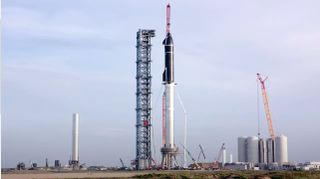
- 8) Made big spaceflight dreams mainstream
7) Put billionaires front stage of space exploration
- 6) Awesome launch webcasts
- 5) Brought new style to spaceflight
- 4) Ramped up orbital space tourism
- 3) Returned crewed orbital spaceflight to U.S.
- 2) Reduced launch costs
- 1) Reusing rockets and landing boosters
Falcon. Dragon. Starlink. Starship. Starman.
SpaceX has contributed a lot to our spaceflight vernacular, showing just how far the company has come in its first 20 years.
Elon Musk founded SpaceX on March 14, 2002, with big dreams of creating reusable rockets, commercial spacecraft and other advanced technology. Musk has said that few believed it was possible, during an era when space agencies still dominated the industry and space hardware was mostly expendable, save for a few examples like NASA's space shuttle and its solid rocket boosters.
Now, 20 years later, SpaceX is a dominating force of its own. The company aims to build out its 2,000-satellite-strong Starlink internet constellation to hold perhaps 30,000 spacecraft. It's ramping up an orbital space tourism program and is the sole U.S. provider for crewed missions to the International Space Station. And as Musk envisioned, SpaceX is now regularly launching and landing rockets while carrying payloads for a wide range of customers, from private companies to NASA and the United States Space Force.
Musk and SpaceX are in the headlines a lot, and the coverage isn't always positive. In 2018, for example, the billionaire entrepreneur sipped whiskey and took a puff of marijuana during his 2.5-hour live appearance on The Joe Rogan Experience , prompting a NASA safety review of SpaceX practices. That same year, Musk insulted an individual involved in rescuing Thai boys from a flooded cave. The Starlink constellation is causing worries about orbital debris and interference with astronomy observations . And yet Musk persists in being himself, and his company is one of the most powerful in the space industry.
Here are eight ways in which SpaceX rose from relative obscurity to "Saturday Night Live"-level fame .
8) SpaceX made big spaceflight dreams mainstream again
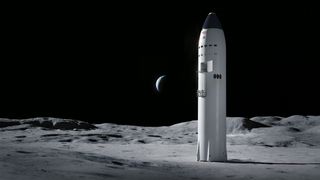
Readers of a certain age may remember German-American rocket scientist Wernher von Braun partnering with entities like Disney to popularize space stations and future crewed space travel in the 1950s, in the years before the Saturn V rocket, whose design he led, launched people to the moon during NASA's Apollo program.
Such big dreaming rapidly became uncool in the 1970s as Apollo faded into history, NASA's budget was slashed and the agency's human spaceflight focus shifted to (supposedly) low-cost missions to low Earth orbit. The space shuttle was a remarkable machine, but it never came through on the low launching costs NASA wanted.
Enter Musk. He had remarkable independence for a spaceflight player, given that he received $180 million in 2002 (roughly $280 million in today's dollars) when eBay bought Paypal. He poured much of this fortune into starting up SpaceX and from the beginning talked about the need for humans to go interplanetary to reduce the threat of extinction. Mars, he said, would be a great place for us to go.
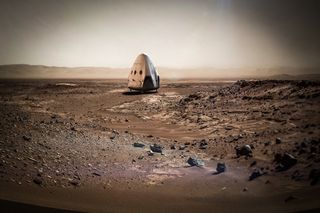
Musk has said that, around 2002, he began researching NASA's plans to land people on the Red Planet and couldn't believe there was no published timeline available. (In more recent years, NASA has suggested the 2030s as a goal.) That's when Musk says he envisioned a Mars mission "to spur the national will," Wired reported.
Meanwhile, Musk worked on accumulating reputation and contracts closer to home to launch satellites, International Space Station cargo and people. It took years to demonstrate that the reliability of SpaceX could rival that of big companies such as Arianespace and United Launch Alliance, but (as we'll talk about below) Musk's ability to spend a lot of money testing reusable rocket technology helped in that effort.
In latter years, Musk and SpaceX have poured much of their energy into developing Starship , a huge rocket-spaceship duo designed to get people to Mars and other distant destinations.
Multiple Starship prototypes went boom during high-altitude test flights, but one finally nailed its landing in May 2021. And NASA picked Starship as the first crewed lander for its Artemis program of lunar exploration, which aims to put boots back on the moon in the middle of this decade.
Starship still has a number of hurdles to clear, however. For example, the system has yet to launch on an orbital test flight; SpaceX is awaiting regulatory approvals before making the first attempt, which could come in the next month or so.

Musk isn't the only billionaire playing a large role in the space industry, of course. Jeff Bezos established the spaceflight company Blue Origin in 2001, for example, and the suborbital space tourism company Virgin Galactic is part of Richard Branson's Virgin Group.
But Musk has been in the public eye more than his fellow space billionaires, partly because of SpaceX's many high-profile successes and partly because he's a very active (and sometimes controversial) Twitter user.
Blue Origin , by contrast, operated in relative secrecy for much of its existence, making few public announcements. (That has changed in recent years, however, as the company has begun flying tourists to suborbital space on its New Shepard vehicle.) Branson is a colorful personality, but Virgin Galactic's suborbital tourist system isn't fully up and running; the company has four spaceflights under its belt but has yet to fly a paying customer.
Meanwhile, Musk has regularly provided updates about SpaceX's various systems on Twitter, given livestreamed Starship progress reports that quickly became must-watches for space fans and inserted himself into the cultural mainstream in a variety of other ways. For instance, he hosted "Saturday Night Live" in 2021, playing the Nintendo supervilllain Wario during his appearance.
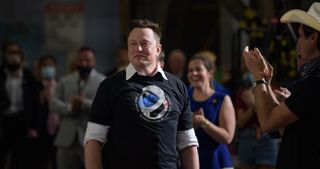
Space tourism made a big leap in 2021, with individuals flying to space with SpaceX, Virgin Galactic and Blue Origin . Branson and Bezos themselves flew on their respective company's systems. Inevitably, given that a seat on Virgin Galactic (for example) now costs $450,000 , tremendous wealth is associated with these various opportunities. That means that very wealthy people are the key audience for selling tickets.
There are ethical issues with having the super-rich on spacecraft, to be sure. People have raised questions about what it means to have an industry in which rich people, or people who have received favors from rich people, are the only ones who get to take part. But then there is the example of Inspiration4 , which flew to Earth orbit for three days aboard a SpaceX Dragon in September 2021.
Inspiration4 — the first-ever all-private crewed trip to Earth orbit — was funded and commanded by billionaire Jared Isaacman, who (similar to Musk) made his fortune with a payment system, called Shift4. Isaacman opened the other three seats on his spacecraft to regular folks, two of whom won their opportunities through contests, with the third flying on behalf of a charity: St. Jude's Children's Research Hospital in Memphis.
Isaacman wanted to raise millions of dollars for St. Jude, and he achieved that goal, along with a healthy dose of publicity. Isaacman recently announced a set of new private missions with SpaceX, which will be run under the Polaris Program . Isaacman hasn't yet named the crews for all the opportunities, but has said each of these missions will also be charity-focused.

6) SpaceX made launch webcasts appointment viewing
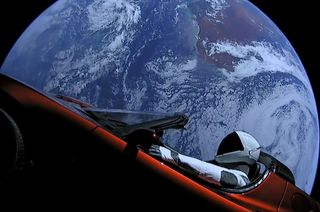
Numerous space companies today run their own spaceflight broadcasts, but SpaceX's tend to stand out. Over the years, millions of people have tuned in to the company's broadcasts to see rocket stages landing on ships at sea and, in one particularly spectacular example, a spacesuit-clad mannequin launching into orbit around the sun.
The mannequin was one of the stars of the debut Falcon Heavy launch in February 2018. The huge rocket lifted off without a hitch, and its three first-stage boosters came back to Earth within view of a huge crowd at the Kennedy Space Center in Florida, the biggest such group since the space shuttle program ended in 2011.
When the webcast shifted back to an in-space view, the Falcon Heavy's upper stage had a spectacular reveal: a mannequin astronaut, driving a Tesla Roadster . SpaceX began playing David Bowie's "Starman" on the broadcast, dubbing the mannequin with the same name as it began a road trip around the sun.
The "astronaut" caught tremendous international attention; this reporter received a message about it from an individual in Mariupol, Ukraine, who didn't usually follow spaceflight, for example. But it's just a singular example of what the webcasts have offered to long-time SpaceX fans.
SpaceX has been strategic in offering camera views of staging, high-definition glimpses of its rockets during launches and at-sea landings, and numerous statistics that fans enjoy parsing on channels such as Twitter and Reddit.
In a sense, the company is borrowing from the earliest days of NASA, when the agency was running open television broadcasts during an era when crewed rocket reliability was far less than what is possible today. NASA and SpaceX, in fact, tend to have competing broadcasts during joint launch efforts of the Crew Dragon system, which creates a considerable (but fun) challenge as space fans split their attention among their social media channels and livestreams.
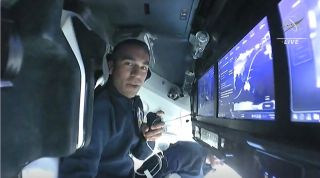
5) SpaceX brought new style to spaceflight

In 2017, Musk revealed the long-awaited spacesuits that NASA astronauts and others aboard his spaceships would don during future flights. True to his tradition of breaking news on social media, he posted the first images on Instagram (although the link doesn't work today.)
While Musk noted that it was "incredibly hard" to balance aesthetics and function in the spacesuits, right away people began commenting on its movie-star look. The SpaceX suit was so thin, in fact, that Musk had to reassure his Instagram followers: "It definitely works. You can just jump in a vacuum chamber with it, and it's fine."
The design was no Hollywood coincidence; it came from legendary costume designer Jose Fernandez, who created outfits for blockbusters such as "Wonder Woman," "Wolverine," "Batman vs. Superman" and "Captain America: Civil War."
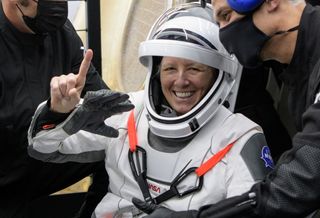
SpaceX picked flashy opportunities to test its spacesuit in space, along with the usual pressure tests and vacuum chamber tests. One flew with Starman on the Falcon Heavy rocket in 2018, and another was used on the dummy Ripley that flew aboard the uncrewed SpaceX Crew Dragon Demo-1 test flight to the ISS in 2019.
There also are the sleek controls for Crew Dragon, which features touchscreens instead of dials and switches. The Crew Dragon console offered interesting experiences for NASA astronauts Bob Behnken and Doug Hurley , who were used to the space shuttle's controls (parts of which date from the 1970s, although much was updated as the program evolved.)
"As a pilot, my whole career having a certain way to control a vehicle, this is certainly different," Hurley said during a news conference in May 2020. "But we went into it with a very open mind."
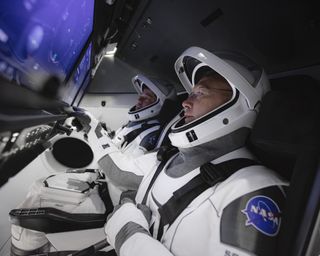
4) SpaceX ramped up orbital space tourism

We've already spoken about Inspiration4's mandate, but other aspects of the orbital space tourism mission are worth mentioning. The Crew Dragon Resilience and its spaceflyers circled Earth for three days at an altitude higher than any human has achieved since a Hubble Space Telescope servicing mission in 1999.
At 367 miles (590 kilometers) above our planet, Inspiration4 experienced a much higher view than astronauts receive on the ISS (about 250 miles, or 400 km). The crew also had the advantage of a domed window , rather than the little portholes that previous generations of NASA and Soviet astronauts had in the 1960s and 1970s.
SpaceX's marketing efforts for space tourism also extend to the dearMoon project , for which Japanese billionaire Yusaku Maezawa is seeking eight crew members to join him on a trip around the moon using SpaceX's Starship spacecraft. The project received some early negative press, as Maezawa asked for a girlfriend to come with him, but a swift marketing shift had Maezawa instead asking for "people from all kinds of backgrounds to join." The targeted launch date is 2023.

In the nearer term, SpaceX will fly paying customers to the International Space Station for Houston-based company Axiom Space, which has booked several missions using the Falcon 9-Dragon system. The first of those flights, Ax-1 , is scheduled to launch on March 30.
And Isaacman's Polaris Project is providing a unique opportunity for SpaceX to show its stuff in orbital spaceflight. The first mission with four private astronauts will include two individuals from SpaceX highly experienced in crewed and uncrewed missions: Sarah Gillis and Anna Menon, who assist in matters ranging from crewed spaceflight development to taking the helm in SpaceX's Mission Control.
It's too early to say yet how SpaceX will position the marketing of its own personnel flying on space missions, but this may be done with some flare given how SpaceX showcased Starman. That said, SpaceX allowed Isaacman to take the lead in promoting Inspiration4, so it may be part of the arrangement to allow Isaacman to handle the work again for Polaris.

3) SpaceX returned crewed orbital spaceflight to U.S.
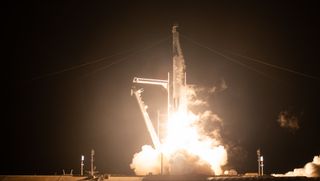
When NASA retired its space shuttle fleet in 2011, the agency was in the midst of supporting several American space companies working to develop the vehicles' replacement, including SpaceX. SpaceX and Boeing won out in 2014, splitting NASA's $6.8 billion Commercial Crew Transportation Capability award.
At award time, NASA hoped to have SpaceX's Crew Dragon and Boeing's CST-100 Starliner capsule flying by 2017, but technical and funding issues pushed the timeline back by several years. In May 2020, SpaceX launched its historic Demo-2 test mission, which sent a Crew Dragon carrying Behnken and Hurley to the International Space Station as the world was in the grips of the coronavirus pandemic, providing some hope and excitement for a captive audience looking for such things.
It was the first crewed orbital liftoff from American soil in nine years, although Florida could not see the usual launch crowds due to safety protocols associated with the pandemic. Still, the livestreams from NASA and SpaceX showed the spacecraft flawlessly sending Behnken and Hurley to the International Space Station for a two-month stay.

The splashdown on Aug. 2, 2020, the United States' first crewed one since the Apollo-Soyuz Test Project in 1975, also went technically well. Unfortunately, however, the area was swarmed by boaters eager to see the procedures up close. (NASA and SpaceX have since changed their protocols to advertise less specifically where the splashdown will occur.)
SpaceX has since run several operational crewed flights to the ISS with few issues, in contrast to Boeing's Starliner. Starliner ran into numerous snags during its uncrewed test flight to the orbiting lab in late 2019 and hasn't had the chance yet to return to space for another try. Numerous issues, including launch windows, the pandemic and technical concerns , mean Starliner likely won't launch until at least May 2022 . Crewed flights may not follow until 2023 or so.
This means that for now, Crew Dragon is the only option for NASA astronauts (or space tourists) to leave for orbital space from American soil.
After the space shuttle retired and before Demo-2 lifted off, NASA was completely dependent on Russian Soyuz vehicles to take its astronauts to and from the space station. Relations between NASA and Russia have been rocky in recent weeks after Russia's invasion of Ukraine on Feb. 24, prompting numerous international sanctions. ISS operations are normal for the time being, but NASA doubtless is breathing a sigh of relief that an American crewed orbital capability is up and running in case, as the relationship with Russia could well deteriorate further.
SpaceX may also be able to replace some Russian services to the ISS, such as reboosting the orbiting complex periodically to avoid drag from Earth's atmosphere pulling the station back to the planet. (Northrop Grumman's Cygnus cargo spacecraft will also test out this capability during its current mission to the ISS, which began in February.)
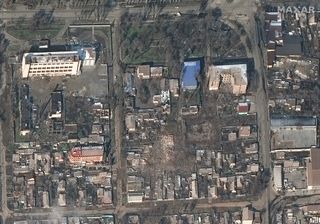
2) SpaceX helped reduce launch costs
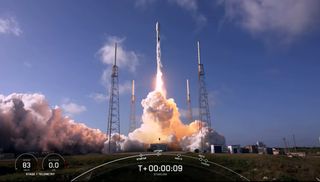
Reusable rocket and spacecraft technology is the backbone upon which SpaceX builds its cost estimates, which tend to be lower than those of its competitors.
For example, the per-seat cost for SpaceX's Crew Dragon is around $55 million, NASA's Office of the Inspector General said in 2019 , which is roughly 60% less than both Boeing Starliner (projected at $90 million) and the Russian Soyuz (then $85 million).
For further perspective, SpaceX sells Falcon 9 and Falcon Heavy launches for $62 million and $90 million , respectively, well below the prices of their chief competitors. In late 2020, for example, it cost a little more than $100 million to book a ride on United Launch Alliance's workhorse Atlas V rocket. (The Atlas V is not quite as powerful as the Falcon 9 .)

Launch customers also pay varying amounts for getting aboard Falcon 9 or Falcon Heavy depending on the size of their satellite, in line with industry practice. So a fleet of tiny cubesats from different organizations, as an example, may typically pay lower costs for their "rideshare" than the operator of the main satellite that is also atop a Falcon 9 on the same launch.
Low costs may extend to future systems, too. The super-heavy Starship system , for instance, is projected to use only $900,000 worth of propellant to make it to Earth orbit. Operational costs overall could be as low as $2 million per flight, Musk suggested in 2019 . If that's the case, Starship will be truly revolutionary, slashing the cost of access to space like never before.
The caveat with all these costings as that some are theoretical and others may be subject to change with recent supply issues induced by the pandemic. But overall, SpaceX is still pointed to as an example of reliably allowing lower-cost launches than its competition.

1) SpaceX is reusing rockets and landing boosters

In a stunning bit of rocket tech now considered routine, SpaceX recovers and reuses the first stages of both Falcon 9 and Falcon Heavy rockets. Indeed, such reuse is key to the company's ability to keep costs down.
The returning boosters come to the ground for soft vertical landings about nine minutes after liftoff, either on solid ground near the launch pad or on autonomous "drone ships" mid-ocean.
The company realized its 100th rocket landing in December 2021, six years after notching its first successful touchdown on an orbital mission. SpaceX also seeks to launch frequently, especially with regard to getting its Starlink constellation operational, and stresses that reusable rockets are key to boosting launch cadence as well as lowering costs.
At the moment, Falcon 9 and Falcon Heavy rockets are only partially reusable; their upper stages are still discarded after launch. The Starship-Super Heavy system, however, will be fully reusable. And the Super Heavy landings will be quite a sight to see.
"We’re going to try to catch the Super Heavy booster with the launch tower arm, using the grid fins to take the load," Musk said via Twitter on Dec. 30, 2021. .
Yes: SpaceX plans to bring the giant Super Heavy back to Earth directly on the launch tower. While Musk has talked about this idea before , the new tweak adds some interesting design challenges. In fact, when you think about it, Super Heavy won't actually be touching down, as it will be caught midair by the tower arm.
What this change would mean is that Super Heavy wouldn't need landing legs. Musk also listed additional benefits to this strategy: "Saves mass and cost of legs and enables immediate repositioning of booster onto launch mount — ready to refly in under an hour," he said in another Dec. 30 tweet .
Reusability is the key breakthrough needed to make the settlement of Mars economically feasible, Musk has repeatedly stressed. He recently estimated that SpaceX could get people on the Red Planet's surface by 2026 , if Starship development and testing go well. While the timeline is optimistic, his goal to put boots on Mars has not changed in decades and continues to fuel the work that SpaceX does.
Follow Elizabeth Howell on Twitter @howellspace . Follow us on Twitter @Spacedotcom or on Facebook .
Join our Space Forums to keep talking space on the latest missions, night sky and more! And if you have a news tip, correction or comment, let us know at: [email protected].
Get the Space.com Newsletter
Breaking space news, the latest updates on rocket launches, skywatching events and more!

Elizabeth Howell (she/her), Ph.D., is a staff writer in the spaceflight channel since 2022 covering diversity, education and gaming as well. She was contributing writer for Space.com for 10 years before joining full-time. Elizabeth's reporting includes multiple exclusives with the White House and Office of the Vice-President of the United States, an exclusive conversation with aspiring space tourist (and NSYNC bassist) Lance Bass, speaking several times with the International Space Station, witnessing five human spaceflight launches on two continents, flying parabolic, working inside a spacesuit, and participating in a simulated Mars mission. Her latest book, " Why Am I Taller ?", is co-written with astronaut Dave Williams. Elizabeth holds a Ph.D. and M.Sc. in Space Studies from the University of North Dakota, a Bachelor of Journalism from Canada's Carleton University and a Bachelor of History from Canada's Athabasca University. Elizabeth is also a post-secondary instructor in communications and science at several institutions since 2015; her experience includes developing and teaching an astronomy course at Canada's Algonquin College (with Indigenous content as well) to more than 1,000 students since 2020. Elizabeth first got interested in space after watching the movie Apollo 13 in 1996, and still wants to be an astronaut someday. Mastodon: https://qoto.org/@howellspace
Building rockets and looking for life on Venus: Q&A with Rocket Lab's Peter Beck
SpaceX launches 23 Starlink satellites, aces 300th rocket landing (photos, video)
Boeing's Starliner spacecraft is 'go' for May 6 astronaut launch
Most Popular
- 2 Russian cosmonauts make quick work of space station spacewalk
- 3 Curiosity rover may be 'burping' methane out of Mars' subsurface
- 4 Boeing Starliner 1st astronaut flight: Live updates
- 5 Lego reveals NASA Artemis rocket, Milky Way galaxy sets coming in May
There’s No Way to Make Space Travel Good for Planet Earth Right Now
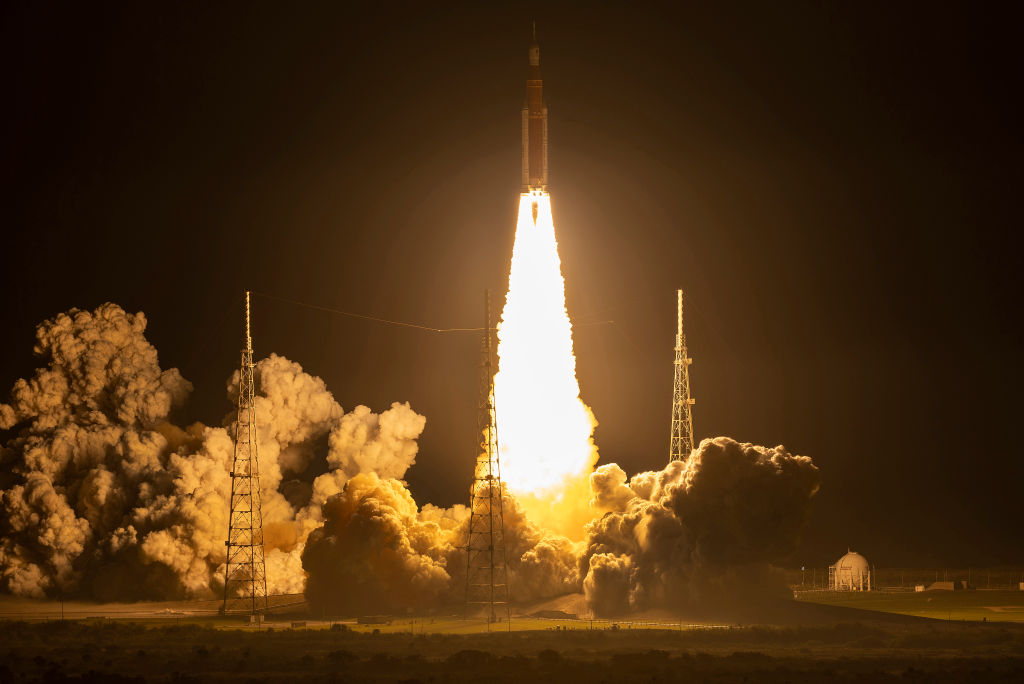
S paceX has never been reluctant to brag, especially when it comes to its celebrated Falcon 9 rocket. Since 2010, as a company toteboard shows, 217 Falcon 9s have flown, with 61 launches in 2022 alone, making it the workhorse of the current global space fleet. So what’s not to like? Plenty, actually—at least if you care about the environment.
The Falcon 9 uses a fuel mixture of liquid oxygen and simple kerosene, and while the oxygen does not do any harm to the skies, the black soot created by the burning kerosene is injected directly into the stratosphere—the layer of air ranging from 12 km (7.5 mi.) to 50 km (31 mi.) above the Earth. There the soot lingers for up to five years , absorbing heat, contributing to climate change, and damaging the ozone layer, which exposes the planet to dangerous ultraviolet (UV) radiation. And SpaceX is not remotely alone.
According to a study by the National Oceanic and Atmospheric Administration (NOAA), global rocket launches (of which there were 180 last year, the study notes) inject about 1,000 tons of soot into the upper atmosphere per year. That will only get worse, NOAA warns, as the industry continues to expand. “The bottom line is projected increases in rocket launches could expose people in the Northern Hemisphere [where most rocket launches take place] to increased harmful UV radiation,” environmental scientist Christopher Maloney, the study’s lead author, said in a statement .
By themselves, rocket launches are small contributors to overall atmospheric pollutants. The aviation industry burns 100 times more fuel each year than all of the rockets launched globally combined. But there is a key atmospheric difference: airplanes fly in the troposphere about 11 km (6.6 mi.) above the ground. Soot precipitates quickly from this range compared to stratospheric soot which sticks around much longer. Indeed, according to the NOAA report, a single passenger aboard a rocket is responsible for 100 times more climate-changing pollution than a passenger aboard an airplane.
Not only does all of this warm the planet and damage the ozone, the NOAA scientists warn, but the change in temperatures can also slow subtropical jet streams , worsening summer monsoons in Africa and India. “We need to learn more about the potential impact of hydrocarbon-burning engines on the stratosphere and on the climate at the surface of the Earth,” said Maloney.
A version of this story also appears in the Climate is Everything newsletter. To sign up, click here .
The type of fuel used in the rockets can make a difference. SpaceX’s massive, 33-engine Starship spacecraft , for example, uses methane in place of kerosene. While methane is a powerful greenhouse gas by itself, it does burn cleaner than kerosene, putting out less black soot. Blue Origin’s New Shepard rocket is cleaner still, burning liquid oxygen and liquid hydrogen, and producing only water vapor as an exhaust—water vapor in the upper atmosphere still traps and retains heat, but not nearly as much as black soot, methane, or carbon dioxide do.
None of this means that the private rocket industry or growing space powers like China, India, and the United Arab Emirates—to say nothing of the U.S.—will be slowing down their launch schedules or becoming less pollution-intensive any time soon. Indeed, NASA’s new Space Launch System moon rocket, which first launched in November 2022, is an especially dirty machine. While it uses a liquid oxygen-hydrogen mix in its four main engines, its two attached solid fuel engines, which account for most of the vehicle’s thrust, produce the ozone-damaging pollutant chlorine.
The thriving space industry is typically seen as a boon for both the economy and for human exploration—and it is. But the launching of a monster rocket—with monster exhaust—like SpaceX’s anticipated Starship is a reminder that there can be too much of a good thing. If we keep increasing not just the size of rockets but the number of launches, we do so at a price; and as with so many other things, it is the climate that pays.
More Must-Reads From TIME
- The 100 Most Influential People of 2024
- Coco Gauff Is Playing for Herself Now
- Scenes From Pro-Palestinian Encampments Across U.S. Universities
- 6 Compliments That Land Every Time
- If You're Dating Right Now , You're Brave: Column
- The AI That Could Heal a Divided Internet
- Fallout Is a Brilliant Model for the Future of Video Game Adaptations
- Want Weekly Recs on What to Watch, Read, and More? Sign Up for Worth Your Time
Write to Jeffrey Kluger at [email protected]

Passing Thru Travel
Travel Beyond Earth: Exploring the Future of Space Tourism
Posted: March 22, 2024 | Last updated: March 22, 2024

Space tourism, once a mere figment of science fiction, rapidly evolves into a tangible reality, offering the most intrepid travelers an unprecedented opportunity to venture beyond Earth’s confines. This burgeoning industry promises to redefine the boundaries of exploration, providing experiences ranging from suborbital flights to extended stays in space stations. As private companies like SpaceX, Blue Origin, and Virgin Galactic spearhead this new era, the dream of gazing upon Earth from the vastness of space is closer than ever. This guide explores the forefront of space tourism, presenting ideas that mark the future of extraterrestrial travel.
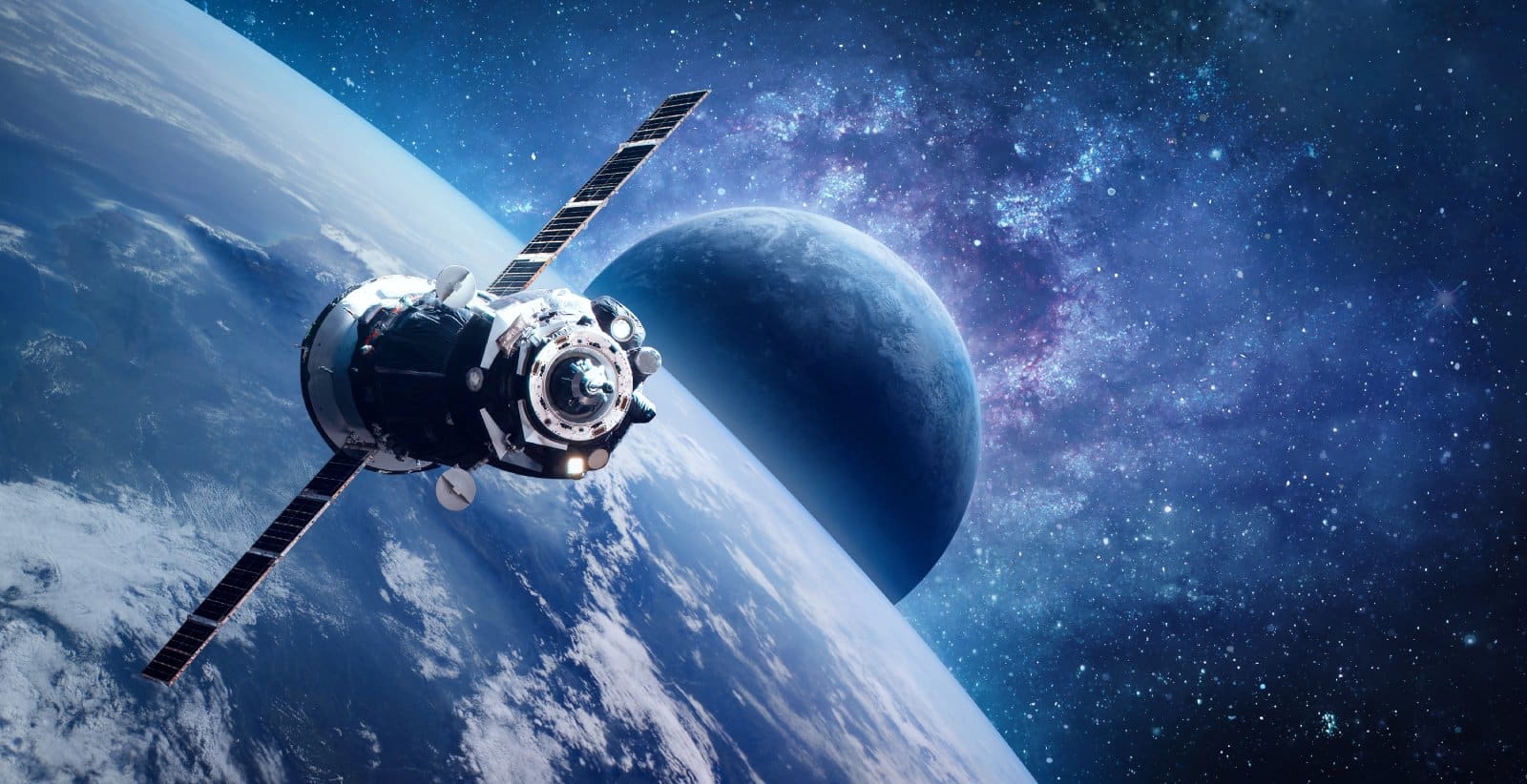
1. Suborbital Spaceflights
Image Credit: Shutterstock / Dima Zel
Suborbital spaceflights represent the threshold of human space exploration, offering a brief yet profound journey beyond the confines of Earth’s atmosphere. This experience allows you to witness the curvature of the Earth against the backdrop of the infinite cosmos, a sight that has transformed the perspective of many astronauts.
During the flight, you’ll experience a few minutes of weightlessness, floating freely within the cabin, an exhilarating and serene sensation. Companies leading this venture, such as Blue Origin and Virgin Galactic, utilize cutting-edge spacecraft designed for safety, comfort, and the optimal viewing experience. The flights are meticulously planned, with each phase — from the rocket’s ascent to the silent glide back to Earth — maximizing the passenger’s experience of space.
Insider’s Tip: Opt for a comprehensive training program offered by these companies to prepare physically and mentally for the rigors and euphoria of space travel.
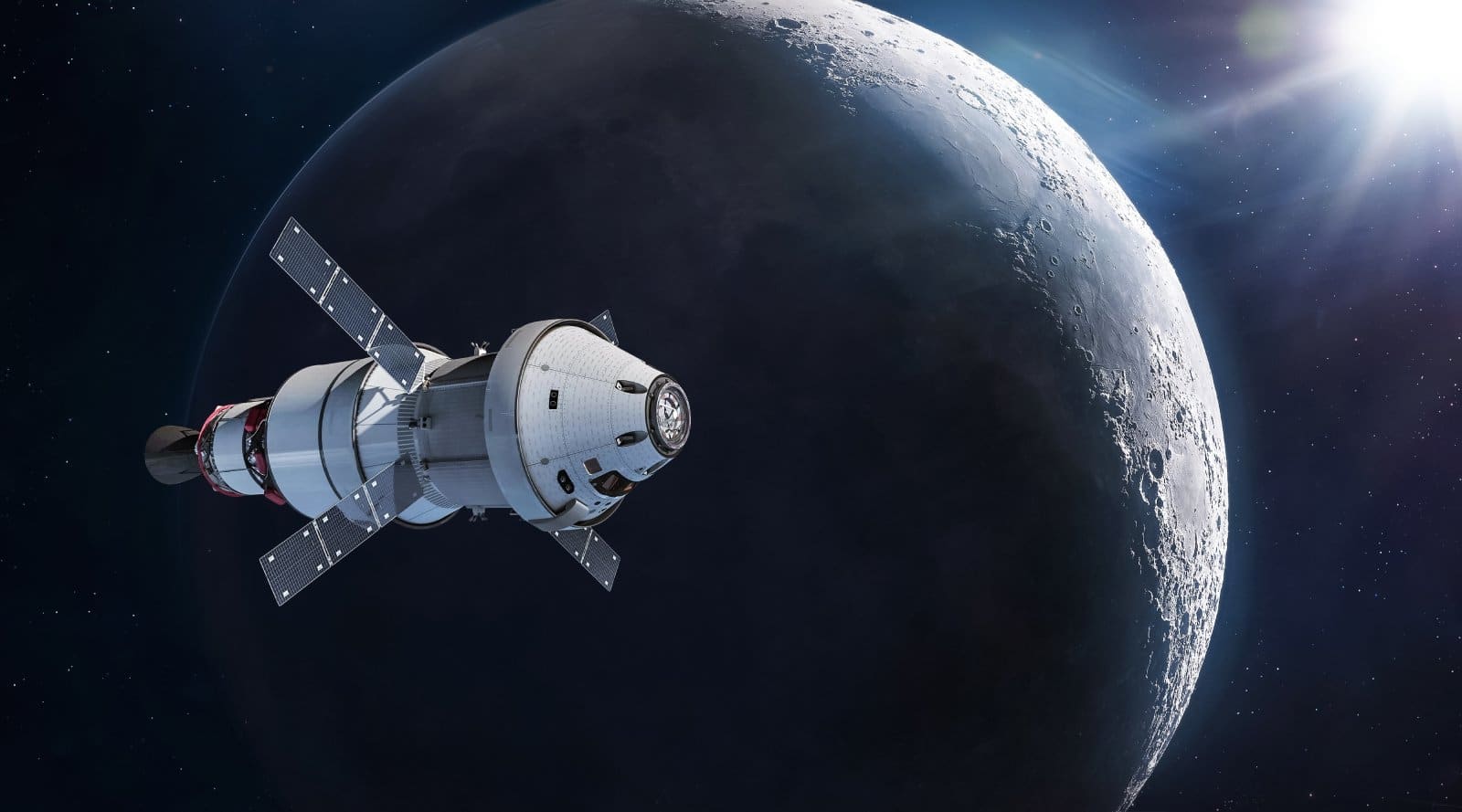
2. Orbital Spaceflights
Orbital spaceflights are the next frontier for private space tourism, offering an extended stay in low Earth orbit. This experience goes beyond the brief moments of weightlessness, allowing you to live and move in space, witnessing multiple sunrises and sunsets in a single day from the vantage point of a spacecraft. Currently, this level of space travel is offered by companies like SpaceX, which plans to use its Crew Dragon spacecraft to transport private citizens to orbit.
While aboard, you’ll experience life as modern astronauts, from sleeping in zero gravity to observing the Earth from a unique orbital perspective. The journey is about experiencing the day-to-day life of an astronaut, making it a profoundly transformative experience.
Insider’s Tip: Engage in a rigorous pre-flight conditioning regimen to ensure you can fully enjoy and participate in the activities and demands of living in space.

3. Space Hotels
Image Credit: Shutterstock / Alones
The concept of space hotels is set to revolutionize space tourism, offering a luxurious stay in orbit. These hotels, planned by companies like Axiom Space, aim to attach habitable modules to the International Space Station or even construct free-flying space stations designed for commercial use.
Guests can expect accommodations that combine the thrill of space with the comforts of Earth, including rooms with views of the planet below, space-grown food, and recreational activities adapted for microgravity. The development of space hotels highlights the growing accessibility of space travel, promising an extraordinary vacation destination that was once the realm of astronauts.
Insider’s Tip: Keep an eye on the development progress of these stations and plan for a longer training period to acclimate to extended periods in microgravity.
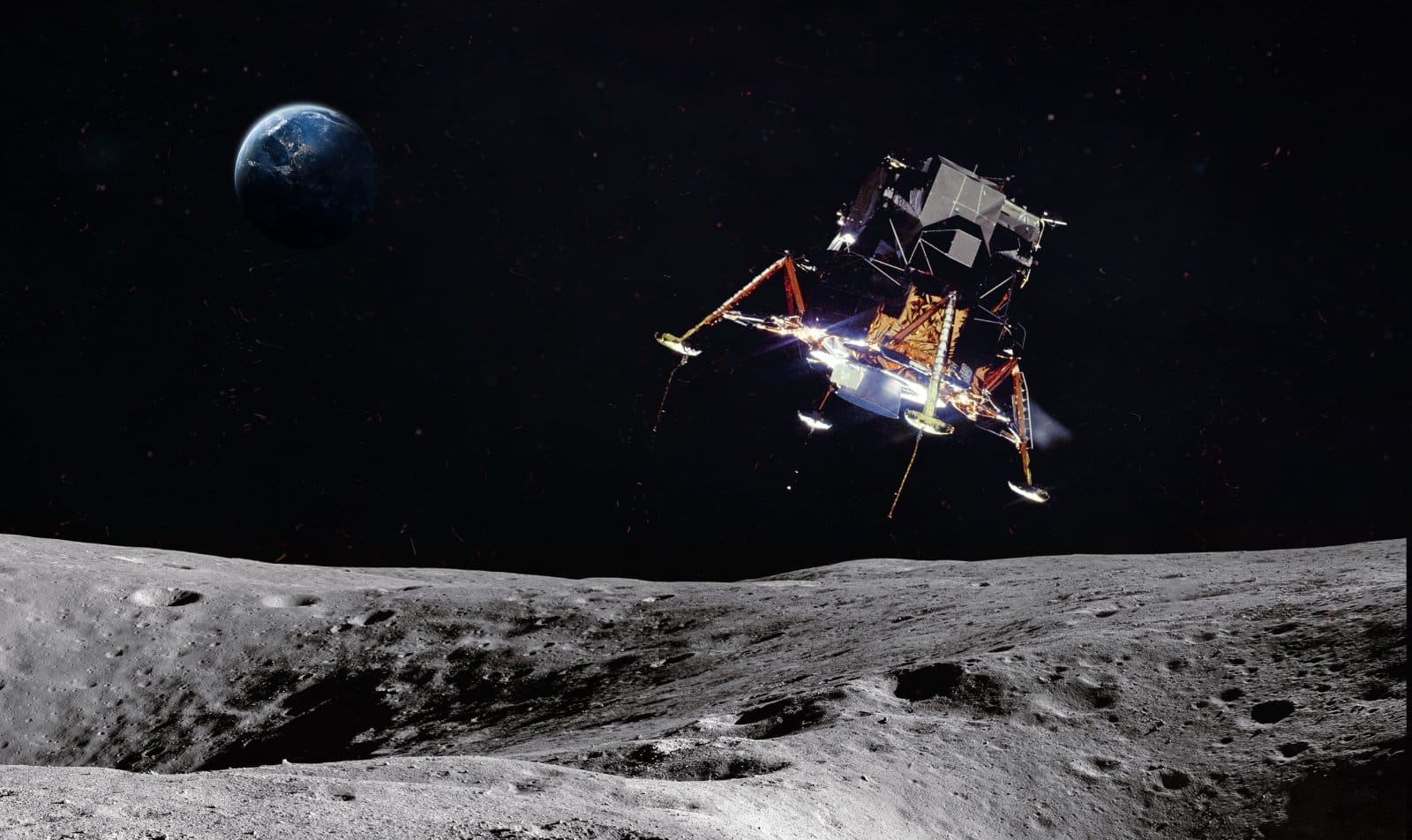
4. Lunar Flybys
Lunar flybys mark an ambitious step in space tourism, offering private citizens the chance to journey around the Moon. This mission, reminiscent of the Apollo missions of the 1960s and 70s, promises an unparalleled adventure, bringing you up close to the lunar surface before witnessing the Earth rising over the Moon’s horizon.
SpaceX’s Starship is one of the spacecraft intended to make such missions possible, providing a comfortable and safe journey for those aboard. The experience of seeing the Moon up close and the Earth in full view offers an extraordinary sense of our place in the universe and the interconnectedness of all life on our planet.
Insider’s Tip: Such a mission requires physical preparation and a deep commitment, as it represents one of the longer-duration space tourism experiences currently planned.
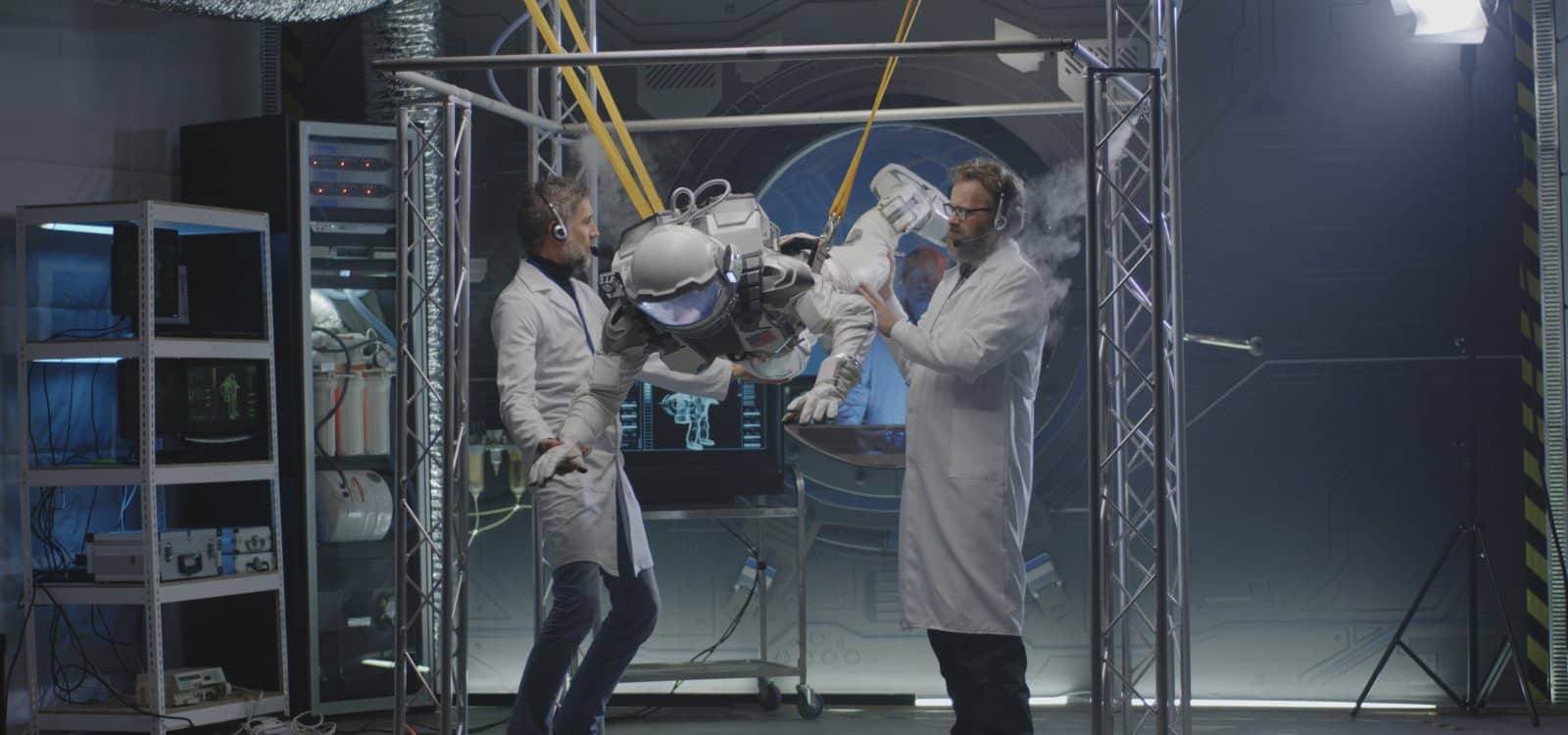
5. Zero-Gravity Flights
Image Credit: Shutterstock / Frame Stock Footage
Embarking on a zero-gravity flight offers an unparalleled introduction to the sensations of space without leaving Earth’s atmosphere. This experience simulates the weightlessness of outer space through parabolic flight patterns, creating moments where gravity’s pull is momentarily negated.
Inside a specially modified aircraft, you’ll float, flip, and soar as if in space, providing a unique taste of what astronauts experience aboard the International Space Station. The flights are meticulously planned and executed, involving a series of steep climbs and descents, with each parabola offering around 20 to 30 seconds of weightlessness.
For those dreaming of space travel, this adventure is an accessible and exhilarating preview, requiring minimal training compared to orbital missions. It’s a favorite among space enthusiasts, researchers, and educators for its educational value and the sheer joy of experiencing microgravity.
Insider’s Tip: Focus on mastering movements in microgravity during the flight to maximize the experience. Quick acclimation allows for more freedom and enjoyment during the brief periods of weightlessness.
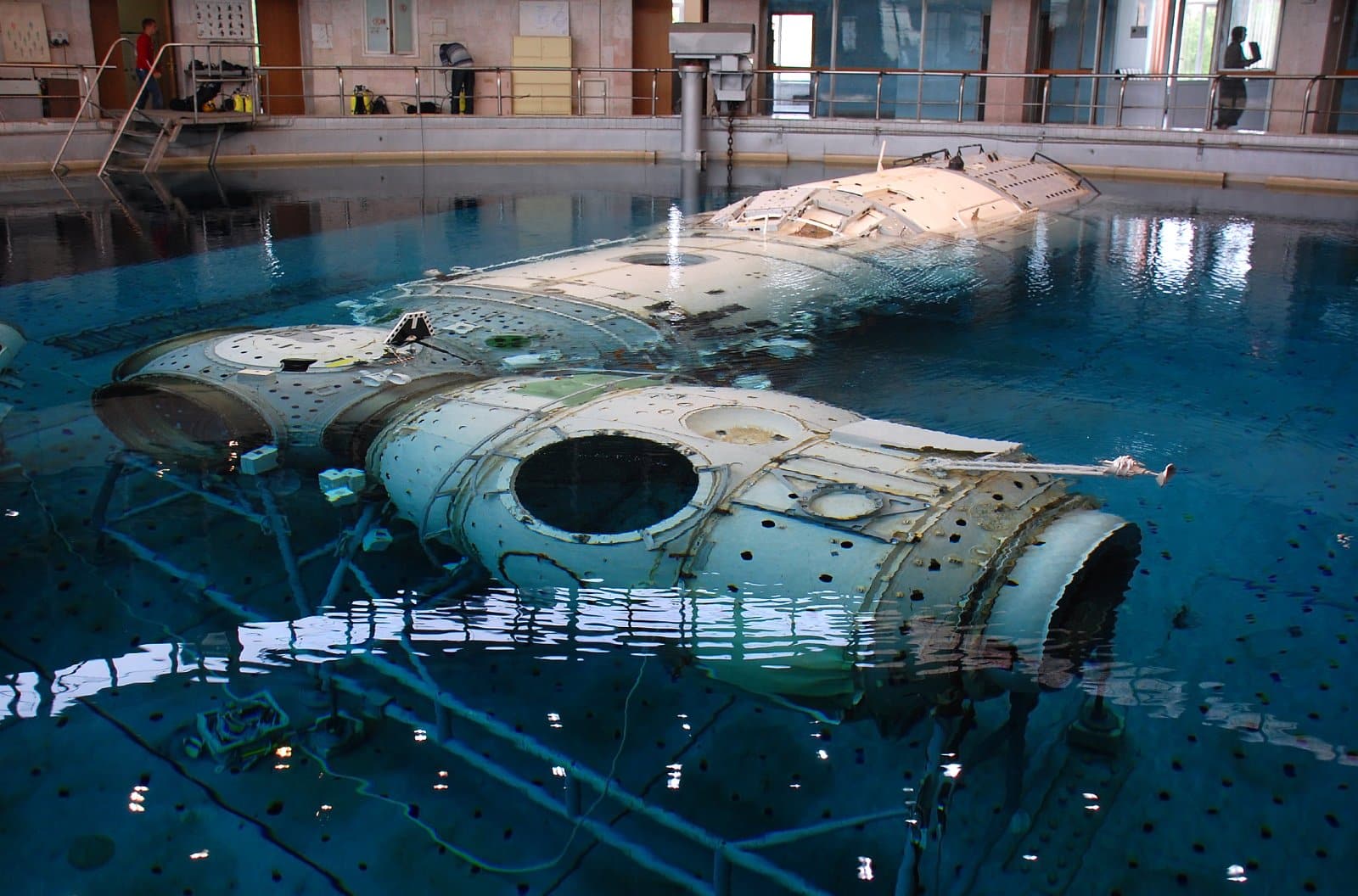
6. Spacewalk Simulations
Image Credit: Shutterstock / vicspacewalker
Spacewalk simulations offer an immersive experience that closely mimics the extravehicular activities (EVAs) performed by astronauts in the vacuum of space. Utilizing advanced virtual reality (VR) technology and neutral buoyancy labs, these simulations give participants a realistic sense of the challenges and exhilaration of conducting a spacewalk.
In neutral buoyancy labs, participants are submerged in large pools equipped with full-scale models of spacecraft and space station modules, allowing them to practice tasks under conditions that simulate microgravity. VR simulations, on the other hand, use cutting-edge graphics and motion-sensing technology to create detailed, interactive environments where participants can explore and work on virtual spacecraft or satellites.
These experiences are designed not only for entertainment but also as educational tools, offering insights into the physics of space, the complexity of astronaut tasks, and the teamwork required to complete a mission outside the Earth’s atmosphere.
Insider’s Tip: Take the time to learn about the intricacies of real space missions to enhance the realism and immersion of the simulation experience.
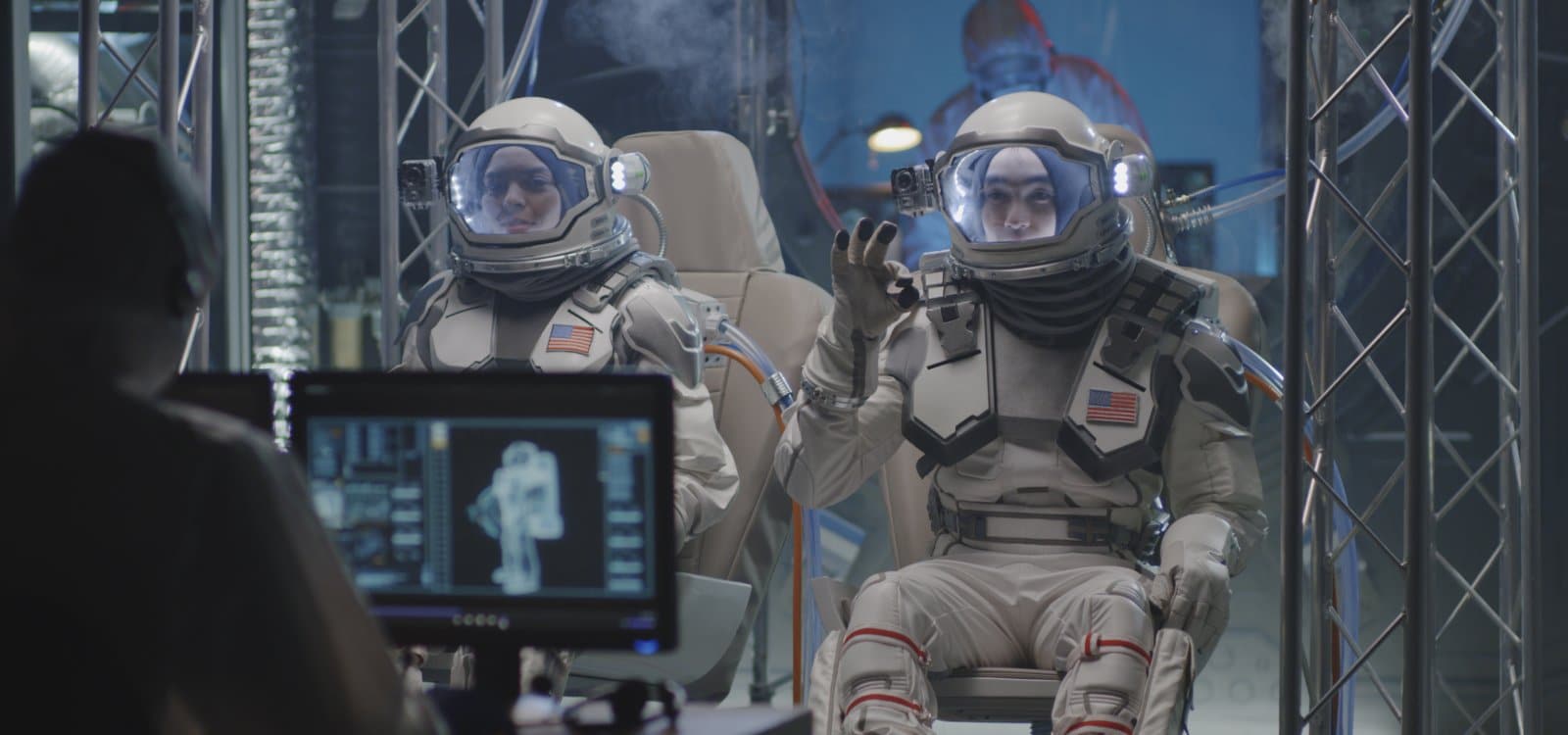
7. Astronaut Training Experiences
Astronaut training experiences are comprehensive programs designed to simulate the physical and mental preparation required for space travel. These programs cover a wide range of activities, from high-G force centrifuge training to simulate rocket launches to underwater neutral buoyancy sessions that mimic the weightlessness of space.
Participants also engage in classroom sessions where they learn about spacecraft operations, navigation, and the science behind human spaceflight. Additionally, survival training exercises prepare participants for emergency scenarios, including how to safely return to Earth in unforeseen circumstances.
These experiences are offered by various space agencies and private companies, aiming to provide an authentic glimpse into the life of an astronaut and the rigorous training they undergo.
Insider’s Tip: Embrace every aspect of the training for a holistic understanding of the physical and psychological demands of space travel.
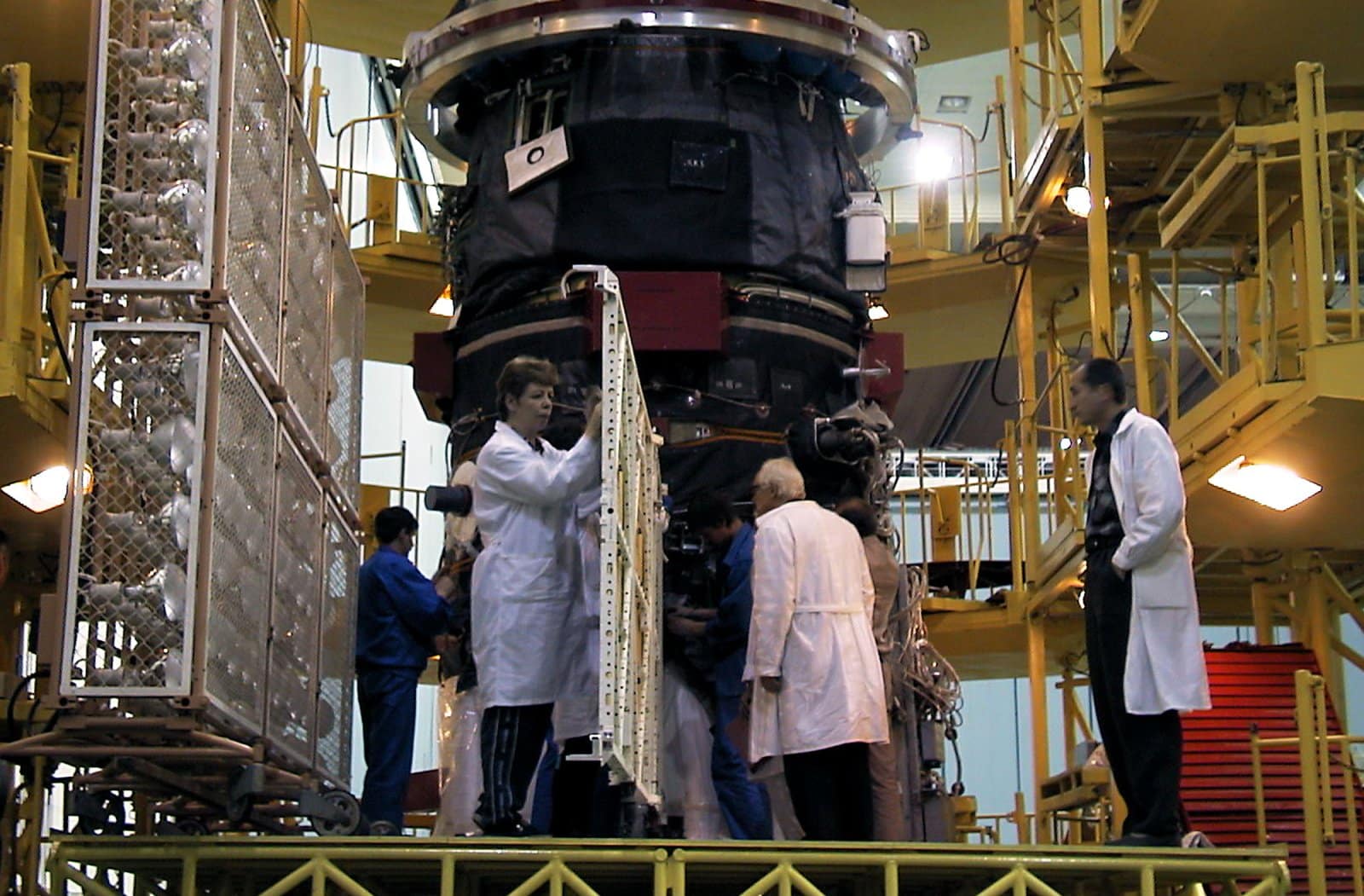
8. Visits to Space Launch Facilities
Image Credit: Shutterstock / Northfoto
Visits to space launch facilities offer a unique opportunity to witness the intersection of human ingenuity and cosmos exploration. Facilities like NASA’s Kennedy Space Center in Florida and SpaceX’s launch site at Boca Chica, Texas, provide guided tours where visitors can see launch pads, vehicle assembly buildings, and control rooms.
These tours often include exhibits on the history of space exploration, showcasing spacecraft, satellites, and memorabilia from historic missions. For those interested in the future of space travel, some facilities also offer the chance to see the latest aerospace technology and spacecraft being prepared for upcoming missions.
Witnessing a live rocket launch is a highlight of visiting these facilities, offering a tangible sense of the power and potential of space exploration.
Insider’s Tip: Plan your visit to coincide with a live rocket launch for an unforgettable experience, but be prepared for schedule changes due to weather or technical delays.
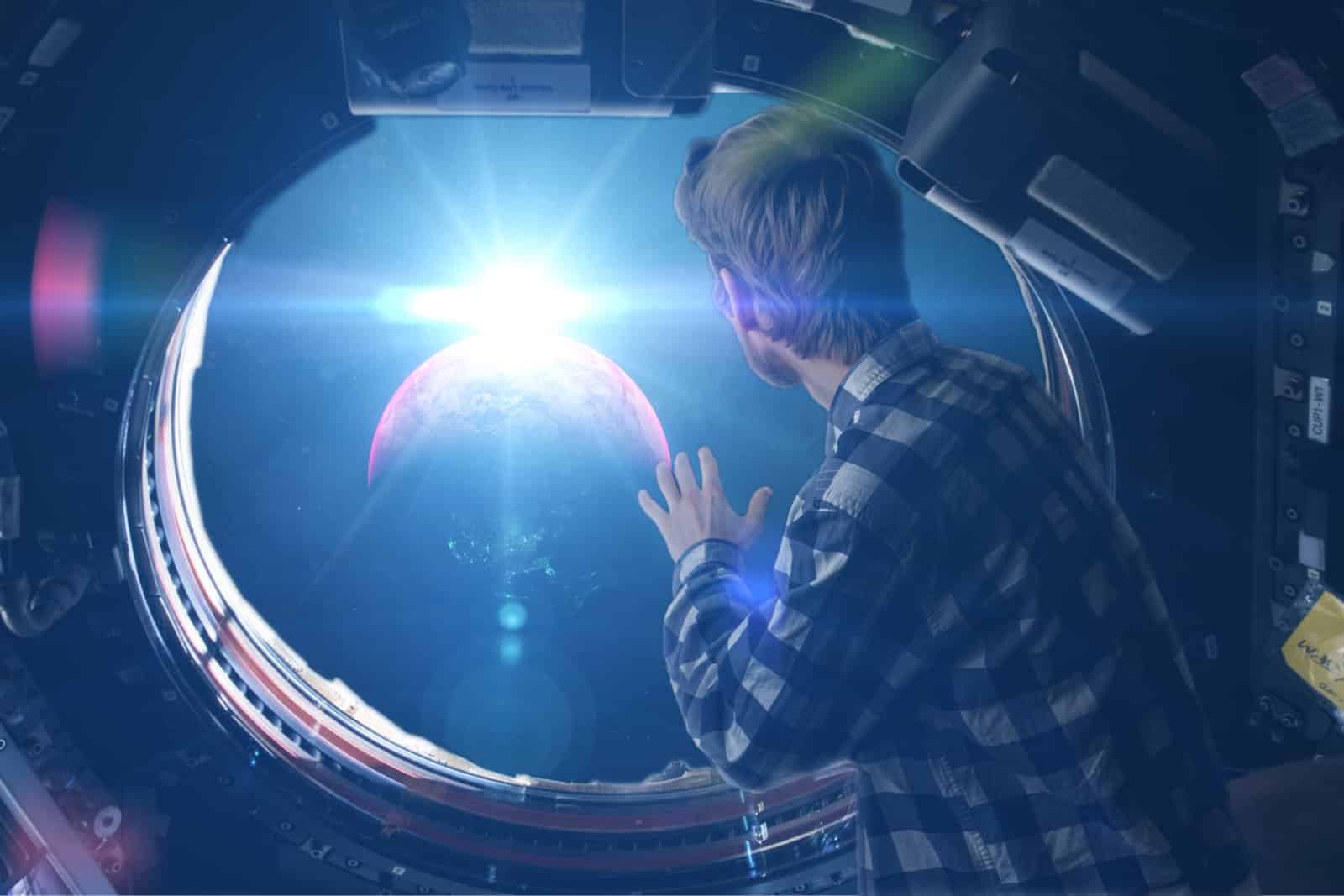
9. Space Camps for Adults
Image Credit: Shutterstock / Mike_shots
Space camps designed for adults blend the thrill of space exploration with the rigor of astronaut training in an immersive, educational environment. These camps offer a comprehensive overview of space science, including hands-on activities like building and launching model rockets, simulating space missions, and navigating obstacle courses designed to mimic the physical challenges of space travel.
Beyond the physical activities, workshops, and lectures from experts in the field provide insights into the complexities of spaceflight, the history of space exploration, and the future of humanity in space. This experience is about fulfilling childhood dreams and understanding the teamwork, problem-solving, and technical knowledge required for space missions.
Whether you’re a space enthusiast looking to deepen your understanding or simply seeking an adventure out of this world, adult space camps offer an unforgettable journey into the final frontier.
Insider’s Tip: Engage fully in the camp activities and network with fellow space enthusiasts to enrich your experience and foster connections within the space tourism community.
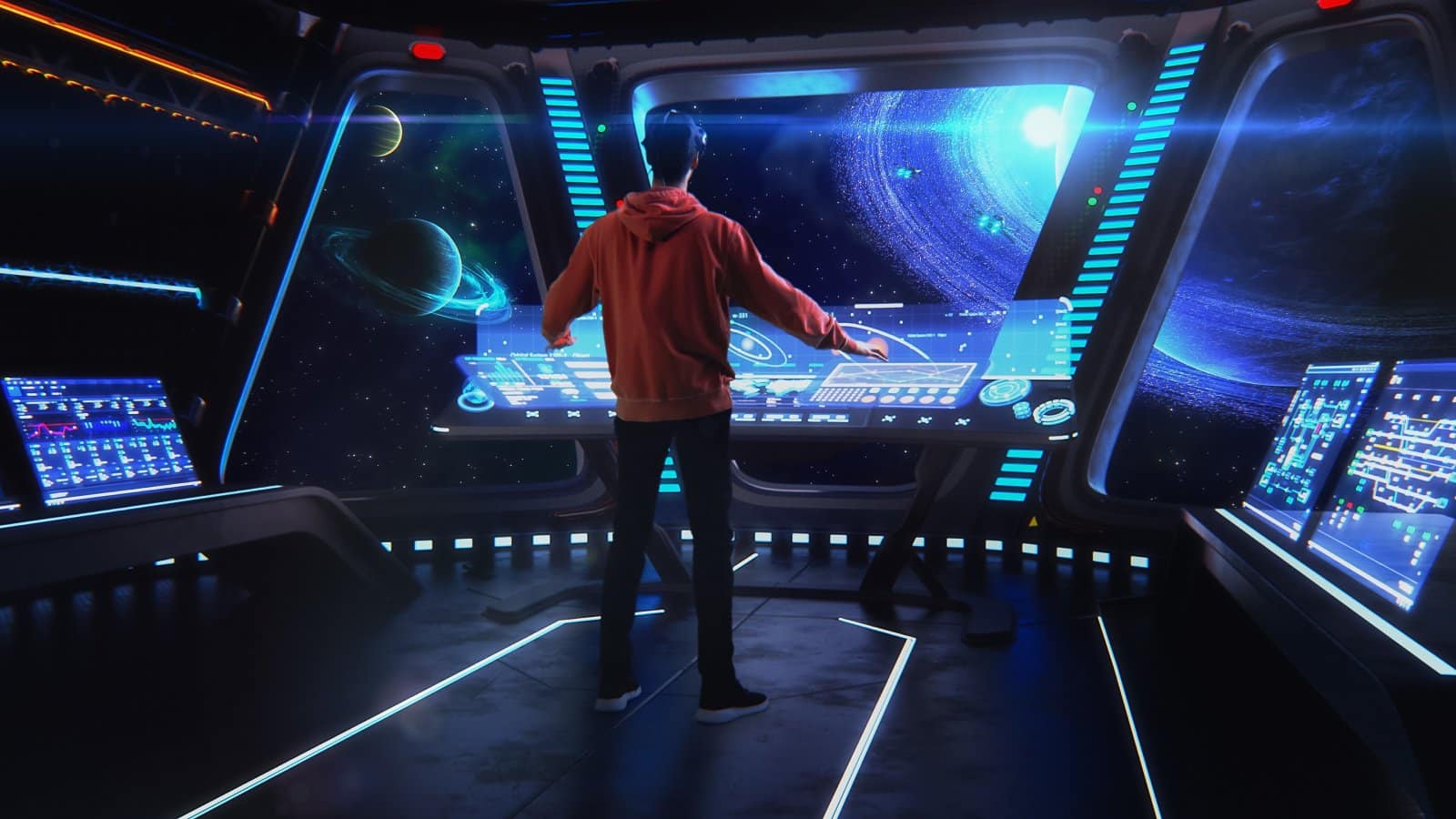
10. Virtual Reality Space Exploration
Image Credit: Shutterstock / Gorodenkoff
Virtual reality (VR) space exploration represents the cutting edge of technology, allowing you to traverse the cosmos from the comfort of your own home. High-definition visuals and immersive audio transport you to other worlds, from the International Space Station to the rugged terrain of Mars. These experiences are crafted with attention to scientific accuracy, offering not just entertainment but an educational journey through space and time.
You can embark on guided tours of extraterrestrial landscapes, participate in simulated space missions, and learn about the cosmos in an engaging, interactive format. VR technology continues to evolve, promising ever more realistic and expansive explorations of the universe. For those fascinated by space but not ready to leave Earth, virtual reality offers a compelling window into what lies beyond our planet.
Insider’s Tip: Invest in a high-quality VR headset and explore the various space exploration programs available to maximize the realism and depth of your virtual space experience.

The Bottom Line
Image Credit: Shutterstock / Skreidzeleu
As space tourism evolves, these journeys become increasingly accessible to those who dream of the stars. Whether through a brief parabolic flight or an ambitious journey around the Moon, the opportunities for adventure beyond Earth’s atmosphere are expanding. Each of these experiences requires financial investment, a commitment to preparation, and a willingness to embrace the unknown.
As you contemplate your place in the cosmos, remember that the essence of space tourism lies in pushing the boundaries of human experience, offering a new perspective on our planet and our place within the universe. The future of travel beyond Earth promises new destinations and a new understanding of what it means to explore.
More Articles Like This…
Barcelona: Discover the Top 10 Beach Clubs
2024 Global City Travel Guide – Your Passport to the World’s Top Destination Cities
Exploring Khao Yai 2024 – A Hidden Gem of Thailand
The post Travel Beyond Earth: Exploring the Future of Space Tourism republished on Passing Thru with permission from The Green Voyage .
Featured Image Credit: Shutterstock / Andrei Armiagov.
For transparency, this content was partly developed with AI assistance and carefully curated by an experienced editor to be informative and ensure accuracy.
More for You
Trump campaign accused of breaking federal law by hiding millions in legal payments
A California woman bought a vacant lot in Hawaii and discovered a $500,000 house was built on it without her permission
This is the salary it takes to be considered rich in every state
5 Things the Average Retiree Won’t Be Able to Afford in the Next 5 Years
Megan Fox Signs With UTA
‘Sleep disorder drove my son to suicide,’ New York mother says: ‘Broke my heart’
Culver's Vs Five Guys: Which Burger Chain Is Better?
18 Vintage Boy Names No One Else Is Using Yet
One of these pictures of me is real and the other is AI – but which is which?
Here’s What the US Minimum Wage Was the Year You Were Born
Want the Max $4,873 Social Security Benefit? Here's the Salary You Need.
Age at which you're officially old has changed
4 Things You Should Never Cook in Cast Iron
Layered Haircuts and Hairstyles for Every Face Shape
‘A big mistake’: Ex-Trump White House lawyer reacts to Trump’s mention of Charlottesville
Large amount of Gen Z workers set to be laid off and replaced by AI, study finds
The most expensive state to live in isn't California or New York, based on data. Here are the top 10.
Do I have to pay off my spouse's debts when they die? Here's what you're responsible for and what you aren't after a loved one's death
Here’s Why There Are 10 Hot Dogs in a Pack, But Only 8 Buns
Doctor reveals difference between what adults and children see when they die
- Share full article
Advertisement
Supported by
current events conversation
What Students Are Saying About Space Travel, Texting Etiquette and Unplugging
Teenage comments in response to our recent writing prompts, and an invitation to join the ongoing conversation.

By The Learning Network
Welcome to our roundup of student comments on our recent writing prompts .
This week, we asked teenagers if they would want to travel to space, how important proper grammar and punctuation are when texting, and how often they are able to “unplug.”
Thank you to all those who joined the conversation this week from around the world, including teenagers from Uzbekistan ; Syracuse, N.Y. ; and Don Bosco Cristo Rey High School in Takoma Park, Md .
Please note: Student comments have been lightly edited for length, but otherwise appear as they were originally submitted.
Do You Think You Will Ever Travel to Space?
In light of several recent highly-publicized flights to space — from those by billionaire entrepreneurs Jeff Bezos and Richard Branson to the first orbit of Earth by an all-civilian crew — we wanted to know about students’ thoughts on commercial space exploration.
The responses ranged from unbridled enthusiasm to serious skepticism: Some were thrilled about the possibility of one day visiting the cosmos themselves, while others expressed trepidation and questioned what good these expeditions can do.
“It Is So Incredible to Be Alive” at the Beginning of Commercial Space Travel.
Space. A place of uncharted territory, hidden secrets, and limitless possibilities, waiting to be discovered. Yet bit by bit, we are slowly starting to unravel this puzzle, and every day we become closer to finally making sense of it all. Space travel is just one example of humanity’s ardent desire to understand this enigma, and it is so incredible to be alive while we are beginning to take these steps. Merely a decade ago, the thought of commercial space travel would have been preposterous, yet today it is a real possibility. Space has always been fascinating to me, and I am so excited to see what advancements in this field await us in the future.
— Aparna, Hoggard High School
It is truly a wonderful feat to be able to send a person to the stars and soon that experience may be closer to the public than ever before. The recent space flights are an inspiration-giving rise to feelings of hope and wonder. To have had the opportunity to have flown on the Inspiration4 mission would have been the experience of a lifetime. I think what I would have found most thrilling about the flight would have been the ability to see the world from such a height. Beyond that It would have put into perspective the importance of enjoying the time spent on this beautiful rock that is our home.
— Thomas, Union High School/Vancouver, WA
My reaction to the recent space flights was excitement. When the article stated that we went higher than the International Space Station and the Hubble Space Telescope it made me happy to see how much we have advanced within space. I was also thrilled to hear that donations would be made to St. Jude’s hospital as I feel for ill children. If Ms. Arceneaux was able to follow her dreams and overcome that adversity in her life, I know others at St. Jude’s will heal and be able to do the same thing with the help of donations to find cures…In the article I was also proud to hear that history was made with Sian Proctor as she would be the first African American woman to fly the spacecraft.
— Daniella, Cary High School
I Won’t Be on the Next Flight That Leaves Earth.
Eventually, whether it be in a few decades or several millenniums, humans will have to migrate from Earth. However, I don’t think that move will involve me. Don’t get me wrong, space is absolutely fascinating and a wonderful thing to study, but we don’t know anything about it. Almost everything we know about space is a guess, an estimation. I grew up living on the coast, the ocean was as entwined with my life as the air. This makes me very qualified to say I am terrified of the sea. Seventy percent of our world that we’ve been on for 200,000 years and you’re telling me that we have only explored and charted five percent?!
— Grace, Hoggard High School in Wilmington, NC
Even though the advances in space travel are astonishing, I don’t see myself taking the risk of a launch vehicle failure in return for a nice view.
About 6 percent of space launches end in a vehicular failure. Given that commercial planes only fail 1 in every million flights, this signals to me that space technology needs more development. It doesn’t make me feel any more comfortable hearing that the founder of the company was only on the space flight for 11 minutes. I don’t even think he fully trusts his company’s product.
— Luke, Hoggard High School, Block 1
I realize that we are very close to commercial and recreational space travel, but I do not think I will be able to afford travelling to space ever in my lifetime. Maybe, early in the next century, space travel will become common and popular, however it is not something I am willing to pursue or look forward to in our current time. Life in space, even inside a ship, is very very very indescribably different from life on Earth. The gravity is unfamiliar, your body grows frail and feeble, you have to eat paste for every meal, and even going into space you have a chance to shatter your legs. Considering all of these, I do not want to go to space, even if it’s like nothing else - quite literally “out of this world.”
— William, Hoggard High School in Wilmington, NC
Is Going to Space Safe?
Conventional wisdom claims that similar to the beginning of all new processes/creations, such as space travel, proper rules on how to regulate these things must be created. While this probably will not be uncommon, I can only expect the concern around the safety of space travel to grow. Meaning more primarily, the focal prioritizing of it, with the future of space travel filled with guidelines/laws that strictly dictate the importance of proper building, protocol, and procedures within the craft and in space. Especially since this topic poses the thought of space travel being normalized as commercial flying, or at least meaning a larger sum of people in consideration to than just four listed within the article.
— Gwyneth, Kempner High School
We Should Address Problems on Earth First …
Billionaires such as Musk and Bezos have the power and money to exploit as many people and resources they need — regardless of the consequences. While I wholeheartedly endorse the exploration of space and the funding of research to find out more about the cosmos, the prospect of billionaires colonizing another planet while leaving the lower class behind to reap the consequences of their actions is frightening. I believe that although the exploration and discovery of the universe is critical to the development of mankind, the exploitation of more land and more resources from planets beyond is not. I believe that more investment should be put into the lives of the vast majority of humans that are living on Earth and suffering the consequences of a wealthy few. I have always believed that in order to progress, one must rectify the mistakes of the past. If billionaires would like to colonize Mars, they should, at the very least, try to fix climate change before they go.
— Emaan, Kempner High School
…with that commercialization and focus on space comes the worry that as a species we’re now putting too much energy into discovering new worlds, when we should focus on preserving the one we have. With climate change becoming a larger and larger threat, it’s more necessary than ever to be putting our focus on preventing and reversing the changes it has brought to the Earth. For this reason, I believe that while space travel is an incredibly exciting idea, it is one that is necessarily good for humanity.
— Eliana, Glenbard West highschool
… Unless the Cosmos Hold the Answers to Them.
Space is the final frontier. The last big obstacle in the progression of humanity. Every time we travel to space, we learn new techniques or technologies for the next trip. The next iteration. Like the car, we will start to make it faster and more efficient. However, the backlash of these trips to the starry night sky seems severe. Saying that the trip is a waste, that the 100s of millions of dollars were wasted. That the money could have been spent for the homeless, and the vets. For the hungry, for the poor. However I believe that by expanding our horizons to the great unknown, we will further our reach and ability to conserve the Earth. And that we will be able to fix hunger, and homelessness. That the world will become a better place. If we take the water from Mars or Europa, one of Jupiter’s many moons, we will be able to fix droughts, or places with little water. That when we break free of the chains of this little green and blue ball in the vast void of space, we will be able to do whatever we want.
— Alex, Bentonville West Highschool
What Are Your Texting Dos and Don’ts?
In “ No More Periods When Texting. Period. ,” Max Harrison-Caldwell writes about whether grammar and punctuation rules apply to text messages. We asked text-savvy teenagers to share their rules for texting etiquette .
Do periods affect tone? How important is it for texts to be well-written? Should messages to grandparents, teachers or employers look different than those you send to your friends? Students debated all these questions and more.
No-Stress Texts
I feel as if teenagers shouldn’t have to worry about spelling, grammar, or punctuation when it comes to texting. When a lot of teens text we like to abbreviate bigger words to get the text sent out faster. We as Teenagers mainly focus on texting how we feel comfortable texting whether it’s using emojis, abbreviated words, or even using correct punctuation. We even text differently depending on who we are communicating with. When we teens get home we want to let go of the formality and just relax. We have to deal with enough stress at school, we don’t want to go home and deal with stress when communicating with our friends.
— Jimaya, Riverside University High School
The Great Period Debate
Punctuating texts is superfluous. When I text my friends, I don’t use capital letters to begin sentences or punctuation to end statements. I prefer to send a series of short messages over a paragraph. This makes it easier for the person on the other end of the conversation to follow along promptly and omitting the need for punctuation. Thoughts come to an end when you send a message, therefore deeming punctuation redundant …
Often, ending a sentence with a period can have connotations of being condescending to your audience, who feel as though you think you have to reiterate that your thought is over, or they won’t understand on their own. In conclusion, punctuation and capitalization over text can be seen as excessively formal, and should only be used when trying to be courteous.
— Savannah, Cary High School
Most people tend to text others in the same way that you verbally speak to them, with the incorporation of slang. The majority of text messages don’t end with periods, since when someone is speaking verbally, their sentences don’t necessarily end in abrupt stops. Instead, they trail off and allow other people to add their own opinions to the discussion. Therefore, when you end your sentences with periods while texting digitally, it feels passive aggressive because it feels as if they’re ending the conversation and not allowing the other person to add on.
— Emily, New York
Personally, I prefer full sentences, grammar, and sensible punctuation. To me, a poorly worded message riddled with spelling errors comes across as lazy/rushed, not friendly or humorous. With close friends, punctuation shouldn’t change the status of your friendship, and if you’re texting a stranger, it’s better to be formal anyway! Now, granted, everyone has different texting preferences, which is exactly why I think it’s nonsense to say that the whole generation finds the use of periods to be rude. It’s hardly new news that it can be difficult to tell the tone of a text message. Most everyone is going to understand that there are different preferences in texting, and that’s okay.
— Sophie, Bentonville West High School
The people who feel uneasy or even angry when you type like a normal person are overthinking the situation way too much. Why should anyone purposefully make their grammar worse? If it’s a casual setting, I should be able to speak freely, and if I want to end my sentence with a period like I’ve been taught to do since first grade, then why not? If you are the type of person who is so deep within the degeneracy of the internet that ending a sentence with a period is alien to you, then please take a moment to remember that not everyone communicates in abbreviations, memes, and inside jokes. I don’t always use perfect grammar when I text, but never do I actively try and make it worse. If your friend group uses grammar that is far from perfect when texting, that’s perfectly fine; I’m not trying to control how you speak. However, don’t act like someone is in the wrong for using the most basic form of punctuation in the correct way.
— Aiden, J.R. Masterman in Philadelphia PA
Punctuation, Text Length and Tone
I agree that using periods in sentences can come across as cold and distant. Regular phrases that we say out loud come across very distant when they’re texted with a period. For example, when saying “I’m fine.” over text, it usually means that you’re upset about something, while saying “I’m fine” in most situations means that you’re okay.
— Evan, Valley Stream North High School
The way I see it, texting is an informal method of communication. Therefore, I text how I speak. When I text my friends, I don’t think about grammar or even making sense. I will even type out my laughter or frustration, like UGH, or HAHAHAHAH. I often use specific capitalization or punctuation to represent the inflection or tone of my voice, rather than to be grammatically correct… Personally I feel immediately more comfortable when texting with a new friend if they text super casually.
— Megan, Hoggard High School
Code Switching for Your Audience
Texting culture, a whole new dialect with a different set of unwritten rules. Texting is incredibly diverse, meaning, everyone has their own style, and way of interpreting tonality. I think most of us — teenagers — can agree that punctuation and grammar is the last thing we care about when texting each other. There are other generations who religiously use periods at the end of each text — yes, I’m talking to you boomer. Personally, I think that as long as the other person understands your thoughts, your texting style is valid. If my grandma sends me a hilarious video and I respond with “AHIEURIFHVJHCBKDWIJEH 💀” or “I’M LEVITATING”, confusion would govern her head; therefore, I must have a pre-defined texting style based on who I’m texting. On the other hand, if I repply to one of my friends with “😂” they would think that I’m being kept captive. That’s the versatility of texting and the reason why it is so fun, popular, and funny.
— Ulices, Don Bosco Cristo Rey High School
When I text, I code switch. Depending on who I’m texting at the time. My Grandmother would get “ Hey Grandma, I was wondering can you take me to the store” verses my brother, He’ll get “ Ayo come take me to the store rq”. I’ll start off all of my messages with a capitalized letter but grammar wise I tend to let loose. Your , You’re , they’re , there , their are usually looked at as the same word when texting.
I normally text my family and friends very differently, and they text me back differently…For example, I might text my parents “Hey, I’m gonna be a bit late since I just missed the bus. Is there anything you need me to get while I’m at the grocery store? Love you.” while I might text my friends “I JUST MISSED THE BUS💀 JHKJSHKFHDKHFSKJ THE NEXT ONES COMING IN HALF AN HOUR🥵”. My family might respond with “Bummer! Can you grab some yogurt? E wants strawberry Yoplait and A wants peach Yoplait.” while my friends might respond with “rip”, “i hope u miss the next one too🤪”(jokingly), or “PLEASEHKSHKJDA”.
— Paulina, Julia R. Masterman Middle School
New Generation, New Language Rules
Were phones invented when our traditional grammar rules came to be? No. So why is there so much controversy and adverse opinions to grammar within texting? My mom gets angry at me when I don’t text in full sentences with correct punctuation. This does not make sense to me. Similar to all generations before this, new slang and different dialects were created. The English language was created around the 5th to 7th century. Lots of our language that is taught and followed today has been created and changed since then. Every generation gets to change communication and dialect to fit the new and coming changes of the future. It is no surprise that it would happen with our generation too.
— Sarah, Cary High School
When Your Mom Is an English Teacher
When I text, I barely use punctuation or capitalization. It’s every English teacher’s biggest fear. My mom, being an English teacher, always calls me out on my not capitalized I’s and sentences and not using periods or anything…I really have to focus on capitalization and punctuation when I’m texting/emailing my teachers or other adults. This is an example of what some of my texts could look like.
just chilling lmao wyd
nice same lmao
It could use some work.
— Jack, Hoggard High School, Wilmington, NC
Are You Able to “Unplug?”?
In our Picture Prompt “ Powering Down ” we asked students how often they are able to “ take a break ” from technology.
Their responses convey the pressures and demands of modern teenage life: how screens dominate their school, home and social lives; the need for “constant stimulation”; and how, as one student said, for many of this generation, “technology is all we know.”
But some students also offered useful tips for unplugging and finding space.
Struggling to Get Offline
I would like to say I could but to be honest I don’t think I can. I use technology everyday it is such a big part of everyone’s lives these days. Even when you think it’s not it is. It is part of most things we do now a days. I would love to think that I could go a week without Snapchat, Instagram, or Tiktok, but I don’t think I could. I rely on them to keep me from boredom. Plus schooling and most jobs require you to be constantly be on your phone or laptop. I will say that everyone should try to unplug for at least an hour or more, but I get it it can be hard. For students like me we grew up with technology it’s all we really know.
Like most other students commenting on this prompt, I have noticed that technology has become almost “stuck” to me. The more I think about it, the scarier it gets: I never get a break from screens. If it’s not my school iPad it’s my phone. If it’s not my phone it’s the Tv. If it’s not any of that I’m probably asleep. It’s so weird to think about how there is almost always a screen in front of me. Technology has become so intertwined on my life that I’m not entirely sure “unplugging” is possible at this point.
— Bailey, Glen Ellyn, IL
I find “powering down” to be a particularly difficult task. The only time I’m away from my phone is when I’m doing schoolwork or sleeping, and even during the time I’m doing schoolwork, I have access to technology full of distractions. Growing up with technology like phones and computers on the uprise has created a need for constant stimulation. Without some sort of noise or visual distraction, I tend to feel immediately bored, rather than relaxed…In the commotion of feeling stressed I do make my own attempt to “unplug,” but this more often than not, usually consists of a trip to watch YouTube or Netflix, in other words, not really unplugging at all and finding something to stimulate my mind in a rather unhealthy way. I’m not oblivious to the idea that my habits are not beneficial for me and my life, and see room for improvement, however, it feels like one difficult goal to reach.
— Isabella, Glenbard West High School
Time for a phone free day! This is going to be so relaxing. Wait. I forgot to respond to his text. (He’s going to think I’m ignoring him.) I didn’t like her picture. (What if she thinks I hate her?) I have to email my teacher for an extension. (I can’t fail this class.) Let me log back on. I just need one more minute…
Setting Boundaries With Tech Use
I feel like if I needed to disconnect myself from my devices I would be completely fine. During the height of TikTok’s reign over people’s lives, I decided to delete the app because of the extremely negative climate on the platform. For the first couple days it wasn’t easy, I felt the urge to open the app at the first sign of boredom. However after about a week I became independent from the app. I found that I had more time to spend with my friends or to complete any chores looming over me. My mood was greatly affected by the transition, the politics and negativity that was hammered into my head in nearly every video no longer made me angry or sad. I was able to enjoy the space around me and those within it. In the future, I hope to find ways to become much less dependent on technology. My dream is to one day return to a time like the 1980’s, where technology was still a huge asset, but did not have such a grip on our lives; leaving us more time to be present in our surroundings and build genuine relationships with those around us.
— Jason, Connecticut
My lifetime has been an explosion of personal technology, from the first iPod touch to the newest MacBook Pro. With the changing times, schools have changed, and I’ve gone to only paper-and-pencil schools as well as schools that only use technology- and everything in between. I’ve had my own personal device in some way, shape, or form since the sixth grade. In that time, I made new friends, switched from middle to high school, and underwent a global pandemic. In other words, I was on my phone quite a bit. My screen time- no surprise here- skyrocketed during the lockdown. But I found myself suddenly getting a lot of headaches, both from the natural stress caused by being isolated and the constant strain on my eyes that my iPad, computer, and phone were providing. So I started limiting myself, checking my phone less often, doing more offline activities. I love to read, and I can understand books easier when they’re not on a tablet or a phone…I took (and still take) physical copies of notes and terms for class, because writing something down on paper makes me remember it better. My screen time lessened and my headaches improved. So I think if I ever want to unplug, I’ll be able to do it just fine.
— Ayda, Glenbard West HS, Glen Ellyn IL
Unplugging, With and Without Technology
I try to intentionally unplug pretty often. If I realize that I’ve been on my phone for an extended period of time in a day, I like to put my phone away for a few hours and do something else. During this time I have a few things I like to do like running the loop, baking some banana bread, going to the beach for a swim, walking my two dogs in my neighborhood, reading on the living room couch, or helping my mom cook dinner…[T]o slow down and really clear my head, these are some of the things I do:
1. Take a shower. A hot shower always takes away some stress. It’s a time to myself where I don’t have to worry about anything.
2. Put on pajamas. Wearing my cozy, too big sweatpants and my oversized purple shirt has never failed to make me more relaxed.
3. Stretch. Getting in a good stretch always makes me feel so much better. My muscles feel less tense, and it just makes me feel so much more relaxed mentally.
Technology can be great sometimes, but too much of it can definitely have a negative effect on a person. It is very important to remember to unplug every once and a while.
— Annie, Hoggard High School, Wilmington, NC
What does unplugging refer to? It is not simply about sitting and recharging one’s batteries. It is about clearing the mind from unnecessary thoughts, relaxing spiritually and physically.
Technology, undeniably, has had ripple effects on the way people unplug. Most of us today prefer to listen to soothing songs or watch animated relaxation videos on YouTube to refresh our minds. In fact, using phones or tablets is the primary means of getting disconnected from the outside world for the majority of people.
The question might arise: is it a change for the good or the worse? I would say it is contingent upon several factors such as time. If we have only 5-10 minutes to wind down, then listening to pleasant music or watching something hilarious like a meme would be the best choice. If we have the whole weekend, then it would more preferrable to go to nature, spend time with friends or family, engage in some physical activities like jogging.
Personally, though, I prefer to slow down without technological devices – in a natural manner. After studying or working hard, I simply leave my seat, go and open the window, look outside to observe the city life and enjoy the smell of delicious meals coming from various places. This experience enlightens me and strengthens my mind. It boosts my further productivity and fortifies my concentration. So, as far we can see, slowing down is a process that can be done by any means, but preferably in a natural way.
— Sukhrob, Uzbekistan
I am a strong believer that technology can be an immense de-stressor for many people. Plugging your earbuds in and listening to music, or laughing at a funny TV show can really lift someone’s spirit. I personally don’t find it difficult to unplug when already preoccupied, but it’s hard just to sit and do nothing without at least listening to music. If I don’t have some sort of stimulation I more than likely will fall asleep. Being able to unplug is a valuable skill in many situations, but I don’t see the point of emphasizing it in contexts where it’s irrelevant.
— Maddy, Glenbard West HS
How does Isabel destress fully?
Step 1. Finish my work. I refuse to be an owl tonight
Step 2. Put on comfy clothes. The older pants with the paint stains that won’t come off and the t-shirt with unknown origins.
Step 3. Charge my phone far away from my castle of pillows and blankets.
Step 4. Listen to my parents in the other room with their historical show playing and turn off my light.
Step 5. Fall into the cradling arms of sleep.
— Isabel, Hoggard High School
Learn more about Current Events Conversation here and find all of our posts in this column .
- Skip to primary navigation
- Skip to main content
- Skip to primary sidebar
The Military Wallet
Space-A Travel Guide: Everything You Need to Know to Take a Flight on a Military Hop
Advertiser Disclosure: The Military Wallet and Three Creeks Media, LLC, its parent and affiliate companies, may receive compensation through advertising placements on The Military Wallet. For any rankings or lists on this site, The Military Wallet may receive compensation from the companies being ranked; however, this compensation does not affect how, where, and in what order products and companies appear in the rankings and lists. If a ranking or list has a company noted to be a “partner,” the indicated company is a corporate affiliate of The Military Wallet. No tables, rankings, or lists are fully comprehensive and do not include all companies or available products.
The Military Wallet and Three Creeks Media have partnered with CardRatings for our coverage of credit card products. The Military Wallet and CardRatings may receive a commission from card issuers.
Opinions, reviews, analyses & recommendations are the author’s alone and have not been reviewed, endorsed, or approved by any of these entities. For more information, please see our Advertising Policy .
American Express is an advertiser on The Military Wallet. Terms Apply to American Express benefits and offers.

What Are Space-A Flights (AKA, Military Hops)?
Are you eligible for a space-a flight, how does space-a travel work.
1. Identify Your Destination and Possible Routes
2. Follow the Space-A Flight Schedules of the Passenger Terminals You May Use
3. sign up to travel from all possible starting locations, 4. mark yourself present within 24 hours of roll call, 5. listen for your name during roll call, 6. check your luggage and obtain your boarding pass, 7. board the aircraft and pick your seat, what to expect on a space-a flight, pros and cons of flying space-a, the pros: what are the advantages of flying space-a, the cons: what are the disadvantages of space-a, when should you use space-a, what would a seasoned space-a traveler recommend.
Update: On April 22, 2022, the Office of the Under Secretary of Defense lifted all restrictions on Space-A travel. These restrictions were put in place in March 2020 to limit the spread of Covid-19. Mask mandates and medical screening protocols may still apply.
Looking for a way to save money on travel ? Flying space-available (Space-A) on a military flight can be a fun and inexpensive way to see the world, as airfare to and from U.S. military bases can cost you next to nothing.
Flying Space-A on military aircraft is very different from using commercial air travel, and you can’t just call a military passenger terminal and book your flight. It’s worth learning how Space-A travel works so you can take advantage of this incredible privilege available to eligible members of the military community.
After military flights accommodate all required passengers and cargo, they often release extra seats to service members, retirees and their families. These eligible passengers can “hop” on the flights on a space-available (Space-A) basis. This is where the term “military hop” comes from.
Because these are military, not commercial, flights, the military mission is always the priority. You may fly on a commercial plane, but you could also be in a cargo plane or fuel tanker.
See What You Qualify For
Select a VA Home Loan Option to Continue:
There are six categories, or “cats,” of eligible Space-A travelers, depending on their duty status and the reason they are traveling.
Those in lower-numbered categories receive higher priority for available seats.
Here is a summary of the Space-A travel categories, according to the Military OneSource website :
Cat 1: Emergency leave unfunded travel
Cat 2: Accompanied environmental and morale leave (EML)
Cat 3: Ordinary leave, service members’ relatives, house-hunting permissive temporary duty (TDY), Medal of Honor holders , and foreign military; also includes unaccompanied dependents of service members deployed for more than 365 consecutive days.
Cat 4: Unaccompanied EML; also includes dependents of service members deployed between 30 and 364 consecutive days
Cat 5: Permissive TDY (non-house-hunting), student travel, and post-deployment/mobilization respite absence; also includes unaccompanied dependents of service members stationed outside the continental U.S. (OCONUS)
Cat 6: Military retirees, their dependents, military reserve, Reserve Officers’ Training Corps (ROTC) members and veterans who are 100% disabled
It is important to know your category when planning your Space-A travel because your category determines when you can sign up, what paperwork you need, and where you are eligible to fly. Table 3 in Section 4.11 of Department of Defense Instruction 4515.13 has more details on eligibility by category and approved geographical travel segments.
Eligibility Note for Veterans with a 100% Disability Rating :
According to the AF.mil website , “veterans with a service-connected, permanent disability rating of 100 percent will be able to travel in the Continental United States or directly between the CONUS and Alaska, Hawaii, Puerto Rico, the U.S. Virgin Islands, Guam, and American Samoa (Guam and American Samoa travelers may transit Hawaii or Alaska); or traveling within Alaska, Hawaii, Puerto Rico, or the U.S. Virgin Islands on flights operated by Air Mobility Command.”
Disabled veterans must have a DD Form 2765, Defense Department ID Card (Tan), to fly Space-A.
The better you understand how to fly Space-A, the greater your chances of having a successful trip.
The first step is to learn which bases have regular flights to where you want to travel. This list of worldwide destinations where Space-A travel may be available includes profiles of some of the terminals and information about typical flight destinations. You’ll want to begin following some of their Space-A flight schedules, which we’ll discuss in the next step.
You may find several possible routes to your desired destination. For example, if you are on the East Coast and want to fly to one of the common destinations, including Spain or Germany, you will likely be able to travel from several nearby bases. Travelers from other parts of the U.S. may need to take two or more hops to get there.
The Space-A Travelers Facebook group can help you put together a flight plan to your destination. You can ask questions and find information about flying to and from specific locations.
You may have to combine Space-A travel with other transportation. For example, you may need to fly or drive to a base with regular Space-A flights to your desired destination. Or you may need to take a train or flight from an overseas base to your final destination.
The Air Mobility Command website maintains a list of all the military passenger terminals , as well as their contact info and links to their websites and Facebook pages.
You’ll find a 72-hour flight schedule for most terminals on their Facebook pages or the AMC website. The schedules include trip destinations, the number of Space-A seats and the “roll call” time. The roll call time is when terminal staff announces who has been selected for the flight.
You may also find information about recently departed flights, including how the number of Space-A seats and how many passengers competed for those seats.
Click here for more details on how to read the Space-A schedules on Facebook .
When you monitor the flights that depart from your target passenger over several weeks or months, you’ll notice patterns in the location and frequency of their missions.
Determine all the terminals you could depart from to reach your desired destination. You’ll increase your chances of success by signing up to fly from all of them. Signing up is free and takes only a few minutes.
The AMC website details the sign-up options, including the required information. You can sign up through their website, by email or in person at the terminal. You can also use the Take-A-Hop app (which costs $6.99). If you’re signing up for several terminals, email and the Take-A-Hop app are the easiest ways to do so.
The sooner you can sign up, the better, as priority within each category is based on the sign-up date and time. So sign up as early as possible. At most terminals, your sign-up is valid for up to 60 days.
Keep in mind that your category may affect how early you can sign up for Space-A travel. For example, active-duty service members (Cat 3) must be on leave before they can sign up. Those in Cat 3, however, have precedence over those in Cats 4 through 6, regardless of when they signed up.
You must mark yourself present at the terminal before roll call to let the staff know that you are competing for the flight. You can do so anytime within 24 hours of the scheduled roll call. Note: roll call times can change unexpectedly, so continually monitor the terminal’s 72-hour flight schedule to ensure you get there in time or, better yet, call the terminal to confirm.
Bring your military ID and any necessary documents, such as your passport, your leave form or your EML orders. If you are an unaccompanied dependent, you’ll need a memo from your sponsor’s command. Also bring a copy of your sign-up email as a backup to prove your sign-up date and time.
At roll call, terminal staff will announce how many Space-A seats are available for the flight and then the names of the selected passengers, beginning with those in the highest-priority category.
If they call your name, go to the desk and confirm that you and any dependents traveling with you are present. You’ll need to show your military ID and any required paperwork, as well as ID cards for passengers older than 10 years old. For younger passengers, bring their passports or MilConnect printouts that show the Department of Defense ID numbers.
If they don’t call your name, don’t leave the terminal just yet. Sometimes last-minute Space-A seats become available, so stay at the terminal until boarding time.
Once you and all members of your traveling party, along with all your luggage, must be present when the baggage check begins. This may be right after roll call, or it may be several hours later. You will need to stay in the terminal, as boarding times, like roll call times, can change without notice.
The AMC website’s FAQ page includes detailed information on baggage allowances. Because smaller aircraft may have different weight limits for luggage, it’s best to check ahead of time.
You will generally be allowed to check two pieces of luggage weighing up to 70 lbs each. Similar to many commercial flights, you can also bring one piece of carry-on luggage that fits under your seat or in the overhead compartment. You can usually check car seats and strollers, and they won’t count toward your baggage allowance.
AMC terminals follow the Transportation Security Administration’s baggage screening guidelines , so check their website ahead of time to see what you can bring in your carry-on bag, and what you must put in checked luggage.
Check if meals are available on the flight, as you’ll pay for these when you check your luggage. Some locations offer simple box lunches for a nominal cost.
If you are flying Space-A on a Patriot Express flight , your boarding pass will list your assigned seat.
When terminal staff announces boarding, you’ll go through security and wait in a secure area. With most flights, a bus will take you to the aircraft, and you’ll board from the tarmac.
On most Space-A flights, you’ll choose your seat when you board. On Patriot Express flights, your boarding pass will list your assigned seat.

Check your VA Home Loan eligibility and get personalized rates. Answer a few questions and we'll connect you with a trusted VA lender to answer any questions you have about the VA loan program.
Patriot Express flights offer amenities, including meals and in-flight movies.
Other Space-A flights do not. Snacks and water may be available, but it’s best to be prepared and bring your own.
Seating depends on the type of aircraft. Some have seats that are comparable to commercial airlines. Others have web seating along the sides of the plane. If this is the case, you can stretch out if there’s room.
Patriot Express flights are climate-controlled, but other military aircraft are not. They are often cold or hot, so dress in layers. They can also be loud. The crew usually provides foam earplugs, but it’s a good idea to bring your own.
There are advantages and disadvantages to Space-A travel.
Space-A flights can save you hundreds or thousands of dollars over commercial airlines, which is a clear advantage. The only costs you might incur are a low per-passenger fee on Patriot Express flights, and you may be able to purchase low-cost meals at some terminals that offer meals for purchase.
When you land, you’ll be able to access base resources, including overnight base lodging and the commissary. You may even be able to purchase discount tickets to local events and attractions through the base’s Information, Tickets and Travel office (ITT).
Being able to stretch out on some aircraft can be another advantage over flying economy in a commercial plane.
If you’re traveling with small children, you may also find that other passengers are more supportive than with a commercial airline.
And, of course, there may be a greater sense of adventure with Space-A travel.
- Free or low-cost air travel
- Access to base amenities (Base Exchange, Commissary, MWR, ITT, etc.)
- Possibly more space to spread out compared to commercial airlines
- It’s an adventure!
Space-A travel is less predictable than flying commercially. Passenger terminals post flight schedules only 72 hours in advance, and you won’t know if you got a seat until the last minute.
Peak travel times, including summer, winter holidays, and even spring break, are even more competitive. You may need to be more flexible about when you travel and even where you’ll go.
You may incur other costs with Space-A travel, such as transportation to the base you’ll be flying from. You may need to wait for a flight home–possibly for days–and the costs of lodging and meals can quickly add up.
Finally, Space-A travel, unless you’re on a Patriot Express flight, is bare bones. You may find it cold, loud, and uncomfortable.
- Travel and schedules can vary.
- Seats aren’t guaranteed — you must have flexible travel plans!
- Travel can be difficult during busy times (summer PCS season, holidays, etc.).
- Lodging, meals and transportation costs can add up.
- Military aircraft can be cold and uncomfortable.
If you have the time, flexibility, and patience to wait for a flight, Space-A travel can offer you an adventure while saving you a lot of money. If you’re traveling for an event, such as a wedding, and must arrive by a specific time, Space-A is not the best way to travel, especially if it’s during the peak seasons of summer, winter holidays, and spring break.
Flying Space-A requires planning, patience, and flexibility. Learn as much as you can about the process, and also research desired destinations and passenger terminals so that you can put together a successful flight plan.
When you are ready to leave, make sure you always have a backup plan and ensure you have enough money to pay for commercial transportation if Space-A doesn’t work out. Also, be prepared for a multi-legged journey–several shorter hops that bring you closer to your destination rather than one long direct flight.
About Post Author
Stephanie Montague
Stephanie Montague is the founder of Poppin’ Smoke , a website designed to encourage members of the military community to use their military benefits for travel. Stephanie and her husband have been traveling the world since he retired from the Army in 2015. Through Poppin’ Smoke, Stephanie shares everything they learn about Space-A travel and using military benefits while abroad.
See author's posts
Posted In: Military & Veterans Benefits
More From Us


VA Loan Rates – Compare Today’s VA Home Loan Rates

VA Cash-Out Refinance Guidelines 2024

Military Retirement Plans
Reader interactions, leave a comment: cancel reply.
About the comments on this site:
These responses are not provided or commissioned by the bank advertiser. Responses have not been reviewed, approved or otherwise endorsed by the bank advertiser. It is not the bank advertiser’s responsibility to ensure all posts and/or questions are answered.
ray maring says
December 29, 2023 at 9:17 am
Thank you for hosting this information. I am a guardsman, retired and are interested in traveling now.
Load More Comments
As Featured In:
The Military Wallet is a property of Three Creeks Media. Neither The Military Wallet nor Three Creeks Media are associated with or endorsed by the U.S. Departments of Defense or Veterans Affairs. The content on The Military Wallet is produced by Three Creeks Media, its partners, affiliates and contractors, any opinions or statements on The Military Wallet should not be attributed to the Dept. of Veterans Affairs, the Dept. of Defense or any governmental entity. If you have questions about Veteran programs offered through or by the Dept. of Veterans Affairs, please visit their website at va.gov. The content offered on The Military Wallet is for general informational purposes only and may not be relevant to any consumer’s specific situation, this content should not be construed as legal or financial advice. If you have questions of a specific nature consider consulting a financial professional, accountant or attorney to discuss. References to third-party products, rates and offers may change without notice.
Editorial Disclosure: Editorial content on The Military Wallet may include opinions. Any opinions are those of the author alone, and not those of an advertiser to the site nor of The Military Wallet.
Information from your device can be used to personalize your ad experience.
NASA has a plan to clean up space junk—but is going green enough?
Astronomers laud NASA's plan to protect the space environment, but the agency needs to act fast to make a difference.

NASA is taking environmentalism to orbit. The space agency’s deputy administrator, Pam Melroy, recently unveiled the first phase of NASA’s new Space Sustainability Strategy . In the coming months, NASA will roll out additional parts of the strategy, which together are designed to ensure that the space around Earth gets cleaned up—and that resources in space are shared equitably and sustainably.
“This was a long time coming,” Melroy says. Different parts of the agency have been embracing sustainability on their own and using their own approaches—now, NASA is going to make an agency-wide effort, she says.
The first phase of NASA’s sustainability strategy focuses on junk in orbit around Earth. In fact, the orbital trash problem is arguably the most pressing space issue today. Nearly 10,000 functioning satellites encircle the globe, but there are also many, many more defunct spacecraft , derelict rocket bodies, and millions of pieces of other garbage hurtling around our planet at some 17,000 miles per hour.
Astronomers who have sounded the alarm about the increasingly crowded space around Earth have praised the new plan, but many say that the U.S. space agency is lagging behind other countries, and it needs more urgency to address this pressing issue of pollution in orbit.
“I’m very happy to see that NASA’s doing this. But I think it’s very important to see whether Congress gives them the budget to actually do anything differently,” says Darren McKnight, senior technical fellow at LeoLabs, a spacecraft and debris-tracking company based in Menlo Park, California.
Growing pains
What is true is that any satellite orbiting in a crowded area is at increasing risk of getting smashed by an errant chunk of metal careening into it, and thus becoming trash itself.
FREE BONUS ISSUE
Melroy and her colleagues at NASA are particularly concerned about the risks to the International Space Station and the astronauts aboard it—risks that were dramatized by the 2013 movie Gravity , where Sandra Bullock had to flee the orbiting outpost. In such a worst-case-scenario, the space station’s critical modules would be compromised, and any astronaut who couldn’t board a spacecraft and escape would die.
The more satellites there are, the more dangers there are, too. If there were a collision in orbit, say, between an abandoned rocket body and a dead satellite, that would beget yet more debris, risking more collisions, rendering that orbit unusable for years or decades. It’s akin to a car crash pileup on a highway lane, except there are no emergency vehicles in space and no way to clean it all up without spending millions if not billions of dollars on a years-long process.
In the new report, NASA lays out the first part of the sustainability strategy. It cites the rapidly growing satellite population and the increasingly congested space that is low Earth orbit, as well as all those hazardous bits of space junk, large and small. The report also points to the recent expansion of artificial constellations in the sky made up of thousands of satellites apiece. The largest one by far is SpaceX’s Starlink, which could eventually amass more than 40,000 spacecraft in its ranks. Amazon’s Project Kuiper plans to be not far behind.
Great garbage patch
NASA’s long-term models are useful, says McKnight, as they show how debris could continue accumulating over decades. But the agency is missing the fact that bad things are already happening now—and they need solutions now, too, he says.
For example, on February 28, NASA’s TIMED spacecraft, which studies solar radiation in the upper atmosphere, had a close call with a 32-year-old defunct Russian satellite. The satellite was dead and so couldn’t possibly have maneuvered out of the way. If they’d been on a collision course, no one could’ve prevented it.
The stakes are higher for the International Space Station, which houses astronauts. The station has been threatened several times by orbiting garbage over the past couple years—once by a piece of an old Russian rocket and another time by shrapnel from a Russian anti-satellite missile test that took place in 2021, which delayed a planned NASA spacewalk, since debris could easily penetrate a spacesuit.
The United States, China and India have all tested anti-satellite missiles, too, by blowing up their own satellites, creating space junk in the process. The problem was so acute that in 2022 U.S. Vice President Kamala Harris called for an international moratorium on these space-polluting weapons tests.
National Geographic Explorer Moriba Jah , who is also a University of Texas aerospace engineer and the cofounder of Privateer Space with Apple’s Steve Wozniak, says that, ultimately, NASA and other space agencies and companies need to face the fact that “the fate of everything we launch is to become trash, and that needs to change.”
Taking action
Some agencies are already trying to do as Jah suggests—and NASA is playing catch up. The European Space Agency released its zero debris approach more than a year ago. It has specific targets the agency plans to meet by 2030 to reduce risks of satellite-trash collisions in orbit. The United Kingdom’s Space Agency, meanwhile, announced it would put a premium on space sustainability in 2023, and Japan has started to invest in private space companies dedicated to addressing space debris, too. Japan is also working with the United Nations to raise awareness of the problem worldwide. While NASA has been lagging, some American regulatory agencies like the Federal Communications Commission have their own space junk rules. In 2022 the FCC imposed new rules designed to force telecom companies to dispose of their old spacecraft rather than letting them drift in orbit for decades. The Federal Aviation Administration also has proposed a rule to make space companies dispose of upper-stage rocket bodies left in orbit.
You May Also Like

U.S. returns to the moon as NASA's Odysseus successfully touches down

Why go back to the moon? NASA’s Artemis program has even bigger ambitions

It looked like a bizarre alignment of meteors. It was something else.
But NASA’s strategy could be a significant step forward, Jah says. Yet it’s also a missed opportunity to link to waste management principles already developed for land, ocean, and air pollution, he says.
“The space community is trying to reinvent the wheel,” Jah says. Unlike its European counterpart, NASA also currently lacks a concrete plan to develop a circular space economy, which means redesigning spacecraft, experimenting with new materials and fuels, and reusing and recycling satellites rather than deploying so many single-use ones.
Cleanup time
NASA is late to the debris cleanup party, too. A mission called Active Debris Removal by Astroscale-Japan, or ADRAS-J, launched in February and is now attempting to safely approach an old rocket body left in orbit 15 years ago. The team’s aim is to image the giant hunk of space garbage, characterize its condition and movements, and synchronize the ADRAS-J spacecraft’s spin with that of the rocket body—all precursors to removing it from orbit, which a future mission could accomplish.
Meanwhile, in 2026, the European Space Agency and a private company called Clearspace plan to launch a spacecraft that will use robotic arms to capture a 250-pound rocket part and safely tug it down into the atmosphere, where it and the spacecraft will both safely burn up. According to the U.S. Space Force, the rocket part they’re targeting appears to have itself been hit by smaller debris last summer, further demonstrating the problem and the need for action.
America will certainly lead its own space junk disposal missions, NASA’s Melroy says, but the agency still has to flesh out its space sustainability plan before it makes any major decisions. She’s already familiar with myriad concepts for decluttering orbit, having previously served at DARPA, an agency that explores far-out ideas, including concepts for using harpoons, nets, or an orbital catcher’s mitt to grab litter in space. NASA’s annual budgets ultimately depend on Congress, which cut the agency’s fiscal year 2024 budget by 2 percent, with the Mars sample return mission and other programs losing some funding. A debris disposal mission would be a major new investment. NASA’s cost-benefit analysis demonstrates that removing the top 50 most concerning objects in low Earth orbit—mostly derelict rocket bodies and other objects orbiting near critical satellites—would be expensive but worthwhile in the long run. It would also make financial sense to develop lasers and other technologies that could be used to nudge debris out of harm’s way to prevent imminent collisions, according to that analysis.
But designing and deploying such garbage-hauling tech will take years, and scaling it up will take longer than that.
Ultimately, getting rid of space trash now is important, but “active debris removal cannot be used as a panacea,” says Aaron Boley, a planetary scientist at the University of British Columbia and cofounder of the Outer Space Institute, a network of space experts.
“I’m pleased they put out this strategy on space sustainability. There’s a lot of work to be done,” he says. It’s also necessary to change behavior, for example, since it’s impossible to clean up the mess if people keep polluting and leaving more junk up in orbit.
And he argues that the reflectivity of spacecraft altering the night sky should be considered part of space sustainability, too. Boley and his colleagues wrote a paper in March about satellite visibility during 2024's April 8 total solar eclipse that was viewed by millions of people in North America.
Earth’s orbit marks the cusp of outer space—and sustainability will have to extend beyond that.
To the moon
The rest of NASA’s strategy will include long-term plans for the moon and its orbit and for deep space, which includes Mars and asteroids.
Through the Artemis moon program, NASA’s racing to develop a lunar outpost and a space station, while China, Russia, and the commercial space industry have their own designs for the moon, too.
But there’s limited resources on the moon. That means NASA's use of any water ice there has to take others' needs, including those of future generations, into account. Such considerations will play into NASA’s sustainability efforts, Melroy says. “I think these things will evolve with time as we learn, but we’re going to be focused on preserving areas of scientific significance and areas of historic significance and great natural beauty.”
Melroy likens NASA’s approach to space sustainability to its work on climate change, as the space agency has for decades been studying the Earth’s climate as a holistic system and promoting sustainability on our own planet.
The climate analogy is apt for the space junk crisis in another way too, McKnight says. “This is like global warming in the sense that we see it coming. But no one wants to act until it’s really a problem,” he says.
“We’re kind of waiting for something bad to happen so that we’ll respond, but it’s better to deter or deny a threat than recover from it. I applaud NASA taking this step, but I hope it’s with the right level of urgency.”
Related Topics
- SUSTAINABILITY
- SPACE EXPLORATION
- CLIMATE CHANGE
- INTERNATIONAL SPACE STATION
- SPACE STATIONS

Astronauts are more likely to get sick while in space. Here's why.

Did Pluto ever actually stop being a planet? Experts debate.

Historic moon lander malfunctions after launch—but NASA isn’t panicked (yet)

Second SpaceX megarocket launch ends with another explosion. What happens next?

Why did India land near the moon’s south pole?
- Environment
- Perpetual Planet
History & Culture
- History & Culture
- History Magazine
- Mind, Body, Wonder
- Paid Content
- Terms of Use
- Privacy Policy
- Your US State Privacy Rights
- Children's Online Privacy Policy
- Interest-Based Ads
- About Nielsen Measurement
- Do Not Sell or Share My Personal Information
- Nat Geo Home
- Attend a Live Event
- Book a Trip
- Inspire Your Kids
- Shop Nat Geo
- Visit the D.C. Museum
- Learn About Our Impact
- Support Our Mission
- Advertise With Us
- Customer Service
- Renew Subscription
- Manage Your Subscription
- Work at Nat Geo
- Sign Up for Our Newsletters
- Contribute to Protect the Planet
Copyright © 1996-2015 National Geographic Society Copyright © 2015-2024 National Geographic Partners, LLC. All rights reserved
- Today's news
- Reviews and deals
- Climate change
- 2024 election
- Fall allergies
- Health news
- Mental health
- Sexual health
- Family health
- So mini ways
- Unapologetically
- Buying guides
Entertainment
- How to Watch
- My watchlist
- Stock market
- Biden economy
- Personal finance
- Stocks: most active
- Stocks: gainers
- Stocks: losers
- Trending tickers
- World indices
- US Treasury bonds
- Top mutual funds
- Highest open interest
- Highest implied volatility
- Currency converter
- Basic materials
- Communication services
- Consumer cyclical
- Consumer defensive
- Financial services
- Industrials
- Real estate
- Mutual funds
- Credit cards
- Balance transfer cards
- Cash back cards
- Rewards cards
- Travel cards
- Online checking
- High-yield savings
- Money market
- Home equity loan
- Personal loans
- Student loans
- Options pit
- Fantasy football
- Pro Pick 'Em
- College Pick 'Em
- Fantasy baseball
- Fantasy hockey
- Fantasy basketball
- Download the app
- Daily fantasy
- Scores and schedules
- GameChannel
- World Baseball Classic
- Premier League
- CONCACAF League
- Champions League
- Motorsports
- Horse racing
- Newsletters
New on Yahoo
- Privacy Dashboard
- Buying Guides
NASA Launches Solar Sail to Test Sunlight-Propelled Space Travel
A new experimental mission by NASA is now flying in orbit, aiming to use photons from the Sun to propel its way to higher altitudes.
Update: April 24, 8:33 a.m. ET : Rocket Lab’s Electron blasted off at 6:32 p.m. ET on April 23, successfully delivering both payloads to low Earth orbit. The short delay was on account of issues with ground equipment.
Original article follows.
The Advanced Composite Solar Sail System (ACS3) is scheduled for launch on Tuesday during a launch window that opens at 6 p.m. ET. The mission will lift off on board a Rocket Lab Electron rocket from the company’s Launch Complex 1 on the Mahia Peninsula of New Zealand. You can tune in to the launch through Rocket Lab’s live stream on its website or watch it through the feed below.
NASA’s ACS3 is designed to test new materials and deployable structures for solar sail propulsion systems, including new composite booms that will be used to unfurl the solar sail once it reaches orbit. The composite booms are made from a polymer material; they’re lightweight while still being stiff and resistant to bending and warping when exposed to different temperatures. They work the same way as a sailboat’s boom, except they are designed to catch the propulsive power of sunlight rather than wind. Once unfurled, the solar sail will stretch across 30 feet (9 meters) per side.
Solar sails run on photons from the Sun, causing small bursts of momentum that propel the spacecraft farther away from the star. If a spacecraft is able to surpass the drag from Earth’s atmosphere, it could potentially reach very high altitudes.
Rocket Lab’s Electron will deploy the microwave-sized cubesat about 600 miles (966 kilometers) above Earth, which is roughly twice the altitude of the International Space Station. From there, the solar sail will be high enough to gain altitude and overcome atmospheric drag using the tiny force of sunlight on the sail, which is roughly equivalent to the weight of a paperclip resting on your palm, according to NASA .
NASA isn’t the only one being experimental on this mission. Rocket Lab is reusing an Electron booster for the first time during the upcoming launch. The company’s “Beginning Of The Swarm” mission will launch its Electron rocket with a booster that was already used for a previous launch .
On January 31, the “Four Of A Kind” mission saw the Electron rocket’s first stage fall back towards Earth with the help of a parachute before splashing down in the Pacific Ocean around 17 minutes after liftoff. The company recovered the rocket booster and is now reusing it for another flight. Rocket Lab has been experimenting with Electron’s reusability, hoping to inch itself closer to its main industry rival SpaceX. Electron’s upcoming launch will be a major test of the company’s ability to reuse the two-stage vehicle.
The Electron rocket will also be carrying NEONSAT-1, an Earth observation satellite for the Korea Advanced Institute of Science and Technology.
For more spaceflight in your life, follow us on X and bookmark Gizmodo’s dedicated Spaceflight page .
For the latest news, Facebook , Twitter and Instagram .
Recommended Stories
Space force tees up new 'responsive space' mission from rocket lab and true anomaly.
Rocket Lab and True Anomaly will attempt to deliver and operate space hardware for the military under intentionally tight time frames, as part of the Space Force’s push to solicit "tactically responsive" space capabilities from commercial companies. Each company will design and build a satellite capable of rendezvousing with other spacecraft in orbit at close proximity, as well as command and control centers for the mission. As part of Rocket Lab’s $32 million contract, it will also launch the satellite with its Electron rocket.
King Charles announces return to public royal duties following his cancer treatment. Here's what to know about his health journey.
What to know about King Charles's recent health issues, from an enlarged prostate to a cancer diagnosis.
I'm a Sam's Club shopper, and now's a great time to sign up for an annual membership — just $14 (that's 70% off)
Hurry: This amazing offer ends on April 30. After that, you're back to paying full price. Plus, the best everyday staples to shop now.
This Hoover carpet cleaner with 36,000+ fans targets everything from red wine to pet stains — get it while it's nearly 40% off
Save your rugs from pets, kids and general filth without calling in the pricey pros.
Could Scottie Scheffler win the grand slam? It's not likely, but it's absolutely possible
There's a long way to go, but Scottie Scheffler has a chance to do what Nicklaus, Palmer and Woods never did.
Carolina Panthers owner David Tepper stopped by Charlotte bar that criticized his draft strategy
“Please Let The Coach & GM Pick This Year" read a sign out front.
Elon Musk plans to ban engagement farming on X. What does this mean for the platform?
Elon Musk announced that X would start cracking down on engagement farming. Here's what it means for the app.
Someone hit my parked car. What should I do?
Learn what to do if someone hits your parked car, including whose insurance to call and whether to report a parked car accident to the police.
OpenAI Startup Fund quietly raises $15M
The OpenAI Startup Fund, a venture fund related to -- but technically separate from -- OpenAI that invests in early-stage, typically AI-related companies across education, law, and the sciences, has quietly closed a $15 million tranche. According to a filing with the U.S. Securities and Exchange Commission, two unnamed investors contributed the $15 million in new cash on or around April 19. The paperwork was submitted on April 25, and mentions Ian Hathaway, the OpenAI Startup Fund's manager and sole partner.
Korey Cunningham, former NFL lineman, found dead in New Jersey home at age 28
Cunningham played 31 games in the NFL with the Cardinals, Patriots and Giants.
Stock market today: Stocks build on tech-fueled jump as market takes PCE in its stride
Stellar earnings from the 'Magnificent Seven' duo have reignited optimism for a rally, but the PCE inflation print could put a spoke in the wheel.
Should you wash your face in the shower? A dermatologist weighs in on what's best for your skin
It may be convenient, but experts say you should proceed with caution — especially if you love hot water.
Protect yourself from baking burns with the oven rack shields shoppers call 'real wrist-savers' — now 30% off
Burnt cookies are one thing, but your arms? No more!
Nearly 42,000 Amazon shoppers love these 'zero-gravity' outdoor lounge chairs — now only $90 for 2
'The Cadillac of beach chairs': Nearly 42,000 five-star Amazon reviewers say they'll change your chill-out game for good.
Houston Astros vs. Colorado Rockies: How to watch the MLB Mexico City Series games
It's time for the 2024 MLB Mexico City Series. Here's how to watch the Astros vs. Rockies two-game event.
New inflation reading reinforces Fed's higher-for-longer stance
Another hot inflation reading released Friday reinforces that any near-term interest rate cuts are less likely, as the Federal Reserve shifts to a higher-for-longer stance.
How to watch the IndyCar Grand Prix of Alabama: Race times, full schedule, where to stream and more
The 2024 season of the NTT INDYCAR Series and INDY NXT series continues this weekend. Here's what you need to know.
These are the slowest-selling new cars of 2024
iSeeCars cited value and compelling products as drivers for fast-selling car brands' success, and some are doing much better than others.
Good news for Rubrik, bad news for TikTok and medium news for early-stage startups
Rubrik’s strong IPO pricing and warm reception by the public markets after its listing add more weight to the perspective that the public markets are not as closed to tech startups as some thought. If Rubrik’s result isn’t enough to break the logjam, well, maybe there’s something else going on. Happily it was all pretty darn interesting, so Mary Ann and Alex started with Rubrik before pivoting to Pomelo, a startup that has a very interesting twist on the remittances market.
The Google Pixel Buds Pro are back on sale for $135
Google's Pixel Buds Pro are on sale for $135 at Wellbots, which is the lowest price we've seen this year.
- Travel, Tourism & Hospitality ›
Leisure Travel
Industry-specific and extensively researched technical data (partially from exclusive partnerships). A paid subscription is required for full access.
- U.S. adults that believe billionaires should spend money on space travel 2021
Share of adults that believe billionaires should be spending money traveling to space in the United States as of September 2021
- Immediate access to 1m+ statistics
- Incl. source references
- Download as PNG, PDF, XLS, PPT
Additional Information
Show sources information Show publisher information Use Ask Statista Research Service
October 2021
United States
September 14 to 21, 2021
2,050 respondents
18 years and older
Online interview
Question was phrased by source as: "Do you think billionaires should be spending so much money traveling to space?".
Other statistics on the topic Space tourism
Travel, Tourism & Hospitality
- Forecast revenue of orbital space travel and tourism worldwide 2021-2030
- Global sub-orbital space tourism market size 2021-2031, by flight vehicle type
- Share of U.S. adults who want to travel to space 2021
Financial Instruments & Investments
- Distribution of space start-up investors by type 2000-2020
To download this statistic in XLS format you need a Statista Account
To download this statistic in PNG format you need a Statista Account
To download this statistic in PDF format you need a Statista Account
To download this statistic in PPT format you need a Statista Account
As a Premium user you get access to the detailed source references and background information about this statistic.
As a Premium user you get access to background information and details about the release of this statistic.
As soon as this statistic is updated, you will immediately be notified via e-mail.
… to incorporate the statistic into your presentation at any time.
You need at least a Starter Account to use this feature.
- Immediate access to statistics, forecasts & reports
- Usage and publication rights
- Download in various formats
You only have access to basic statistics. This statistic is not included in your account.
- Instant access to 1m statistics
- Download in XLS, PDF & PNG format
- Detailed references
Business Solutions including all features.
Statistics on " Space tourism "
- Amount invested globally into space companies by venture capitalists 2013-2022
- Equity investments in space companies worldwide 2013-2022, by type
- Share of investment deals in space start-ups worldwide by company in 2020
- U.S. public opinion on which private space companies are leading the space race 2021
- U.S. opinion on which private space companies are leading the space race 2021, by age
- Share of U.S. adults that believe space travel should be accessible to everyone 2021
- U.S. public opinion on profitability of space exploration companies in future 2021
- Share of U.S. adults who want to travel to space 2021, by gender
- Share of the U.S. public who would go to the moon if money was not a factor 2021
- Share of the U.S. public who would go to the moon in 2021, by generation
- Share of the U.S. public who would go to the moon in 2021, by gender
- Share of U.S. adults who would travel to the moon 2021, by age
- Share of U.S. adults who would spend over 100 thousand USD to travel to space 2021
Other statistics that may interest you Space tourism
Market overview
- Premium Statistic Global sub-orbital space tourism market size 2021-2031, by flight vehicle type
- Premium Statistic Forecast revenue of orbital space travel and tourism worldwide 2021-2030
- Premium Statistic Amount invested globally into space companies by venture capitalists 2013-2022
- Premium Statistic Equity investments in space companies worldwide 2013-2022, by type
- Premium Statistic Share of investment deals in space start-ups worldwide by company in 2020
- Premium Statistic Distribution of space start-up investors by type 2000-2020
Public opinion
- Premium Statistic U.S. public opinion on which private space companies are leading the space race 2021
- Premium Statistic U.S. opinion on which private space companies are leading the space race 2021, by age
- Premium Statistic Share of U.S. adults that believe space travel should be accessible to everyone 2021
- Premium Statistic U.S. public opinion on profitability of space exploration companies in future 2021
- Premium Statistic U.S. adults that believe billionaires should spend money on space travel 2021
Traveler interest
- Premium Statistic Share of U.S. adults who want to travel to space 2021
- Premium Statistic Share of U.S. adults who want to travel to space 2021, by gender
- Premium Statistic Share of the U.S. public who would go to the moon if money was not a factor 2021
- Premium Statistic Share of the U.S. public who would go to the moon in 2021, by generation
- Premium Statistic Share of the U.S. public who would go to the moon in 2021, by gender
- Premium Statistic Share of U.S. adults who would travel to the moon 2021, by age
- Premium Statistic Share of U.S. adults who would spend over 100 thousand USD to travel to space 2021
Further Content: You might find this interesting as well
New challenge unlocked: hiking with a newborn. How to keep your baby safe on the trails
- Show more sharing options
- Copy Link URL Copied!
Last week, my wife and I embarked on a special outdoor adventure. By the numbers, it wasn’t that impressive — a 2.3-mile, 300-foot “hike” up to the Baldwin Hills Scenic Overlook . It took an hour from start to finish. Much of the route was paved. But it was a major milestone for one very important reason: It was our first hike with our newborn daughter, Emma.
In the days before this short but important trip, some pressing questions bounced around my head. Would Emma put up a fight as I wrestled her into the BabyBjörn carrier? Would she wail the whole way up the hill? Would she spit up all over me? (It wouldn’t be the first time.)

You are reading The Wild newsletter
Sign up to get expert tips on the best of Southern California's beaches, trails, parks, deserts, forests and mountains in your inbox every Thursday
You may occasionally receive promotional content from the Los Angeles Times.
I was also skeptical about how enriching a hike could be for a 2-week-old infant. Emma can barely see. After nine months in the womb, just lying in her crib must feel like visiting another planet — would she even notice the difference between indoors and outdoors?
To calm my nerves, I spoke with Dr. Rebecca Dudovitz, a pediatrician with UCLA Health. I was relieved to learn that babies, even those as young as Emma, appreciate time outside just as much as adults do.
“It’s a great way to stimulate their development with new senses and sounds, smells, things to look at,” said Dudovitz.

Outdoor time offers a host of benefits for babies. In addition to sensory stimulation, it exposes them to common allergens, which reduces their risk of developing allergies later in life, and it’s actually safer than spending time in crowded indoor places — they’re less likely to catch a virus from another person. Perhaps most importantly, going outside can calm a fussy newborn (and their exhausted parents).
“It can be a useful strategy, especially at the end of the day when everybody’s tired and cranky,” said Dudovitz.
Dudovitz also gave me a few tips to ensure our hike was a success. Rule No. 1 is to keep babies out of the sun, as a newborn’s skin is sensitive and sunscreen isn’t approved for use until they’re 6 months old. (Long sleeves and a sun hat are required equipment.) She recommends staying away from places with mosquitoes; if you can’t avoid bugs, you can pre-treat baby clothes with Permethrin to ward them off. Finally, pay close attention to heat and cold as babies can’t regulate their temperature as well as adults can (feel your child’s torso to gauge their temperature).

Armed with that info, my wife, Emma and I headed out for our first hike. It was a perfect Southern California day, the kind that makes you wonder why anyone would choose to live elsewhere. Warm sunshine spilled down from a deep blue sky, and a fresh breeze rolled in from the ocean as we trekked up the hill from the parking lot.
All around us, the chaparral was lush and alive with blossoms. Mounds of bush sunflowers glowed in the afternoon light, and here and there I noticed patches of coast morning glories, their delicate white cups streaked with purple. Amid the blooms, sagebrush branches stood out with their wispy pale green leaves. I touched them as we passed and savored their sweet, earthy scent. When we reached the top of the overlook, we could see for miles in all directions — the Santa Monica Mountains rising in the distance, the broad blue plane of the Pacific Ocean, and the skyscrapers of downtown L.A. poking up to the east. It was beautiful.
What did Emma think of it? Hard to say. She slept the entire time, stirring only when I took off her hat to snap photos. I think she opened her eyes for 30 seconds total. Even so, my wife and I enjoyed the excursion, and I’m calling this inaugural family hike a success. Next time, maybe Emma will be awake to hear, smell, see and feel all of it too.
3 things to do

1. ID plants and potluck in Topanga Canyon
Go for an all-levels plant identification stroll in the mountains of Topanga with Herb Club LA . The 2.5-mile walk will last about an hour and is open to everyone (even leashed dogs). Afterward, the group will be holding a “late Earth Day celebration” at the dreamy local Topanga shop the Well Refill for a tea meditation and potluck featuring herbal sodas and vegan chocolate. Participants are encouraged to wear comfortable clothes and appropriate shoes for the hike, and — if they plan to take part in the potluck — to bring vegan dishes and reusable plates, cups and utensils to minimize waste. The event is free (with donations accepted) and kicks off Sunday at 11 a.m. For more information visit eventbrite.com .
2. Bike, walk, skate or scoot in SGV
Ditch the car on Sunday and experience what it’s like to roam freely on five miles of streets in Alhambra, San Gabriel and South Pasadena. Active Streets: Mission-to-Mission , presented by Metro Los Angeles and hosted by San Gabriel Valley Council of Governments (SGVCOG), is a car-free celebration packed with live music performances, pop-up booths from local businesses and community organizations, and free games and activities. Walk, bike, skate or scoot through any part of the route — or conquer the whole thing, if you choose. The free event runs from 9 a.m. to 3 p.m. If you’re a San Gabriel Valley resident, you can borrow a classic GoSGV electric bike for $50 by filling out this form . Active Streets was formerly known as 626 Golden Streets — with the Metro “Gold” line becoming the “L” and then the “A,” the name changed.
3. The Earth Day celebrations continue
Though Earth Day happened on Monday, the L.A. celebrations are still going strong. On Saturday, you’ll find guided nature hikes and storytelling at the Chatsworth Nature Preserve , a seed swap at Barnes Park in Monterey Park and the Teen Climate Fest at Long Beach’s Aquarium of the Pacific . You can also get your gloves dirty on Saturday at the Madrona Marsh in Torrance, which is hosting a habitat restoration event . Pre-registration is required and participants should wear closed-toe shoes and bring sunscreen and water.
The must-read

Here’s a fun idea for getting outside and exploring Los Angeles: Go on a walking tour of the city’s bridges. For The Times, writer Adam Markovitz highlights nine spans all around L.A. that are worth checking out, including quaint walkways over the Venice Canals, the historic Shakespeare Bridge in Los Feliz and the new 6th Street Viaduct over the L.A. River. Whether you’re in it for the architecture or looking for some new views of the city, these bridges won’t disappoint.
Happy adventuring,

A recently published book, “ Places We Swim California ,” will get you excited to jump in the water this summer. It highlights over 60 swimming spots all around the state (including several in SoCal) and features road trip itineraries for discovering unique California beaches, rivers and hot springs.
For more insider tips on Southern California’s beaches, trails and parks, check out past editions of The Wild . And to view this newsletter in your browser, click here .
Sign up for The Wild
We’ll help you find the best places to hike, bike and run, as well as the perfect silent spots for meditation and yoga.

Michael Charboneau is a freelance writer covering gear and the outdoors, and he’s writing The Wild newsletter for a few months. He has written for a variety of publications, including Men’s Journal, Runner’s World and InsideHook, and he lives in West L.A. When he’s not writing, he can be found running, hiking and biking around Los Angeles and its mountains.
More From the Los Angeles Times

How to have the best Sunday in L.A., according to Laufey
April 26, 2024

World & Nation
Venice tests 5-euro entry fee for day-trippers as the city grapples with over-tourism
April 25, 2024

Travel & Experiences
This must be Larchmont

What to know about California’s new state park, a scenic green space where two rivers meet
April 23, 2024
Money latest: The 'German classic' that's a healthier and cheaper alternative to crisps
Crisps are on the menu as we see where you can make healthier choices for the best value. Elsewhere, the boss of Sainsbury's has insisted customers like self-checkouts - do you agree? Leave your thoughts in the box below.
Friday 26 April 2024 18:20, UK
- New research reveals cost of having children
- Sainsbury's boss insists customers like self-checkouts
- FTSE 100 hits another record high
- Halifax hikes mortgage rates - as entire market moves upwards
Essential reads
- Do smart meters actually save you money?
- How to buy the least unhealthy crisps
- The world of dark tourism - what is it, is it ethical and where can you go?
- Money Problem : I have a mortgage offer - will it change now rates are rising?
- Savings Guide : Why locking into fixed-rate bond could be wise move
- Cheap Eats : Michelin chef's secret lasagne tip - and expensive ingredient you shouldn't use
Ask a question or make a comment
"Status symbol" pets are being given up by owners who get scared as they grow up, an animal charity has said, with the cost of living possibly paying a part in a rise in separations.
The Exotic Pet Refuge, which homes parrots, monkeys, snakes and alligators among others, says it receives referrals across the country, including from zoos and the RSPCA.
"They're a status symbol. People will say, 'OK, I'll have an alligator or a 10ft boa constrictor'," co-owner Pam Mansfield told the BBC.
"But when the animal gets big, they will get too frightened to handle them, and then the pet has to go."
She added people who want to get rid of the pets sometimes call zoos for help, which then call on her charity.
In some cases, owners don't have licences to own dangerous animals, she says, blaming a "lack of understanding" for what she says is a rise in the number of exotic animals needing to be rehomed.
She says people "just don't have the space" for some snakes, for example, with some growing to as much as 12ft and needing their own room.
The cost of living crisis has also forced owners to give their pets away, she says.
Her charity has also been affected by those increased costs, with the electricity bill rising to £10,000 a month at their highest, to fund things like heated pools for alligators.
Private car parks are accused of "confusing drivers" after introducing a new code of conduct - despite "doing all they can" to prevent an official government version.
The code of practice launched by two industry bodies - British Parking Association and the International Parking Community - includes a ten-minute grace period for motorists to leave a car park after the parking period they paid for ends.
It also features requirements for consistent signage, a single set of rules for operators on private land and an "appeals charter".
Private parking businesses have been accused of using misleading and confusing signs, aggressive debt collection and unreasonable fees.
That comes after a government-backed code of conduct was withdrawn in June 2022, after a legal challenges by parking companies.
RAC head of policy Simon Williams said: "We're flabbergasted that the BPA and the IPC have suddenly announced plans to introduce their own private parking code after doing all they can over the last five years to prevent the official government code created by an act of Parliament coming into force.
"While there are clearly some positive elements to what the private parking industry is proposing, it conveniently avoids some of the biggest issues around caps on penalty charges and debt recovery fees which badly need to be addressed to prevent drivers being taken advantage of."
BPA chief executive Andrew Pester said: "This is a crucial milestone as we work closely with government, consumer bodies and others to deliver fairer and more consistent parking standards for motorists."
IPC chief executive Will Hurley said: "The single code will benefit all compliant motorists and will present clear consequences for those who decide to break the rules."
Sky News has learnt the owner of Superdry's flagship store is weighing up a legal challenge to a rescue plan launched by the struggling fashion retailer.
M&G, the London-listed asset manager, has engaged lawyers from Hogan Lovells to scrutinise the restructuring plan.
The move by M&G, which owns the fashion retailer's 32,000 square foot Oxford Street store, will not necessarily result in a formal legal challenge - but sources say it's possible.
Read City editor Mark Kleinman 's story here...
NatWest says its mortgage lending nearly halved at the start of the year as it retreated from parts of the market when competition among lenders stepped up.
New mortgage lending totalled £5.2bn in the first three months of 2024, the banking group has revealed, down from £9.9bn the previous year.
The group, which includes Royal Bank of Scotland and Coutts, also reported an operating pre-tax profit of £1.3bn for the first quarter, down 27% from £1.8bn the previous year.
An unexplained flow of British luxury cars into states neighbouring Russia continued into February, new data shows.
About £26m worth of British cars were exported to Azerbaijan, making the former Soviet country the 17th biggest destination for UK cars - bigger than long-established export markets such as Ireland, Portugal and Qatar.
Azerbaijan's ascent has coincided almost to the month with the imposition of sanctions on the export of cars to Russia.
Read the rest of economics and data editor Ed Conway 's analysis here...
Rishi Sunak has hailed the arrival of pay day with a reminder his government's additional National Insurance tax cut kicks in this month for the first time.
At last month's budget, the chancellor announced NI will be cut by a further 2p - so some workers will pay 8% of their earnings instead of the 12% if was before autumn.
The prime minister has repeated his claim this will be worth £900 for someone on the average UK salary.
While this additional cut - on top of the previous 2p cut in January - does equate to £900 for those on average full-time earnings of £35,000, there are two key issues with Mr Sunak's claim:
- Once the effect of all income tax changes since 2021 are taken into account, the Institute for Fiscal Studies reports an average earner will benefit from a tax cut of £340 - far less than £900;
- Moreover, anyone earning less than £26,000 or between £55,000-£131,000 will ultimately be worse off.
In short, this is because NI cuts are more than offset by other tax rises.
We explain below how this is the case...
Tax thresholds
This is partly down to tax thresholds - the amount you are allowed to earn before you start paying tax (and national insurance) and before you start paying the higher rate of tax - will remain frozen.
This means people end up paying more tax than they otherwise would, when their pay rises with inflation but the thresholds don't keep up.
This phenomenon is known as "fiscal drag" and it's often called a stealth tax because it's not as noticeable immediately in your pay packet.
That low threshold of £12,570 has been in place since April 2021.
The Office for Budget Responsibility says if it had increased with inflation it would be set at £15,220 for 2024/25.
If that were the case, workers could earn an extra £2,650 tax-free each year.
Less give, more take
Sky News analysis shows someone on £16,000 a year will pay £607 more in total - equivalent to more than three months of average household spending on food.
Their income level means national insurance savings are limited but they are paying 20% in income tax on an additional £2,650 of earnings.
In its analysis , the IFS states: "In aggregate the NICs cuts just serve to give back a portion of the money that is being taken away through other income tax and NICs changes - in particular, multi-year freezes to tax thresholds at a time of high inflation."
Overall, according to the institute, for every £1 given back to workers by the National Insurance cuts, £1.30 will have been taken away due to threshold changes between 2021 and 2024.
This rises to £1.90 in 2027.
The UK could face a shortage of cava due to a drought in the sparkling wine's Spanish heartlands.
The Penedes area of Catalonia is dealing with its worst drought on record, with vineyards across the region so parched the roots of 30-year-old vines have died.
It's left shrivelled red and green grapes languishing under intense sun, fuelled by fossil-fuel driven climate change.
Cava is an increasingly popular drink in the UK, with 17.8 million bottles sold in 2023 - an increase of 5% from the previous year, when Britons stocked up on 16.8 million bottles, according to the Cava Regulatory Board.
That makes the UK the fourth-biggest buyer, behind only the US, Belgium and Germany.
Workforce slashed
The problems have been compounded after Catalonia-based cava producer Freixenet announced it will temporarily lay off 615 workers, almost 80% of its workforce.
Under Spanish law, companies facing exceptional circumstances can lay off staff or reduce working hours.
This measure is expected to take effect from May and it is not known how long it will last.
Price rises
One industry source told retail publication The Grocer that cava shortages would push up prices "certainly for next year" if there isn't enough supply.
This could last for years if the drought persists, they added.
Consumer expert Helen Dewdney told MailOnline the staff cuts at Freixenet can only mean one thing - price rises.
However, she added, supermarkets say they are not experiencing any issues right now.
Parents are being hammered by rising childcare costs, according to a new study that suggests they may spend more than £160,000 raising their child to the age of 18.
Research by Hargreaves Lansdown has found that parents with children pay £6,969 a year more than couples without.
Over 18 years and assuming an annual inflation rate of 3%, that amounts to a whopping £163,175, the investment platform said.
Its study also found that parents were less likely to have money left at the end of the month.
Single parents carry the biggest burden, with the research suggesting they have just £85 left on average compared to £365 for couples with children.
Hargreaves Lansdown also found just 23% of single parents reported having enough emergency savings to cover at least three months' worth of essential expenses, compared to 63% of couples with children.
Parents are also at a slight disadvantage when it comes to pensions, the research found, with only 43% of couples with children on track for a moderate retirement income, compared to 47% without. Only 17% of single parents have a decent projected pension fund.
Sarah Coles, head of personal finance at the firm, said "having children is one of the most expensive decisions a person can make".
She adds that as a result of having a child, "financial resilience suffers across the board", and added: "For single parents, life is even tougher, and they face far lower resilience on almost every measure.
"It means we need all the help we can get."
By Daniel Binns, business reporter
One of the top stories shaking up the markets this morning is that UK-based mining company Anglo American has rejected a major $38.8bn (£31bn) takeover bid.
Details of the attempted buyout by Australian rival BHP emerged yesterday - sending Anglo American shares soaring.
The deal would have created the world's biggest copper mining company - with the news coming as the price of the metal hit record highs this week.
However, Anglo American has now dismissed the proposal as "opportunistic" and said BHP had undervalued the company.
Anglo's shares are slightly down by 0.8% this morning - suggesting investors may not have given up hopes that a deal could eventually be agreed.
However, overall the FTSE 100 is up around 0.4% this morning, buoyed by strong reported earnings from US tech giants Microsoft and Google owner Alphabet.
It's helped the index, of the London Stock Exchange's 100 most valuable companies, hit yet another intraday (during the day) record of 8,136 points this morning.
The winning streak comes after a week of all-time highs on the index - including a record close of 8,078 points yesterday. The score is based on a calculation of the total value of the shares on the index.
Among the companies doing well this morning is NatWest - despite the bank reporting a fall in pre-tax profits of nearly 28% for the first quarter of the year.
Shares in the lender are up more than 3% after its results were better than expected by analysts.
On the currency markets, £1 buys $1.25 US or €1.16, almost on a par with yesterday.
Meanwhile, the price of a barrel of Brent crude oil has crept up slightly to $89 (£71).
Self-checkouts - they're like marmite, people seem to either love them or hate them.
But the boss of Sainsbury's has claimed that his customers do enjoy using self-checkouts, despite criticism that that machines don't always provide the convenience promised.
Simon Roberts told The Telegraph that there are more of them in Sainsbury's stores "than a number of years ago" as shoppers like the "speedy checkout".
But despite this, he said there won't be a time when they'll replace cashiers completely.
"Over the last year, where we've put more self-checkouts in, we're always making sure that the traditional kind of belted checkout is there," he said.
His comments come after northern supermarket Booths ditched self-checkouts at all but two of its sites after customer feedback.
Walmart and Costco in the US have also scaled back on the systems.
Let us know in the comments - do you love or hate self-checkouts?
We've all heard consumer advice that's repeated so often it almost becomes cliché. So, every Friday the Money team will get to the bottom of a different "fact" and decide whether it's a myth or must.
This week it is...
'Smart meters save you money'
For this one, we've enlisted the help of Dr Steve Buckley, also known as the Energy Doctor and head of data science at Loop...
So do smart meters help you save?
"The short answer is both yes and no," Steve says.
"Installing a smart meter by itself won't magically reduce your energy consumption. But, by giving you easy access to your energy usage data, smart meters pave the way for savings that you couldn't achieve otherwise."
Before smart meters, most households only found out how much energy they had used when the bill arrived.
By that stage it's too late to address wasteful usage, leading to what's known as "bill shock".
"With a smart meter, you can see your usage and costs in real-time through an in-home display or an app provided by your supplier," Steve says.
"This immediate feedback encourages you to use less energy. If you measure it, you can control it."
In 2022, the Department for Energy Security and Net Zero found that homes with smart meters used about 3.4% less electricity and 3% less gas.
"This might not seem like a lot, but it adds up to a saving of over £50 per household annually," Steve says.
If all homes in the UK made similar cuts, that would amount to savings of around £1.5bn and a potential reduction in CO2 emissions by about 2.7m tonnes each year.
"Good for individual households but also great for the planet," Steve says.
Smart meters are often installed at no extra cost to the consumer - it's effectively free data for households.
Limitations
Smart meters are more or less what you make of them - a simple, free tool that allows you to see headline figures.
However, "without detailed analysis, it's tough to identify and eliminate" where you could be wasting money, Steve says.
Apps like Utrack, Loop and Hugo Energy can help you work out where you might be losing money by offering a more detailed breakdown if connected to your smart meter.
Those tools are often free, but you may need to register your card details as proof of address.
The tools give a number of useful insights, including looking at consumption in other households of similar size or monitoring where chunks of your money are going, such as to a faulty boiler or the "phantom load" (energy wasted by devices left on unnecessarily).
Myth or must?
Although smart meters alone don't reduce energy bills, they are a vital tool to help energy efficiency and cost savings.
By Ollie Cooper, Money team
It can be hard to balance getting nutritious foods that make you feel good without spending a lot.
In this series, which ends today after digging into yoghurt, bread, pasta, fruit juice and plant-based milk, we've tried to find the healthiest options in the supermarket for the best value.
Sunna Van Kampen, founder of Tonic Health , who went viral on social media for reviewing food in the search of healthier choices, has given his input for the past six weeks.
And for the final part of the series, we're looking at the nation's favourite snack: crisps.
The series does not aim to identify the outright healthiest option, but to help you get better nutritional value for as little money as possible.
We're a people obsessed: in the UK, we get through six billion packets of crisps a year.
Sunna has three easy tips for finding the tastiest options that are kinder to your body...
1. Understand the fat facts
"Typical crisps can be oil sponges and contain over 30% fat from low-quality vegetable oils that have been fried," Sunna says.
"What we are on the lookout for those that buck the trend and stay away from the fat."
So, he says, aim for crisps that contain less than 15% total fat.
2. Fibre up your snack time
"While crisps aren't exactly salad, some can offer more nutritional value than others," Sunna says.
"Check the labels for options that have more fibre or protein."
These help you feel fuller for longer and also keep your digestive system happy.
3. Portion control
"It's easy to demolish an entire bag in one sitting - however, many brands offer multipack bags that are portion-controlled, usually around 25g a bag," Sunna says.
Sticking to these helps to manage calorie intake and stops overindulging.
The big picture
"Small changes might not immediately seem like a lot but if you eat a bag a day with your lunch, we are talking about up to a whopping two litres of oil cut from your diet over the course of the year," Sunna says,
"This is not permission to eat crisps every day (enjoy as an occasional treat) but rather an indication of how small changes add up quickly overtime."
The good news is Sunna's recommendations are all similar in price to their popular, fattier rivals - so you don't need to make a bigger investment to reap some health benefits.
We've included the prices for the brands' standard multipacks at Tesco - correct as of time of writing.
Walkers Oven Baked - £1.95 for six-pack
"Around £1.95 for a pack of six, these crisps are baked, not fried, slashing the fat content to 13%, so a great option."
Popchips - £2.25 for five-pack
"These have just 13% fat content as they're popped rather than fried so are a great way to go reducing fat without compromising on the crunch."
And for some non-crisp options...
ProperCorn Popcorn - £2 for six-pack
Often described as "the healthier, lighter option", Sunna says ProperCorn "isn't actually the best option on the market for fat content at 17.4%".
That being said, you do get "double the fibre of standard crisps at 10.9g per 100g".
At only £2 for a pack of six, it's well-priced, too.
Snack A Jacks - £2.20 for five-pack
"At only 8.3% fat per 100g, it's a great option at £2.20 for a pack of five."
Penn State Baked Pretzels - £1.50 for 175g bag
Now for Sunna's winner.
"The German classic is a great option at only 4.6% fat per 100g," he says.
One downfall is that they are not available in portioned bags, so be careful with the whole 175g bag for £1.50.
Want another option altogether?
"If you want to be even healthier, consider the switch to nuts, seeds or even dried cheese snacks," Sunna says.
"Higher in calories yes, but higher in good healthy fats too and are more satiating which will limit the chance of overeating."
The nutritionist's view - from Dr Laura Brown , senior lecturer in nutrition, food and health sciences at Teesside University...
"Baked instead of fried crisps is definitely a way forward as well as the popcorn suggestion," she says.
"We should also be aiming to look at the amount of protein and fibre found in products. For example, lentil and pea snacks are growing in popularity due to their higher protein and fibre values, so the focus should be more on looking for ingredients other than potatoes, oil and salt.
"I also feel 'crisp' based snacks made in an air fryer are becoming more popular. These can include a wholemeal wrap with a small amount of oil added, and placed in the air fryer with paprika and other seasoning added for flavour.
"Also, chickpeas in the air fryer make for a super delicious protein and fibre rich snack. They are cheaper than crisps and lower in fat since no oil has to be added."
Read more from this series...
Be the first to get Breaking News
Install the Sky News app for free


Suggested Searches
- Climate Change
- Expedition 64
- Mars perseverance
- SpaceX Crew-2
- International Space Station
- View All Topics A-Z
Humans in Space
Earth & climate, the solar system, the universe, aeronautics, learning resources, news & events.

NASA Wins 6 Webby Awards, 8 Webby People’s Voice Awards

NASA’s CloudSat Ends Mission Peering Into the Heart of Clouds

Hubble Celebrates 34th Anniversary with a Look at the Little Dumbbell Nebula
- Search All NASA Missions
- A to Z List of Missions
- Upcoming Launches and Landings
- Spaceships and Rockets
- Communicating with Missions
- James Webb Space Telescope
- Hubble Space Telescope
- Why Go to Space
- Astronauts Home
- Commercial Space
- Destinations
- Living in Space
- Explore Earth Science
- Earth, Our Planet
- Earth Science in Action
- Earth Multimedia
- Earth Science Researchers
- Pluto & Dwarf Planets
- Asteroids, Comets & Meteors
- The Kuiper Belt
- The Oort Cloud
- Skywatching
- The Search for Life in the Universe
- Black Holes
- The Big Bang
- Dark Energy & Dark Matter
- Earth Science
- Planetary Science
- Astrophysics & Space Science
- The Sun & Heliophysics
- Biological & Physical Sciences
- Lunar Science
- Citizen Science
- Astromaterials
- Aeronautics Research
- Human Space Travel Research
- Science in the Air
- NASA Aircraft
- Flight Innovation
- Supersonic Flight
- Air Traffic Solutions
- Green Aviation Tech
- Drones & You
- Technology Transfer & Spinoffs
- Space Travel Technology
- Technology Living in Space
- Manufacturing and Materials
- Science Instruments
- For Kids and Students
- For Educators
- For Colleges and Universities
- For Professionals
- Science for Everyone
- Requests for Exhibits, Artifacts, or Speakers
- STEM Engagement at NASA
- NASA's Impacts
- Centers and Facilities
- Directorates
- Organizations
- People of NASA
- Internships
- Our History
- Doing Business with NASA
- Get Involved
- Aeronáutica
- Ciencias Terrestres
- Sistema Solar
- All NASA News
- Video Series on NASA+
- Newsletters
- Social Media
- Media Resources
- Upcoming Launches & Landings
- Virtual Events
- Sounds and Ringtones
- Interactives
- STEM Multimedia

NASA-Led Study Provides New Global Accounting of Earth’s Rivers

NASA’s Hubble Pauses Science Due to Gyro Issue

NASA’s ORCA, AirHARP Projects Paved Way for PACE to Reach Space

NASA Shares Lessons of Human Systems Integration with Industry

Work Underway on Large Cargo Landers for NASA’s Artemis Moon Missions

NASA Open Science Initiative Expands OpenET Across Amazon Basin

Amendment 11: Physical Oceanography not solicited in ROSES-2024

Sols 4166-4167: A Garden Full of Rocks

Sols 4164-4165: What’s Around the Ridge-bend?

Sols 4161-4163: Double Contact Science

Hubble Spots a Magnificent Barred Galaxy

NASA’s Chandra Releases Doubleheader of Blockbuster Hits

Explore the Universe with the First E-Book from NASA’s Fermi

NASA Grant Brings Students at Underserved Institutions to the Stars

NASA Photographer Honored for Thrilling Inverted In-Flight Image

NASA’s Ingenuity Mars Helicopter Team Says Goodbye … for Now

NASA Langley Team to Study Weather During Eclipse Using Uncrewed Vehicles

NASA Data Helps Beavers Build Back Streams

NASA’s Near Space Network Enables PACE Climate Mission to ‘Phone Home’

Washington State High Schooler Wins 2024 NASA Student Art Contest

NASA STEM Artemis Moon Trees

First NASA Mars Analog Crew Nears End of Mission

Diez maneras en que los estudiantes pueden prepararse para ser astronautas

Astronauta de la NASA Marcos Berríos

Resultados científicos revolucionarios en la estación espacial de 2023
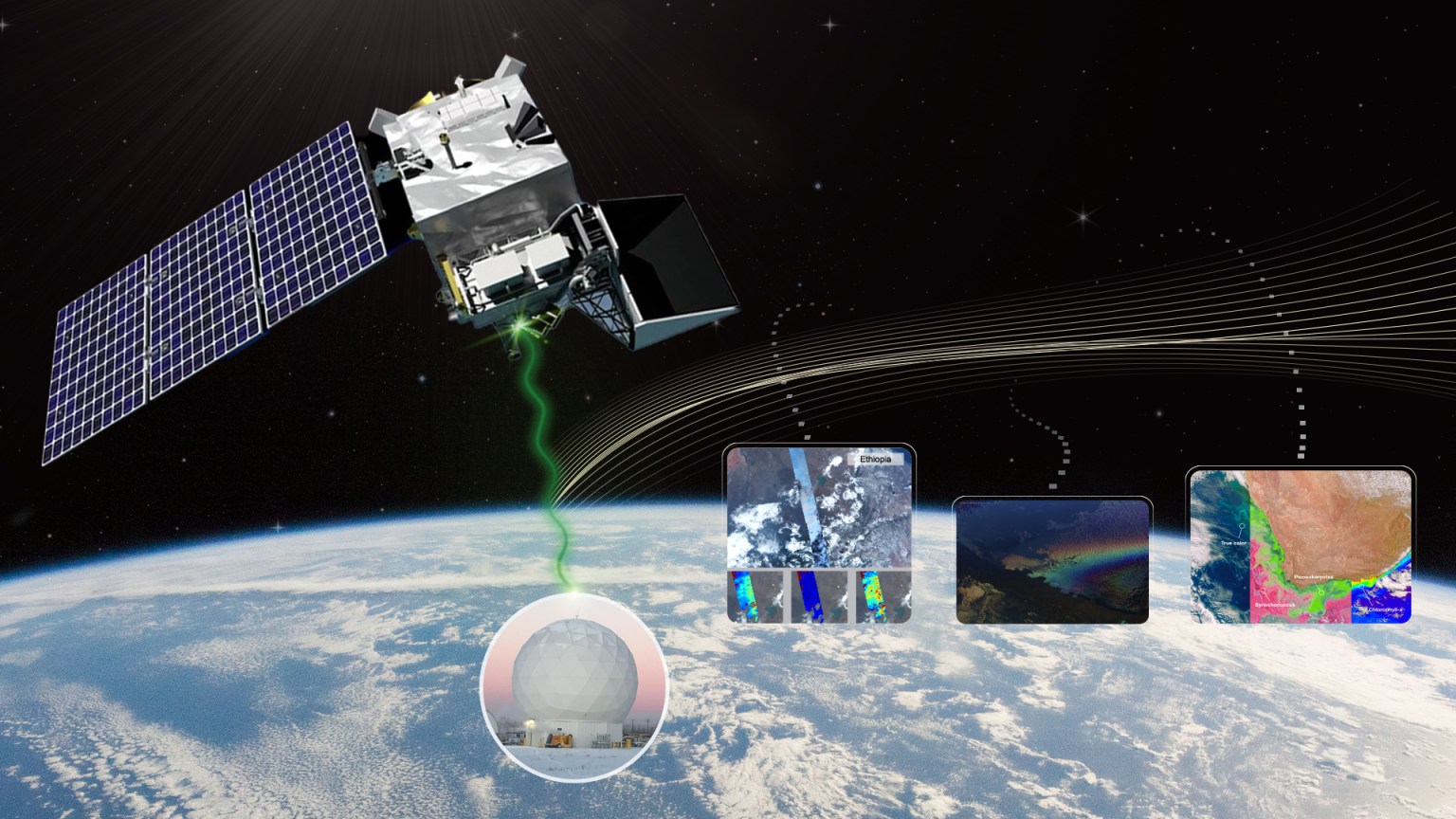
Katherine Schauer
The PACE ( Plankton, Aerosol, Cloud, ocean Ecosystem ) mission has delivered its first operational data back to researchers , a feat made possible in part by innovative, data-storing technology from NASA’s Near Space Network , which introduced two key enhancements for PACE and other upcoming science missions.
As a satellite orbits in space, its systems generate critical data about the spacecraft’s health, location, battery life, and more. All of this occurs while the mission’s science instruments capture images and data supporting the satellite’s overall objective.
To view this video please enable JavaScript, and consider upgrading to a web browser that supports HTML5 video
This data is then encoded and sent back to Earth via radio waves through NASA’s Near Space Network and Deep Space Network — but not without challenges.
One challenge is extreme distances, where disruptions or delays are common. Satellite disruptions are similar to what internet users experience on Earth with buffering or faulty links. If a disruption occurs, Delay/Disruption Tolerant Networking, or DTN, can safely store and forward the data once a path opens.
NASA’s Near Space Network integrated DTN into four new antennas and the PACE spacecraft to showcase the benefit this technology can have for science missions. The network, which supports communications for space-based mission within 1.2 million miles of Earth, is constantly enhancing its capabilities to support science and exploration missions.
DTN is the future of space communications, providing robust protection of data that could be lost due to a disruption.”
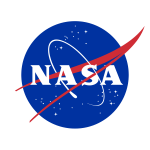
Kevin Coggins
Deputy Associate Administrator for NASA SCaN
“DTN is the future of space communications, providing robust protection of data that could be lost due to a disruption,” said Kevin Coggins, deputy associate administrator for NASA’s Space Communications and Navigation (SCaN) program. “PACE is the first operational science mission to leverage DTN, and we are using it to transmit data to mission operators monitoring the batteries, orbit, and more. This information is critical to mission operations.”
PACE , a satellite located about 250 miles above Earth, is collecting data to help researchers better understand how the ocean and atmosphere exchange carbon dioxide, measure atmospheric variables associated with air quality and climate, and monitor ocean health by studying phytoplankton — tiny plants and algae.
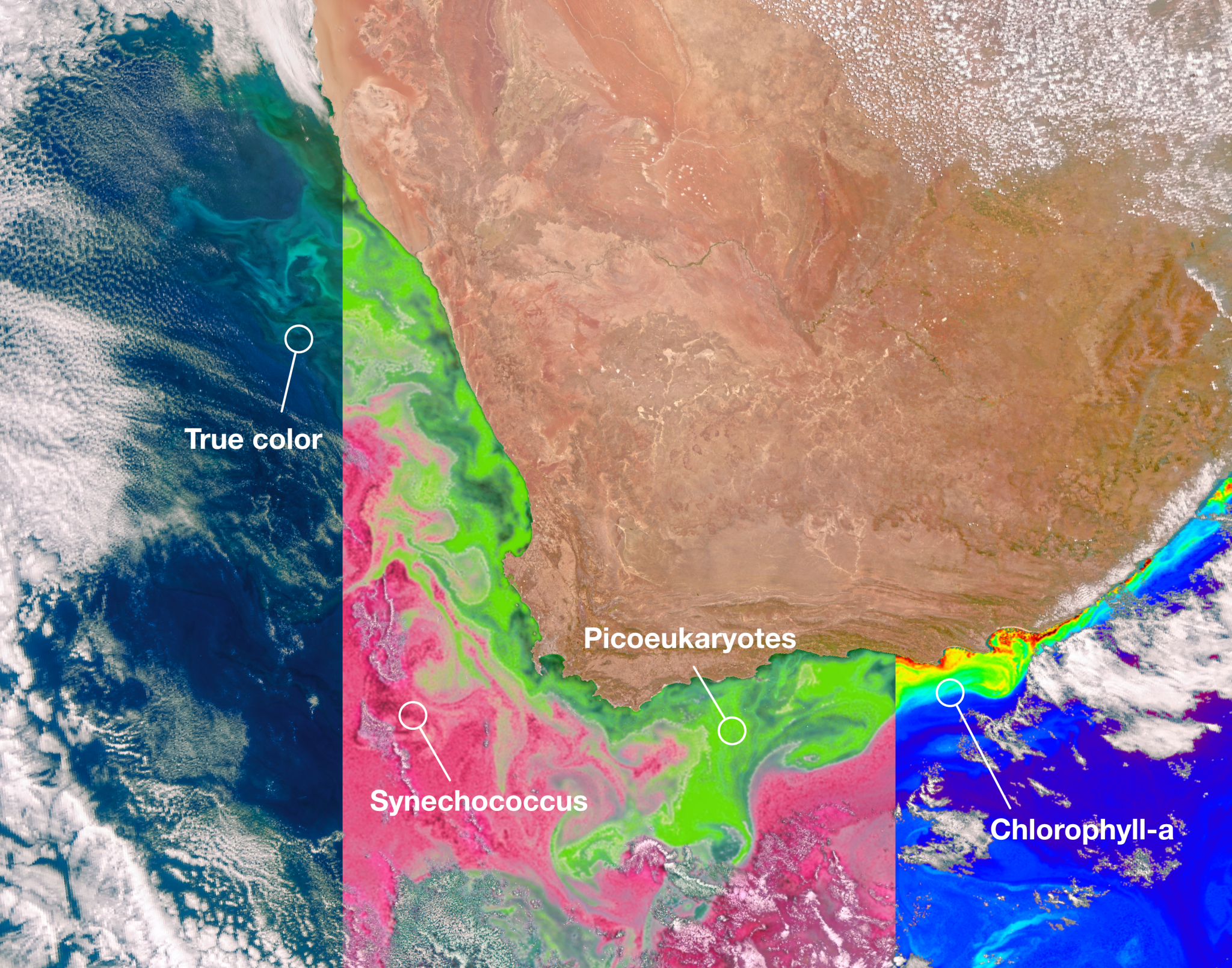
While PACE is the first operational science user of DTN, demonstrations of the technology have been done previously on the International Space Station.
In addition to DTN, the Near Space Network worked with commercial partner, Kongsberg Satellite Services in Norway to integrate four new antennas into the network to support PACE.
These new antennas, in Fairbanks, Alaska; Wallops Island, Virginia; Punta Arenas, Chile; and Svalbard, Norway, allow missions to downlink terabytes of science data at once. Just as scientists and engineers constantly improve their instrument capabilities, NASA also advances its communications systems to enable missions near Earth and in deep space.
As PACE orbits Earth, it will downlink its science data 12 to 15 times a day to three of the network’s new antennas. Overall, the mission will send down 3.5 terabytes of science data each day.
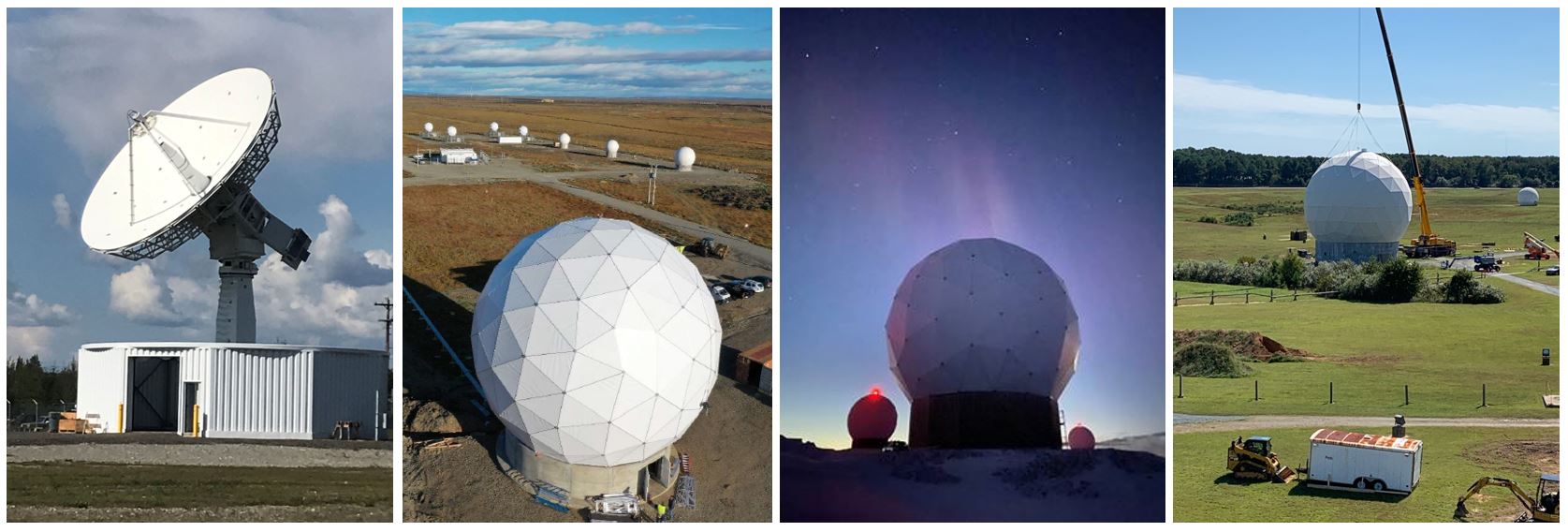
Network capability techniques like DTN and the four new antennas are the latest enhancements to the Near Space Network’s catalog of services to support science missions, human spaceflight, and technology experiments.
“NASA’s Near Space Network now has unprecedented flexibility to get scientists and operations managers more of the precious information they need to ensure their mission’s success,” said Coggins.
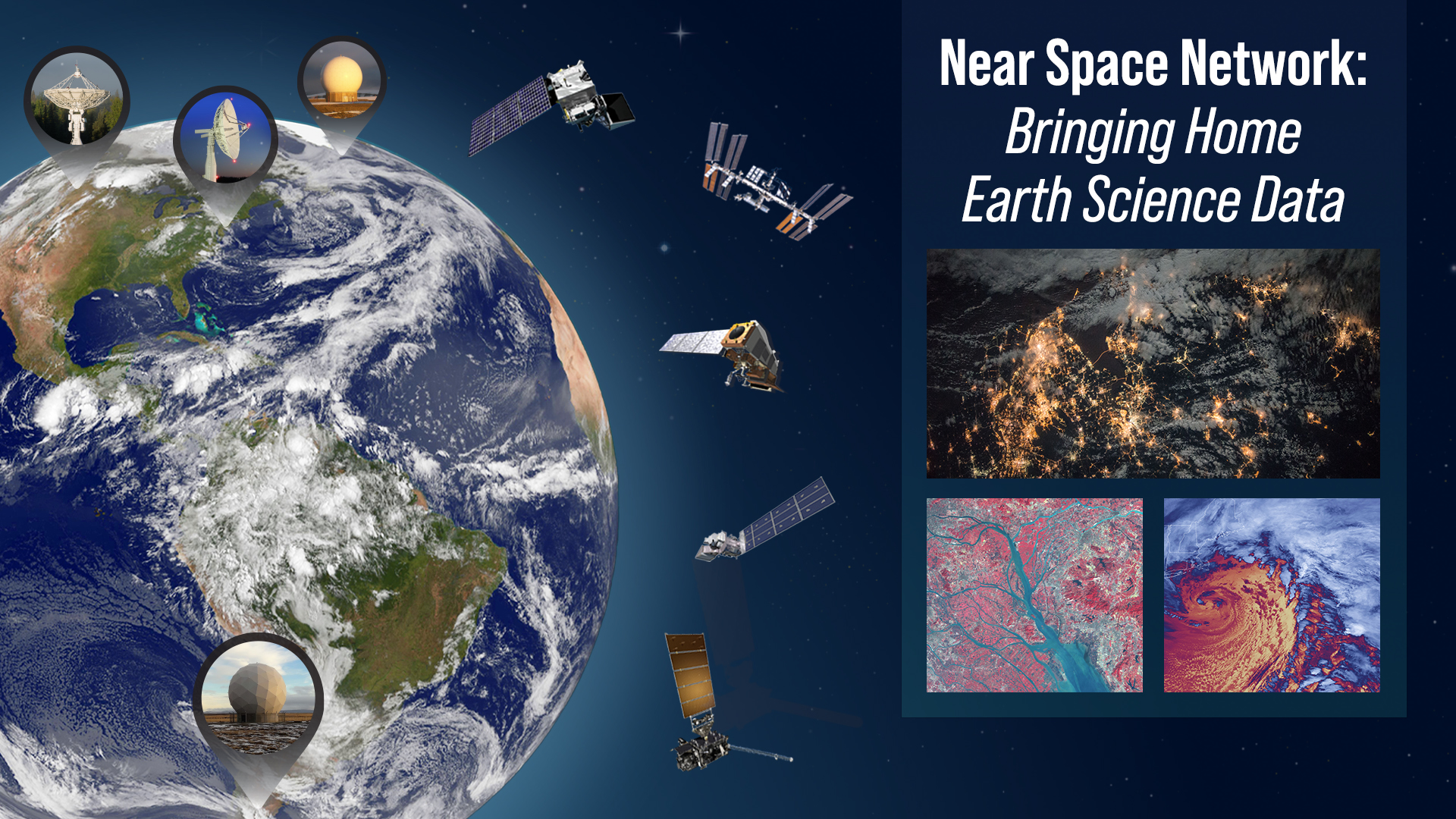
In addition to these new capabilities, the network is also increasing the number of commercial antennas within its portfolio. In 2023, NASA issued the Near Space Network Services request for proposal to seek commercial providers for integration into the network’s expanding portfolio. With an increasing capacity, the network can support additional science missions and downlink opportunities.
The Near Space Network is funded by NASA’s Space Communications and Navigation (SCaN) program office at NASA Headquarters in Washington and operated out of NASA’s Goddard Space Flight Center in Greenbelt, Maryland.
By Katherine Schauer NASA’s Goddard Space Flight Center, Greenbelt, Md.
About the Author

Katherine Schauer is a writer for the Space Communications and Navigation (SCaN) program office and covers emerging technologies, commercialization efforts, exploration activities, and more.
Related Terms
- Communicating and Navigating with Missions
- Goddard Space Flight Center
- PACE (Plankton, Aerosol, Cloud, Ocean Ecosystem)
- Space Communications & Navigation Program
- Space Operations Mission Directorate
Explore More
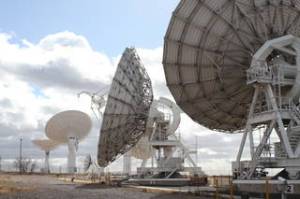
NASA Seeks Commercial Near Space Network Services
NASA is seeking commercial communication and navigation service providers for the Near Space Network.
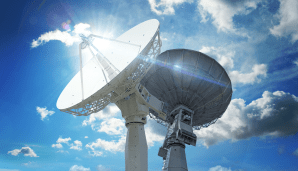
NASA Enables Future of Science Observation through Tri-band Antennas

Working in Tandem: NASA’s Networks Empower Artemis I

IMAGES
VIDEO
COMMENTS
Space Travel. The path to the Moon, Mars, and beyond requires technologies to get us where we need to go quickly, safely and efficiently. Space travel includes launch and in-space propulsion systems, cryogenic fluid management, and thermal management, as well as navigation and landing systems to get our supplies, equipment, and robotic or human ...
Everything you need to know about space travel (almost) - BBC Science Focus Magazine.
Space exploration unites the world to inspire the next generation, make ground-breaking discoveries, and create new opportunities. Technologies and missions we develop for human spaceflight have thousands of applications on Earth, boosting the economy, creating new career paths, and advancing everyday technologies all around us.
Travel to the Moon, Mars, and beyond will require new systems to provide medical care far from Earth. Learn more about the changes humans may undergo during spaceflight, as well as the steps NASA takes to keep astronauts healthy and safe. NASA astronaut and Flight Engineer Andrew Morgan flexes his muscles in an airlock of the space station.
The Commercial Space Age Is Here. Private space travel is just the beginning. Summary. In May of 2020, SpaceX made history as the first private company to send humans into space. This marks not ...
space exploration, investigation, by means of crewed and uncrewed spacecraft, of the reaches of the universe beyond Earth 's atmosphere and the use of the information so gained to increase knowledge of the cosmos and benefit humanity. A complete list of all crewed spaceflights, with details on each mission's accomplishments and crew, is ...
Private space travel. Since May 2020, SpaceX has been using its Crew Dragon spacecraft to ferry astronauts to space, some to the International Space Station (ISS) under contract with NASA and ...
20 Inventions We Wouldn't Have Without Space Travel. May 20, 2016. Space travel has given us a wealth of knowledge which has in turn helped us create inventions and technologies that have made human life easier and helped us learn more and explore further into the universe. Download JPG.
NASA has also thought about viable ways to reduce the time it takes to travel to Mars, including nuclear propulsion systems. As NASA advances its bold vision of exploration and scientific discovery in space, it benefits from 60 years of the safe use of nuclear power during spaceflight.
Space activities are essential to our way of life. They advance our understanding of the Earth, the universe, and humanity; enable U.S. national security; create good jobs and economic opportunity ...
Space exploration is the use of astronomy and space technology to explore outer space. While the exploration of space is currently carried out mainly by astronomers with telescopes, its physical exploration is conducted both by uncrewed robotic space probes and human spaceflight.Space exploration, like its classical form astronomy, is one of the main sources for space science.
Technological breakthroughs in reusable rocket technology, spacecraft design, and commercial spaceports have paved the way for a new era of space travel. As companies like SpaceX, Blue Origin, and ...
SpaceX has changed the spaceflight landscape during its first 20 years of existence. SpaceX's Starship is stacked atop its Super Heavy for the first time in August 2021 during tests of the new ...
After launch from the agency's Kennedy Space Center in Florida, Orion will travel beyond the Moon to a distance more than 1,000 times farther than where the International Space Station flies in low-Earth orbit, and farther than any spacecraft built for humans has ever ventured. To accomplish this feat, Orion has built-in technologies that ...
NASA's Artemis I Space Launch System (SLS) rocket launched at NASA's Kennedy Space Center on Nov. 16, 2022 in Cape Canaveral, Florida. Kevin Dietsch—Getty Images. S paceX has never been ...
Space tourism, once a mere figment of science fiction, rapidly evolves into a tangible reality, offering the most intrepid travelers an unprecedented opportunity to venture beyond Earth's confines.
Benefit overview. Service members and their families can use Space-A flights - formally known as Military Airlift Command or MAC flights - to travel around the country and world at a reduced cost or for free. Though sometimes unpredictable, military flights are perfect for families with flexible plans and limited travel budgets.
Space travel is just one example of humanity's ardent desire to understand this enigma, and it is so incredible to be alive while we are beginning to take these steps. Merely a decade ago, the ...
These eligible passengers can "hop" on the flights on a space-available (Space-A) basis. This is where the term "military hop" comes from. Because these are military, not commercial, flights, the military mission is always the priority. You may fly on a commercial plane, but you could also be in a cargo plane or fuel tanker.
Meanwhile, in 2026, the European Space Agency and a private company called Clearspace plan to launch a spacecraft that will use robotic arms to capture a 250-pound rocket part and safely tug it ...
NASA One Step Closer to Fueling Space Missions with Plutonium-238. 2 min read. The recent shipment of heat source plutonium-238 from the U.S. Department of Energy's (DOE's) Oak Ridge National Laboratory to its…. Article.
A new experimental mission by NASA is now flying in orbit, aiming to use photons from the Sun to propel its way to higher altitudes. Update: April 24, 8:33 a.m. ET: Rocket Lab's Electron blasted ...
The following space-age tech inventions and technologies are great examples. This list is far from exhaustive and is in no particular order. 1. Memory foam was originally used to protect ...
Forecast revenue of orbital space travel and tourism worldwide 2021-2030; Amount invested globally into space companies by venture capitalists 2013-2022; Equity investments in space companies worldwide 2013-2022, by type; Share of investment deals in space start-ups worldwide by company in 2020;
Last week, my wife and I embarked on a special outdoor adventure. By the numbers, it wasn't that impressive — a 2.3-mile, 300-foot "hike" up to the Baldwin Hills Scenic Overlook. It took ...
By Daniel Binns, business reporter. One of the top stories shaking up the markets this morning is that UK-based mining company Anglo American has rejected a major $38.8bn (£31bn) takeover bid.
Space Travel The path to the Moon, Mars, and beyond requires technologies to get us where we need to go quickly, safely and efficiently. Space travel includes launch and in-space propulsion systems, cryogenic fluid management, and thermal management, as well as navigation and landing systems to get our supplies, equipment, and robotic or human ...
1. The Basics. At its simplest, space communications relies on two things: a transmitter and a receiver. A transmitter encodes a message onto electromagnetic waves through modulation, which changes properties of the wave to represent the data. These waves flow through space toward the receiver. The receiver collects the electromagnetic waves ...
Notably, Boeing's space division operates separately from its embattled commercial airline team, and officials at NASA and the US aerospace giant have routinely sought to make that distinction.
"DTN is the future of space communications, providing robust protection of data that could be lost due to a disruption," said Kevin Coggins, deputy associate administrator for NASA's Space Communications and Navigation (SCaN) program. "PACE is the first operational science mission to leverage DTN, and we are using it to transmit data to mission operators monitoring the batteries, orbit ...